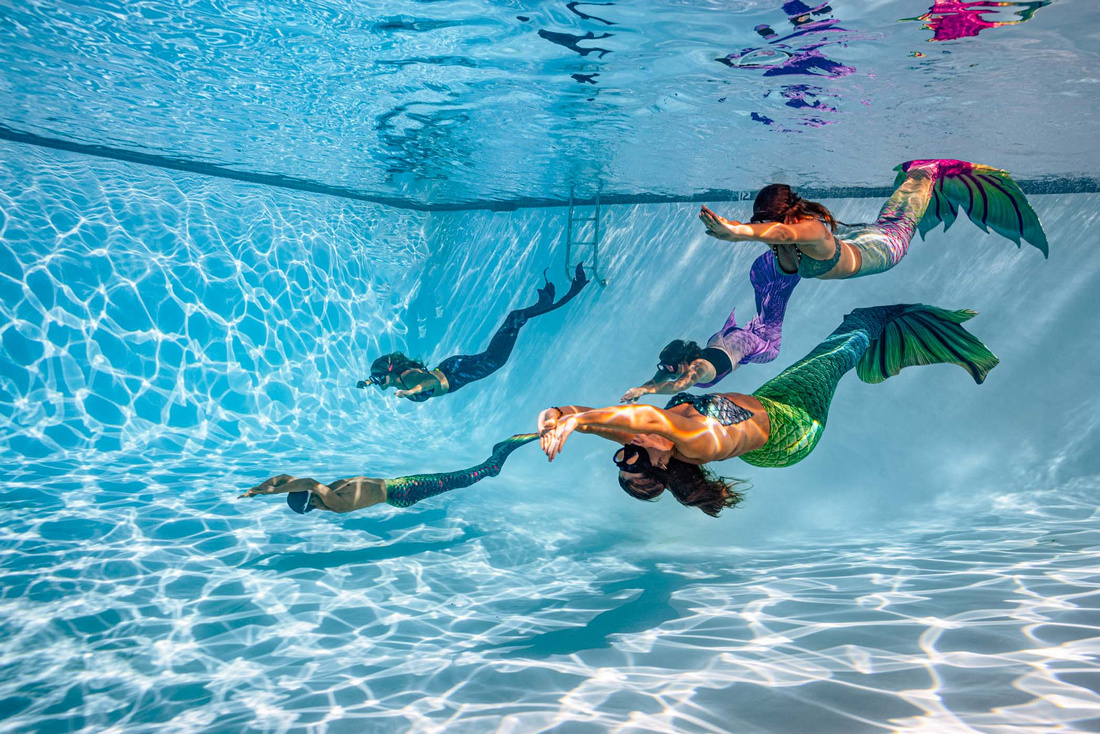
Take a bit of fantasy, roll in some cosplay, a dash of whimsy and then stir in a serious amount of athletic skill and dance prowess -- the result is mermaid diving. Well, merperson diving, but everyone knows what a mermaid is, so male or female we'll go with that. If mermaid diving has been below your radar, check out this and this -- it's a genuine diving-dance-artform that's rapidly growing in popularity.
As you might imagine, imagers love shooting mermaid divers, and in fact have been doing so for some time. My team produced this shot in 2009

as a cover for the Undersea Journal. But what is new is how fast mermaid diving's becoming popular, which broadens the opportunities for people like me who love to shoot photos of them. These talented divers are PADI Mermaid Instructor Trainers – the teachers who teach the teachers – showing us that whatever one's first impressions are, not only is mermaid diving a camera-worthy expressive team underwater ballet but a
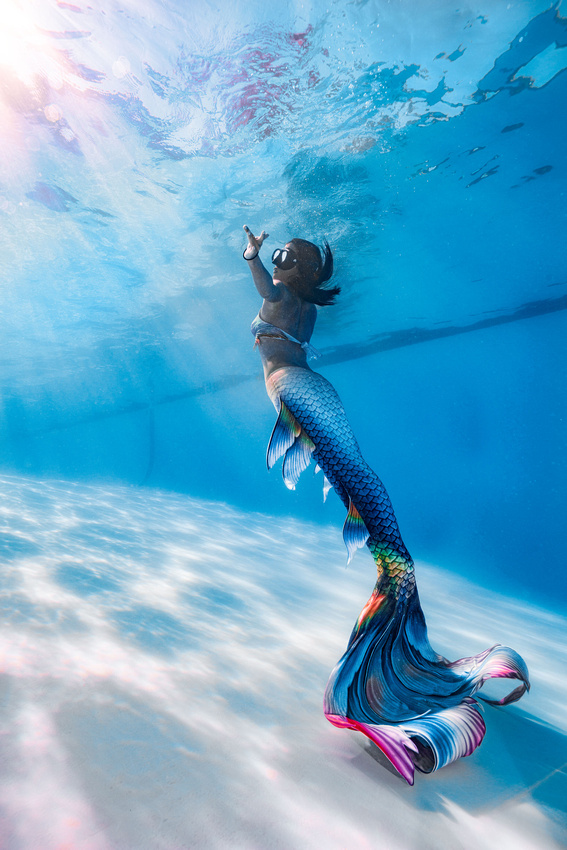
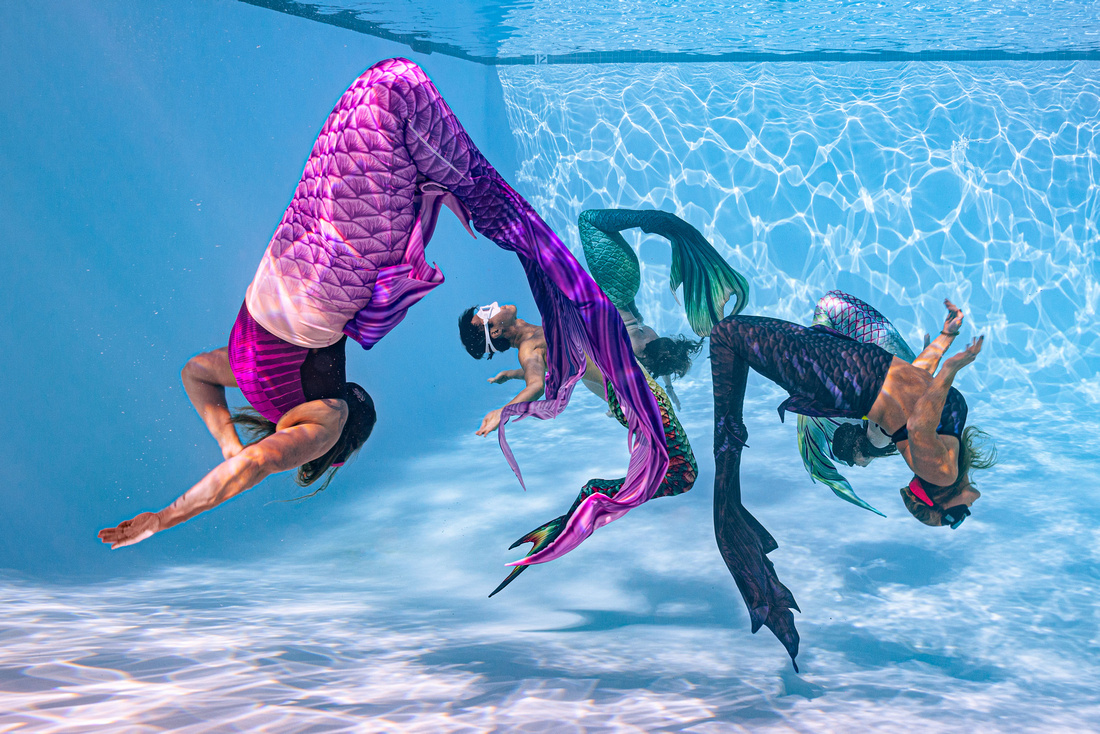
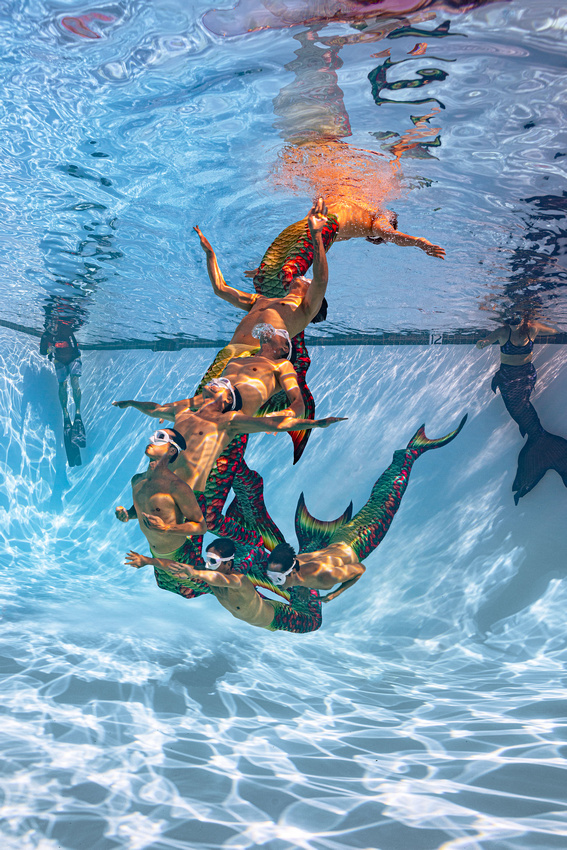
genuine athletic endeavor that requires grace, body control, swimming ability and focus. It's something anyone can do and enjoy, yet spend years improving and mastering. If you've ever wished you were a fish give it a try.
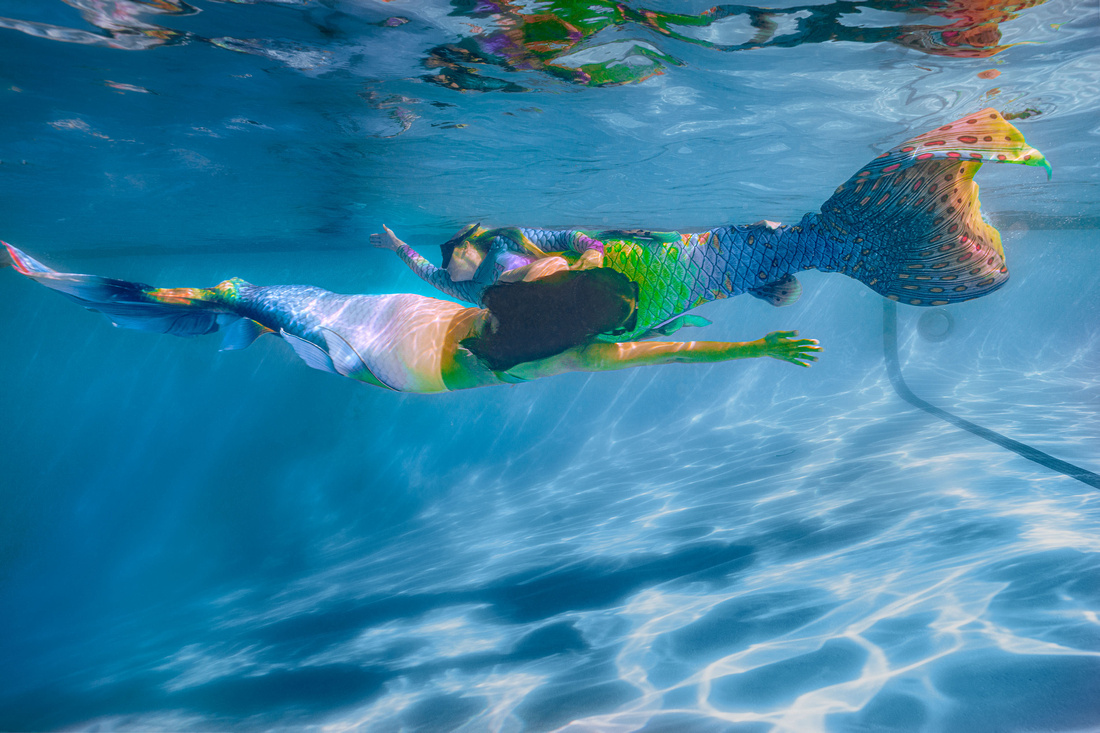
Then maybe we can shoot something cool.
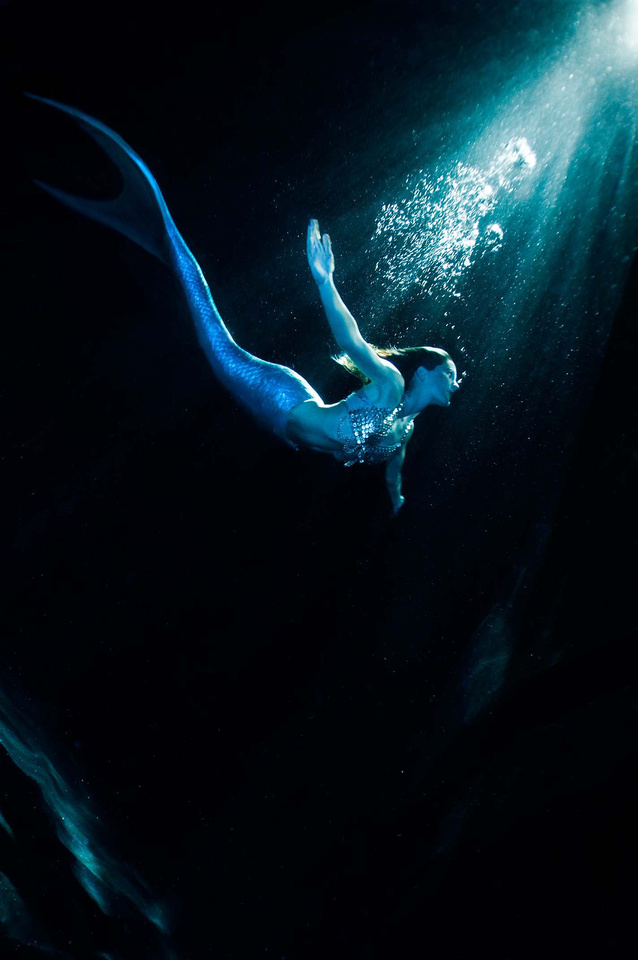
]]>
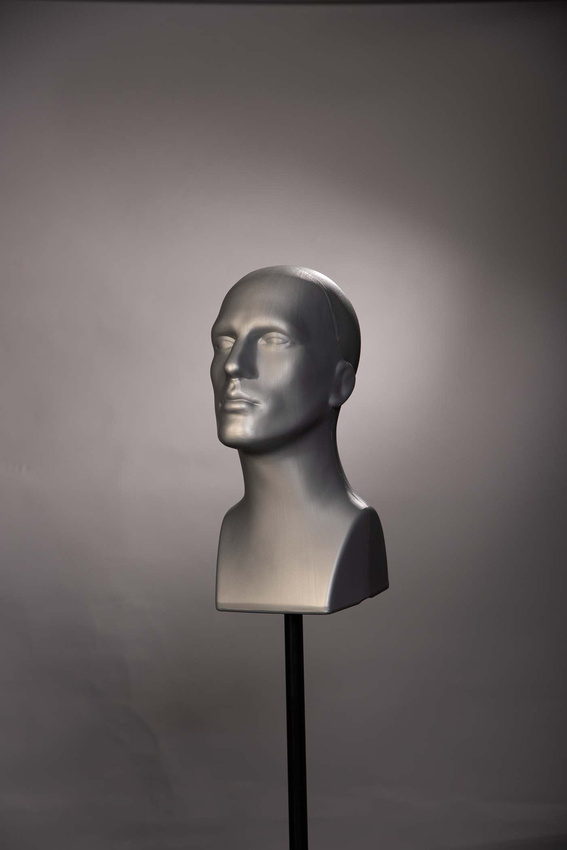
Those who follow my blog will remember Headly, my head assistant. In the blog I wrote about Headly, I said that he never says anything. I was mistaken.
He actually says a lot.
A few days ago we were in the studio doing a portrait lighting refresher/101 with staff and intern, and I made the point that if you know how to light, you should not need the camera until you're set up. You set lights where they need to be in terms of distance, height and angle. You determine the exposures of the key, fill, kicker and background lights. Then, you set the camera – you tell the camera the exposure, not vice versa – and use the image for refinements.
To this end, we set up studio strobes for classic 45 degree lighting, 2:1 ratio, determining the exposure with a flash meter. Only after everything was set up did we pick up the camera and shoot Headly, who had been very patiently standing in for us. This is the first shot, straight from camera with no cropping, adjustment or refinements.
This is when Headly speaks. Looking at the shot, Headly told us that the exposure was spot on. The backlight was about right but could be adjusted for less spill on the left. The key light should go up just a bit higher, but not much. Kickers usually need adjustment for each person due to hair color and male pattern baldness anyway, but we had it at a good start position and exposure. He also told us that we had the color right for the subject, but that we'd have to adjust the background color in Photoshop – it was a little red. (Since the color was right for Headly, tweaking in PS is the best correction option).
Not lost for words, Headly told us other things as we moved lights to play with exposure and lighting styles.
Besides a photo lighting assistant, Headly proved a great teaching assistant. When I teach lighting, I don't follow the traditional approach of starting outdoors in natural light and then gradually adding lights and working students into the studio. As an instructional designer, that's backwards to me. I've found that if you want to learn lighting, start in the studio with the four basic lights. It's the best way to fully understand what each light does, ratios, modifiers, etc. Only after you understand these does everything else you learn about lighting make sense.
And if you have Headly, so much the better.
]]>
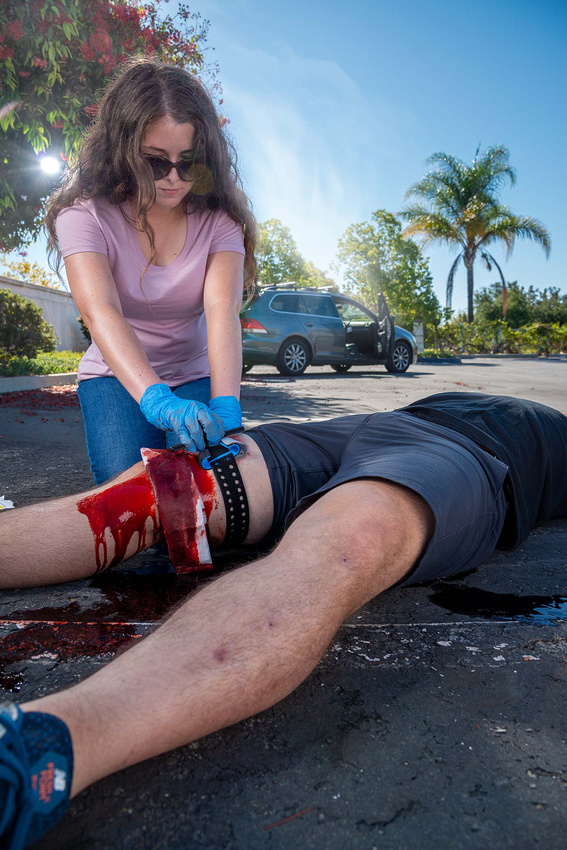
Layperson first aid teaches that if you have to handle severe, life-threatening bleeding that you can't control with direct pressure and pressure dressings, one option may be to use a tourniquet. So, for training purposes, I was asked for shots showing commercial and improvised tourniquets, how to use them, and a realistic scenario with a rescuer using one.
Realistic, but not repulsive. Heaving lunch almost certainly interferes with learning.
The challenge (and fun, if I'm honest) in shooting these was the blood -- we used LOTS of blood. As in, all over the ground, the talents' legs, arms, clothes, soaking through bandages and then some. It was everywhere and on everyone. Why? Because unless someone's bleeding this much, you don't use a tourniquet. Tourniquets hurt big time (I'm told) and can cause permanent tissue damage, so they're reserved for when the patient's bleeding so much they might die, and previous steps aren't working.
This actually simplified things in one respect. Because gauze/pressure bandaging would already be in place before using a tourniquet, we didn't need to somehow degrossify a grisly wound spouting like a crimson Old Faithful. So, no visible wound, but still a LOT of blood. In fact, I've used theatrical blood for first aid shots before, but this was the first time we ordered a gallon. Most types of theatrical blood (there are dozens) clean reasonably easy, but a gallon used over the course of several shots presented a new challenge. To help keep things from progressing beyond cleanable, we had the talent wear old (i.e. tossable) clothes, nixed the original idea of a wood shop scenario in favor of staging everything outside. Good call – when we wrapped shooting, we just hosed things down as best we could and let nature do the rest (most theatrical blood is reasonably biodegradable). Everything worked so well that other than the usual adjustments, the main Photoshop work was putting steam/smoke around the "wrecked" car -- I didn't have to enhance or edit the tourniquet, wound or amount of blood .
I was happy with what we got, but there was one lingering detail. Theatrical blood washes away fairly well, but many types stain . It was a few days before people stopped asking why my hands were red.
]]>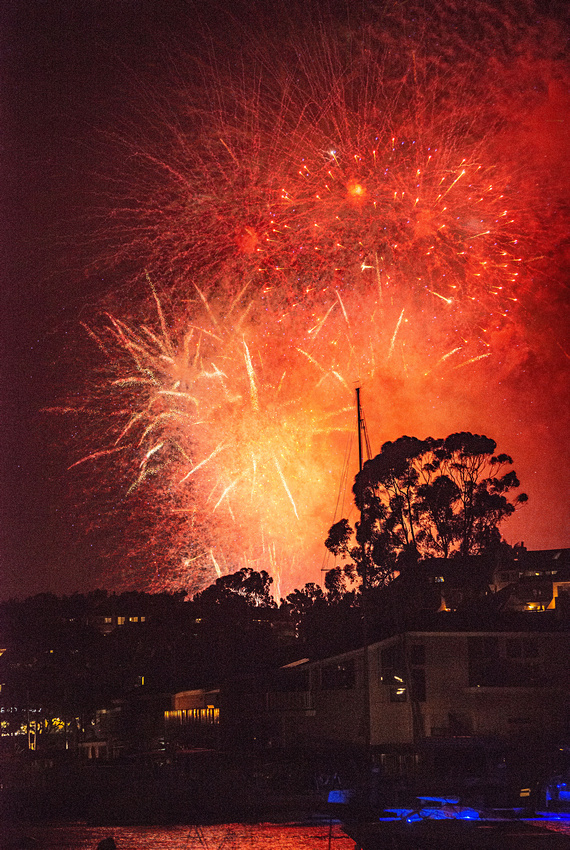
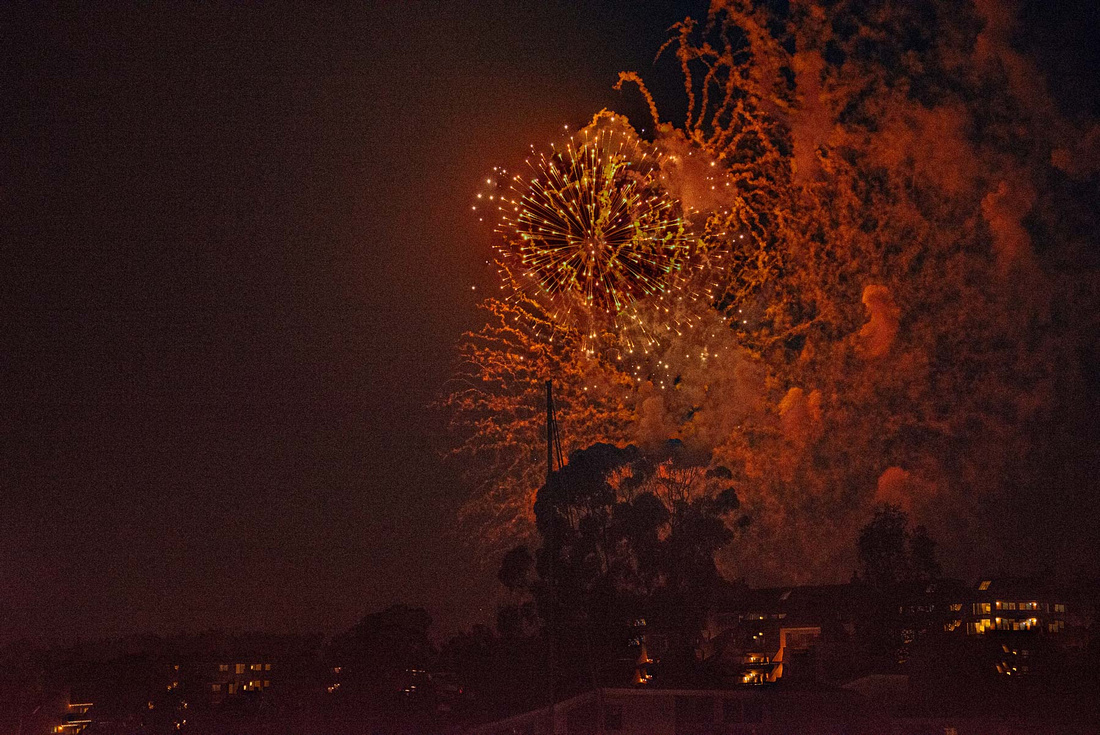
There are lots of photos of fireworks -- lots of people take them. But to me, most firework photos don't look like fireworks really look. The typical firework photo's taken with the camera shutter dragging (open a long time) and the result is pretty, but the pyrotechnics look like giant blossoms hanging peacefully in the sky. When I looked at my firework photos shot that way, I always asked myself, "Where's the action?. Where's the dramatic excitement as explosions reverberate in your chest? Why can't I 'smell' the distinctive acrid smoke that drifts over us?" It seemed that short of video, I should be able to create a still that has more sense of the real thing.
So, I created another way and these are some examples of the result. These are more like what I was going for, implying motion, bursting, explosion and haze. For any serious shooters reading this, I don't drag the shutter -- these were shot at ISO 5000, 1/250th of sec f5.0. But, even that doesn't look right as a single frame. Both images are composites of a series taken quickly -- click, click, click, click, click -- while locked down on a tripod. In Photoshop, I align and blend them (well, Photoshop blends them -- for these, autoblend works really well), then crop for the finals you see here.
I'll leave it to you whether you like these better, the same or not at all, but at least they're a bit different.
]]>
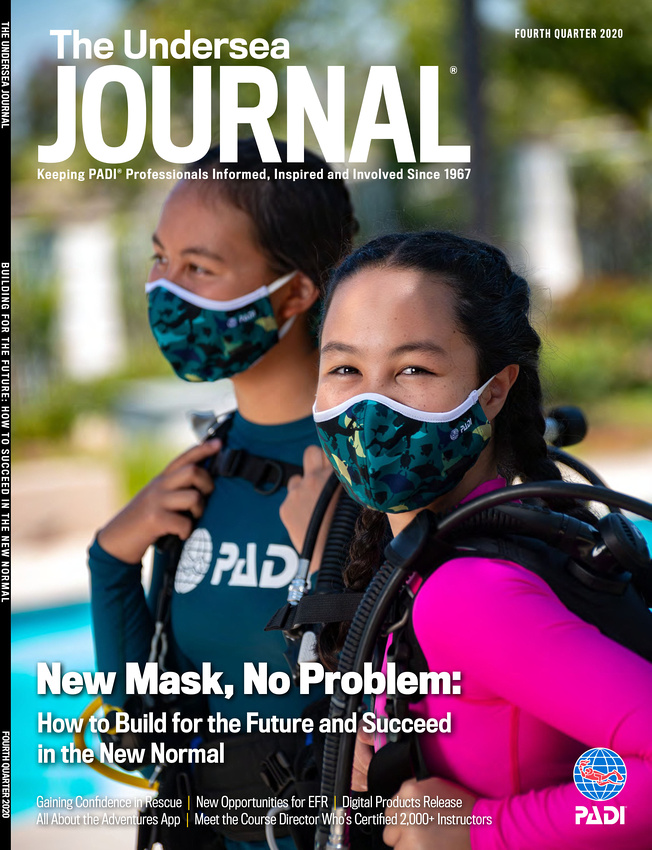
Ask people to describe a smile, and typically you hear about mouths – that the ends curve up, that a big grin shows teeth, etc. It's funny, though, because while that happens, that's not really where we smile – or show anger, grief, amusement or any other emotion. It's our eyes that tell others what we're feeling. It's how we can discern fake smiles from real, and teasing from genuine anger. Without words, our eyes reveal cowardice or confidence.
In this shot, the girls are unquestionably smiling real smiles. Forced grins would have been invisible, camouflaged (pun intended) by the masks, yet because we see their eyes, we're reminded that even amid COVID, we find ways and we find joys. We don't need to see their mouths to see their mirth in this moment.
English novelist Samuel Richardson said, "Where words are restrained, the eyes often talk a great deal." In a still photo, words are entirely restrained, so eyes do all the talking.
]]>
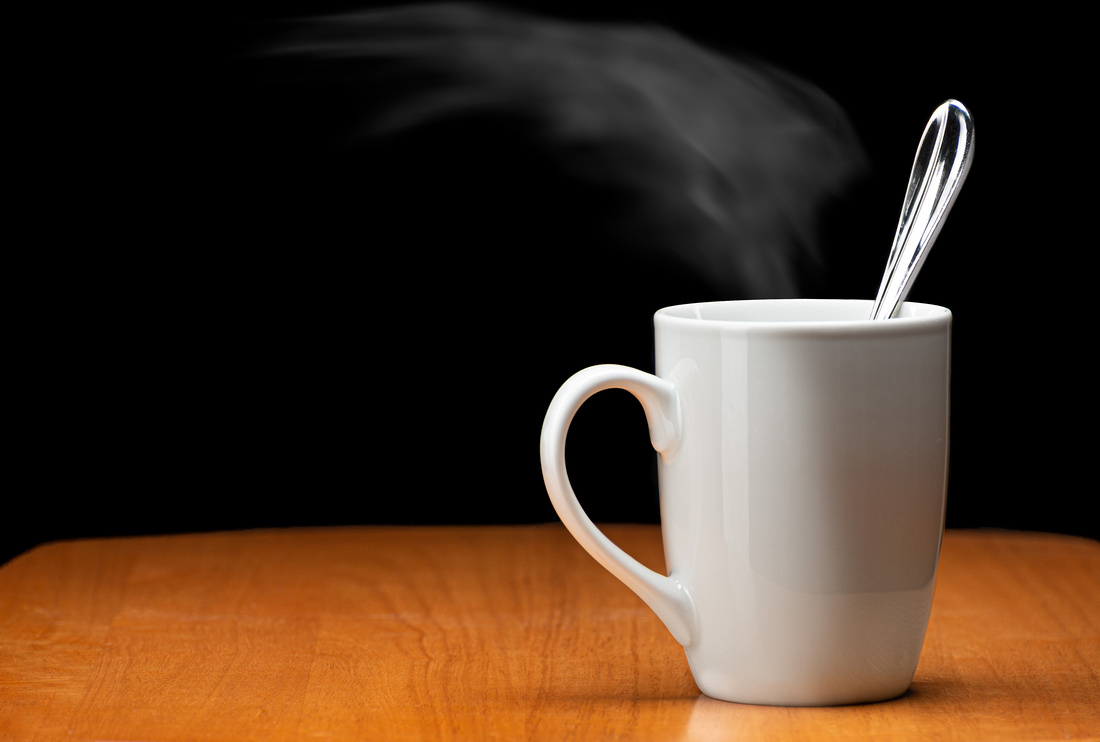
The shot we needed was a steaming cup of coffee with a spoon. Someone might think, "Just pour a cup, snap a shot and be done," right?
Well, not if you want a good shot. If you want something better than the all-too-common amateur cellphone-snap-look, the lighting on the spoon, table, steam and cup have to differ a good bit. Lighting this in the studio requires multiple soft and hard lights, each with numerous flags, grids, snoots and gobos to control what gets lit and how. Then, you pour hot coffee to get the steam rising – again, and again and again . . . because steam and smoke can be shot well, but it takes time, patience and trial-and-error. A lot.
But, thanks to COVID, I couldn't do any of these this time. Home-officing it, I lacked access to my usual studio, as well as the Speedotron lights and modifiers I'd typically want. But thankfully, I only had one shot and had access to other lighting. Instead, I shot this in my living room using only two Godox strobes and a few modifiers.
If you know lighting, though, it looks like there are at least three soft lights and two hard lights. That's because this image is actually a composite of five shots, each lit separately for the spoon, table and cup, plus for fill and highlights. After shooting these separately, I combined them in Photoshop using just the part of each shot I needed to get the exact same look that I would have gotten in the studio using the Speedotrons etc.
If one were to think that now there's no need for the studio and other lights, surprisingly, they would be mistaken – for at least three reasons. First, you have to be able to do it as a single shot, or you won't know how to shoot it as a composite. Second, compositing like this is somewhat faster (not easier, btw) for one or two shots – but if you need more than that in the same lighting (common when shooting professionally), it's way faster to use the studio and set all the lights once. Third, compositing like this works only with still life and a locked down camera. Within reason, you can't shoot anything that moves this way.
Oh, what about the steam? I almost forgot.
No steam. I created it in Photoshop. In fact, I didn't even use coffee. Why waste a good cup of joe?
]]>

When I was asked to do a portrait for Ernie Brook's DEMA Reaching Out Award, I'll admit I was intimidated. While I'm pretty confident in my abilities as a shooter, he's, well, Ernie Brooks. The Ernie Brooks -- one of diving's most noted photographers. One of photography's most noted divers. The son of the founder of the famous Brooks Institute of Photography, and later, president of it for almost 30 years. That Ernie Brooks – one of my heroes when I was still figuring out which side of the camera to put the lens on in my late teens. He's forgotten more about photography than I know . . . now he's going to sit for me.
Needless to say, I (we, actually – thank you, Dawn, for everything you do to make me look good) wanted to make an image worthy of such a worthy image maker, at least as much as I could. I started with this: Have him pose with an old film era Nikon and well-worn Tussy housing my friend Budd has. It would be so . . .
Cliché.
Cliché.
Cliché.
No way I'm doing cliché for this.
Until the day before, I didn't know where to go with this. But much as necessity is the mother of invention, desperation is the father of inspiration and when Ernie showed up to shoot, I (we, again) knew what we wanted. Then we shot. Photographing a photographer tends to be either very easy or very hard, and thankfully Ernie is very much the former. First shot to final took less than 10 minutes – a testament to Ernie's expertise because he knows what the camera likes.
Our concept evolved as we shot and later in post, but I'm pleased with the result. Actually, more than pleased. Shooting it was a privilege. And, I think it's one of my best.
Thank you, Ernie.
]]>
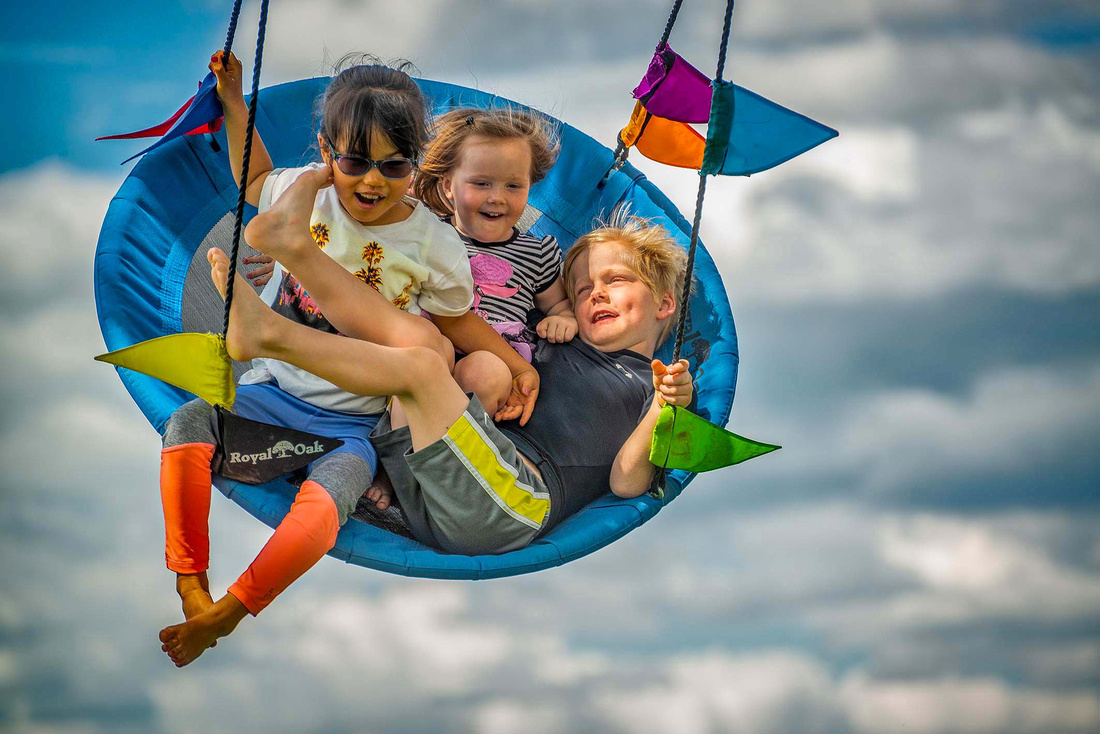
No, this is not another rant about how Photoshop is a harbinger of the apocalypse and will be the end of life as we know it. I like Photoshop. I use it and (I'm told) I'm pretty good at using it for some heavy-duty photo manipulation and construction (like this one).
But, I've discovered, my ability with Photoshop comes with an annoying problem, and here's a typical example: When friends of mine saw this image, many (including skilled photographers) complimented me on how well I dropped the dramatic sky in behind the kids. Wow, that was very kind and I always appreciate compliments, but, uh . . . . that's the sky that was there. I didn't composite in a new one.
Yes, I did use Photoshop (along with high speed synch flash) to balance the sky's brightness with the swing's, and of course to generally adjust color, exposure, etc., etc., and that's why it's so dramatic. But there's no photo sleight-of-hand (tip of the hat – sans rabbit – to photographer/magician Scott Tokar there) going on. That said, I'll admit that it does look like the background was dropped in, mainly because it's not typical to get a sky's lighting to match the subject so well.
If I were to do this over, I'd be tempted to go the other way and let the sky be a bit overly bright and a bit flat (grayish), just so it looks like what you expect in a photo. It seems that even with new technology improving the brightness range we can capture, people still expect the old blown-out (i.e. too bright) sky of a "real" shot like this would have. I'd guess this is partly because we're not yet used to the latest photo capabilities, but also because of millions of snaps made daily that don't even attempt this kind of dynamic range.
So, I'd be tempted . . . but nah, I'd do this way again.
]]>

There's no denying that the camera is one of the most important advances in imaging. As pointed out by painter and art blogger Jim Lane in 1999, along with paper and oil paints, the camera changed art forever (with the camera obscura well before the invention of film) by teaching us perspective and creating the illusion of depth in two dimensions.
But, have you ever considered the camera as art itself? Like the automobile, it is a beautiful technology with an evolution that reflects more than functional advancements. Over time, camera materials, colors and feels changed along fashion and aesthetic lines not only to make cameras more capable, but to match contemporary design trends. Check out this link that shows the evolution of Nikon alone – and other brands like Canon, Sony, Minolta etc. evolved similarly, each both following and leading to the beauty of photo technology in its own way.
As an accidental camera collector (I didn't mean to start collecting cameras; it just kinda happened) as well as a shooter, I have cameras ranging from the rudimentary models of the late 19th century (my collection includes one of the first commercially available cameras) to the sleek, high-performance DSLRs we use today. Each has a story about who we were and who we are, not just as photographers and snap shooters, but as cultures and societies. To go with my displayed cameras, I shot this macro image of an early 1920s folding Kodak. This camera could never be created today, yet it has an elegance that modern cameras lack. Its brass, leather and steel remind us that we didn't always have plastic and aluminum (for better and worse).
It reminds us that while technology and how we express beauty with design and imaging change, beauty itself endures.
]]>
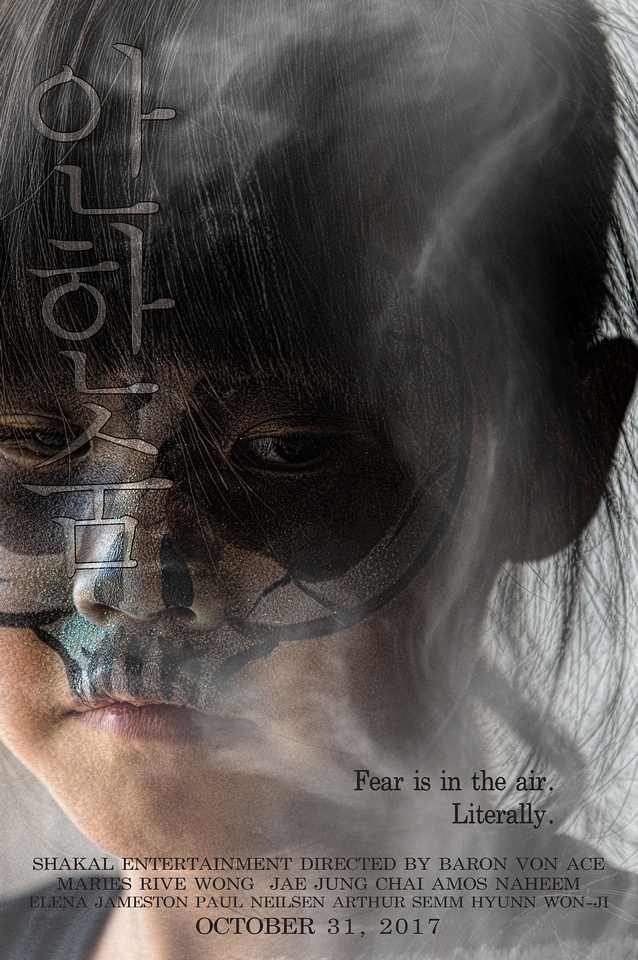
The contest was to create a fictitious horror movie poster. It's an acceptable work (at least in my biased opinion), but I am glad it didn't fare better in the competition. Let me explain.
Rewind several years. I've never been big on photo contests, but I've entered them, primarily to stretch myself. One thing you learn is that judging may seem arbitrary, or it may be very balanced and impartial, the latter primarily with trained competition judges. The former are the ones I've come to avoid, but now and again, I still succumb and try anyway, hence this rant.
It's not always a surprise when contest placings don't make sense. Looking at the results of a local, small community contest at a fair (I didn't enter this one), there were a lot of amateur cliché snapshots along with some wonderful portraits and interactive scenics with dramatic lighting. The winner? A cliché sunflower snap, ironically hanging right next to a far-better shot with dynamic composition that showed a working rancher backlit through haze. Not only didn't it even get an honorable mention, it was likely best of show (IMO). Amateur judges = amateur placings, so no surprise here. But, in other contests, the judges are supposed to know better.
A few years ago, I entered this shot into a portrait contest sponsored by a major photo magazine:
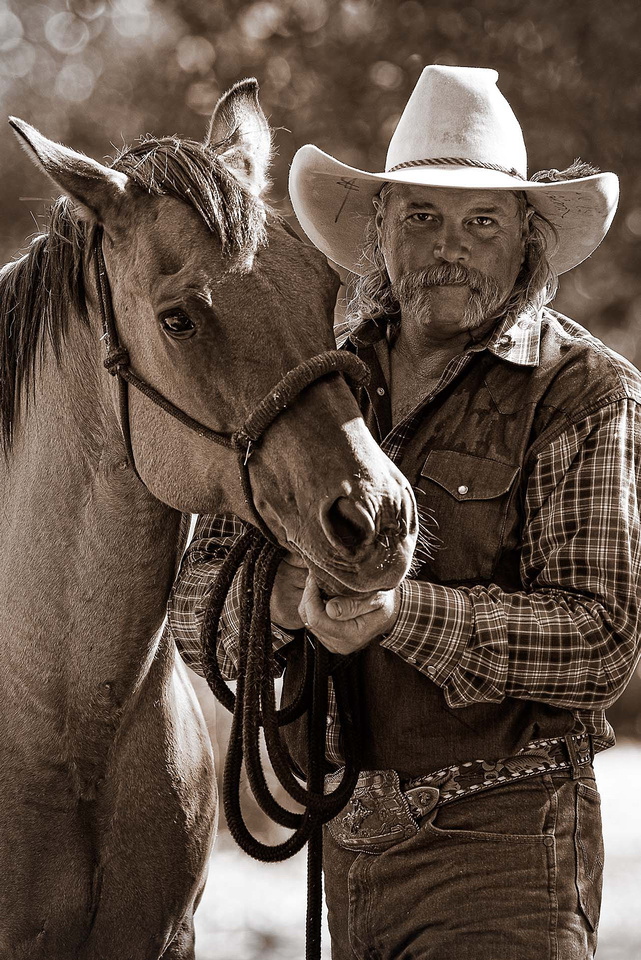
It didn't win, place or mention. As the contest unfolded online, they showed all the entries and there were far better portraits, so I knew I was appropriately out of the running. But, then they posted the winner, and that ticked me off – it was a slightly glorified snapshot not even close to many, many way better images. Even my entry was better. I'm not sure what tainted the pool, but I no longer subscribe to the magazine.
Earlier this year, I entered this shot in an informal contest promoted by a prominent photo art vlogger who would judge. No prizes or anything – he just shows and discusses the ones he likes in his video blog. The contest challenge was to do something that illustrates the color "red."
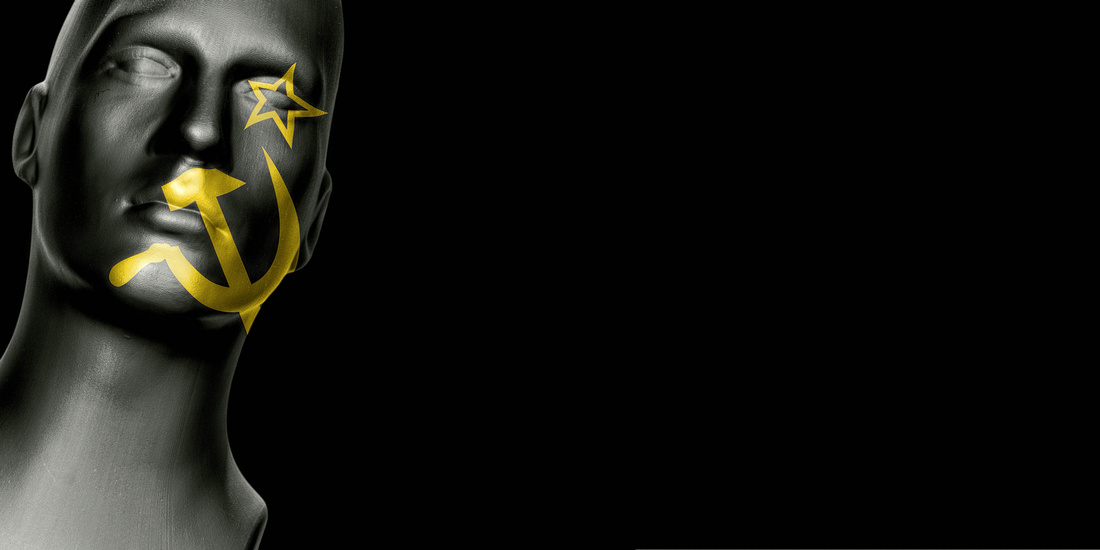
This I upped for myself with this thinking: Most people will lean on the color, so can I illustrate the concept of "red" without using the color itself? My able assistant Headly posed for me as I juxtaposed the former Soviet Union flag over him, the concept being to characterize the bleak, dark impersonal nature of the Soviet system. The well-known flag would make "red" obvious even with the color itself missing.
Or not. As I watched the vlog with the posted results (which excluded mine, of course), every shot had the actual color red, with some (to my eyes) cliché and not particularly noteworthy. But, the vlogger's a heavyweight voice in the photo art community, so I'm not knocking this. What do I know about that world? Not much. So, I realized that my photography differs significantly, making my shot a big mismatch – or maybe it just doesn't work at all – so my bad either way. I no longer follow his vlog – not out of anger, but because it doesn't pertain much to what I do.
This brings us to the movie poster contest by phlearn.com. My entry didn't place or mention, but that's fine:
1. IMO, my poster isn't bad. I'm satisfied with it, but it's more of a thriller movie poster than a horror movie poster. (The title is, loosely, "Don't Breathe" in Korean, btw).
2. There were many, many entrants that fit "horror" better.
3. All the winners and mentions were excellent work. The judges chose well (click the link to see them) and while anyone can debate the rankings, I don't think anyone can say a clearly inferior work ranked inappropriately.
So, thank you, Phlearn, for a contest I don't contest, protest or detest.
]]>
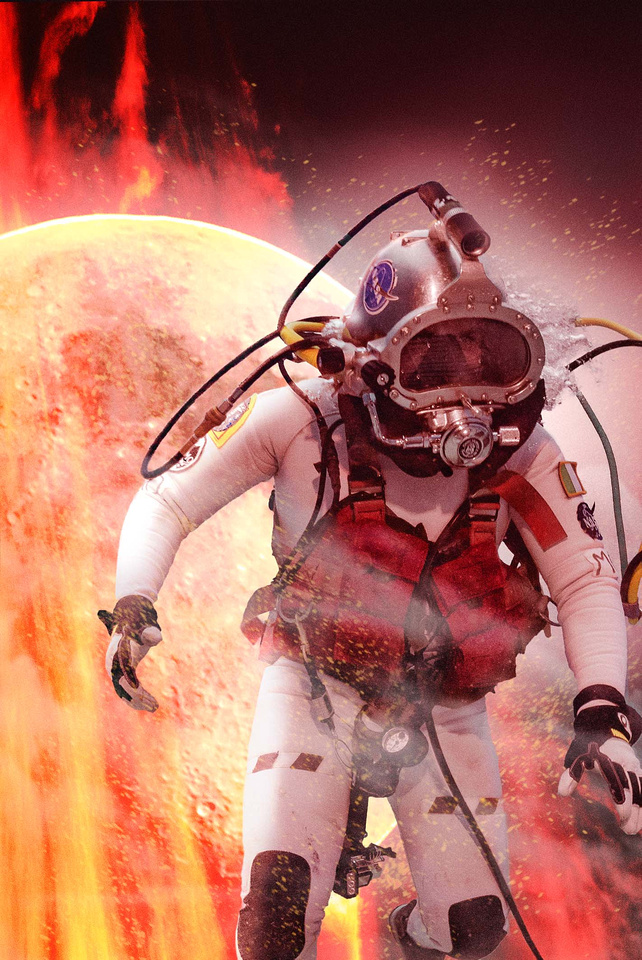
As Dr. Marc O'Griofa, an aquanaut in the 2016 NEEMO 21 mission, conducted science on the seafloor, a frame I captured just screamed movie-style action hero poster to me. This wasn't something I'd been asked for as part of my mission support duties, but sometimes you get inspired and you just have to run with it.
We all know action hero posters when we see them -- like the Dark Knight, Ironman or Lara Croft. In fact, in almost any culture and even in a language you don't speak, you still know action hero posters. Even posters for movies that have action and heros, but aren't really "action hero" movies have the look -- like Gravity. So, what is this look that makes action hero posters obviously action hero posters? There are at least ten characteristics common in action hero posters. Master Photoshop artist Dom Quichotte identified eight in his FXray Superhero tutorial (with some of my elaboration):
1. The hero holds a weapon or a technical tool
2. Smoke, fog or clouds
3. Flying debris
4. Sparks
5. Edge lighting on the hero
6. Dark buildings or other dark structure in the background and/or foreground
7. Rain
8. Fire or explosion
The last two, which Quichotte didn't mention (but are in his tutorial image) are:
9. Specialized clothing (e.g., superhero costume, technical/functional wear or other distinct wardrobe)
10. Hero either in action, giving defiant expression, or both
Most action hero posters don't have all of these, but they do have most of them, with defiance and/or action the one that seems universal. Click some of the links above: The Dark Knight has all but rain and holding something. Ironman has all but the buildings and the rain. Lara Croft is on the low side, but still has the weapon, edge light, specialized clothing and defiance, plus you could argue whether the ornate 3-D logo qualifies as dark structure, and the texture is similar to smoke. Gravity has more than Lara Croft: smoke, flying debris, edge lighting, dark foreground structure, explosion, specialized clothing and hero in action.
And that brings us to our action hero, Doctor Marc. No weapon or tool in hand (though clipped to his harness), but smoke and fog, sparks, edge lighting, fire, specialized clothing and he's clearly in action. Although I didn't manage the dark buildings, putting the moon behind him seemed a better fit anyway, considering he was doing research that will help us explore space. Although I did this just to stretch my creative legs, my action hero poster seemed well received by the NEEMO gang, and Marc seemed to get a kick out of it.
The real movie posters are, admittedly, better and more detailed, plus have the glamour, talent and stunning looks of Christian Bale, Robert Downey Jr., Angelina Jolie and Sandra Bullock. But, even with all that, my action hero poster has them all beat because it has the one thing they all lack (though Marc would try to deny it):
]]>
But, there was a challenge. While I've recently been shooting a lot to help with NEEMO press coverage and in-house imagery, the majority of the work's underwater and I'm hauling dive gear, so I didn't have a lot of surface-side gear that I normally use for portraits on location. I didn't even get to bring Headly. But, being a pro shooter isn't about having everything you'd like to have at the moment you'd like to have it -- it's about knowing light then using what you've got to get the job done.
During a break in my duties, my solution (as it always is in these cases) was to find the light I needed and augment it with what I had (two speedlights). I kicked around the support facilities for FIU's Aquarius Reef Base, finally landing on some nice indirect sun just inside the door of a tool shed. But, before pulling Dawn away from what she was doing, I wanted some test shots. My friend Jason was wandering by and "volunteered" (minor arm twisting) to fill in for Headly. Although I hadn't set out to portrait Jason, even as we worked I knew I had something. After some light adjustments and post processing, we got this:
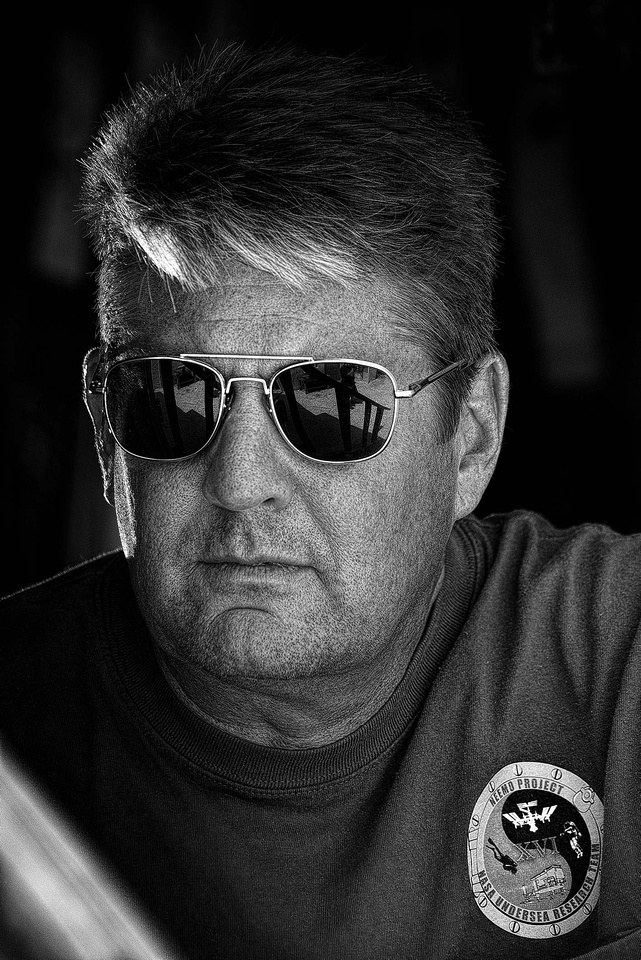
Wrapping from channeling Maverick and Top Gun, I called in Dawn. Since both sessions were going to be in the same basic light and setting, my wheels were already turning on how to make them differ. To start, their individual features lent themselves to different positions. Then, I adjusted the lights a bit, changed my angle and we started shooting We ended up with this, among others:
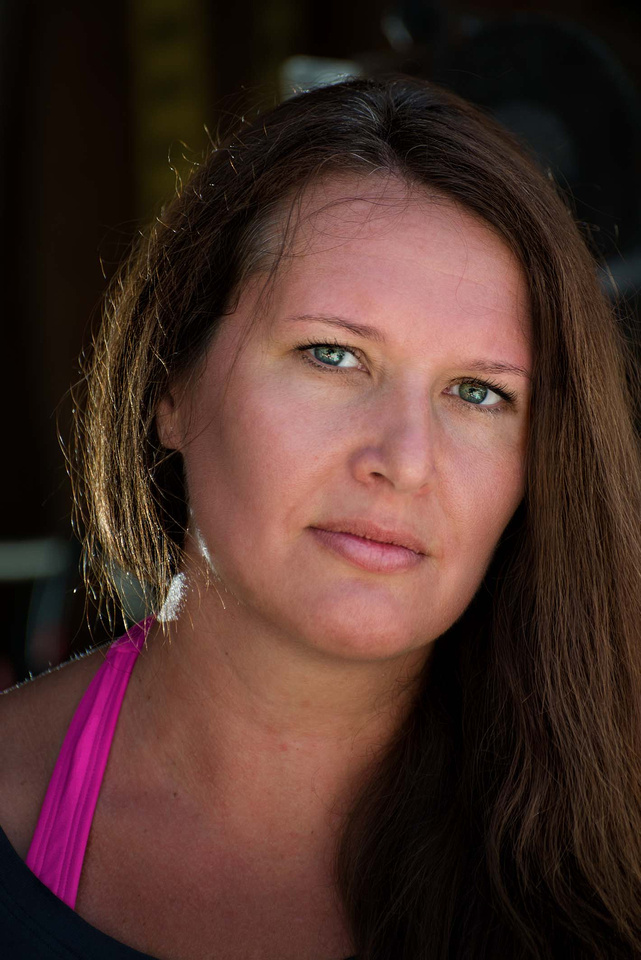
The final touches were in post. Jason's shot lent itself to stylized black and white with a gritty, heavy-detail look that works well on guys. Normally, I have people pull their shades so we can see emotion in their eyes, but the aviators make this shot. He looks like a man-of-action, which fits. Jason has a big heart that he backs with action.
Dawn's more likely to be smiling than not, and we while have some of her lights-the-room smiles, I love the intensity her serious-side projects in this one. It reminds you not to stumble over her beauty and overlook that she's one of the world's leading space/underwater scientists. Finishing her image was the classic handling fitting of a lady (as well as a chance to do better; I was way heavy-handed with my last portrait of her). The result is something I like, but, I don't think I'll compare her to Maud Adams any more.
It's not fair to Maud Adams.
]]>
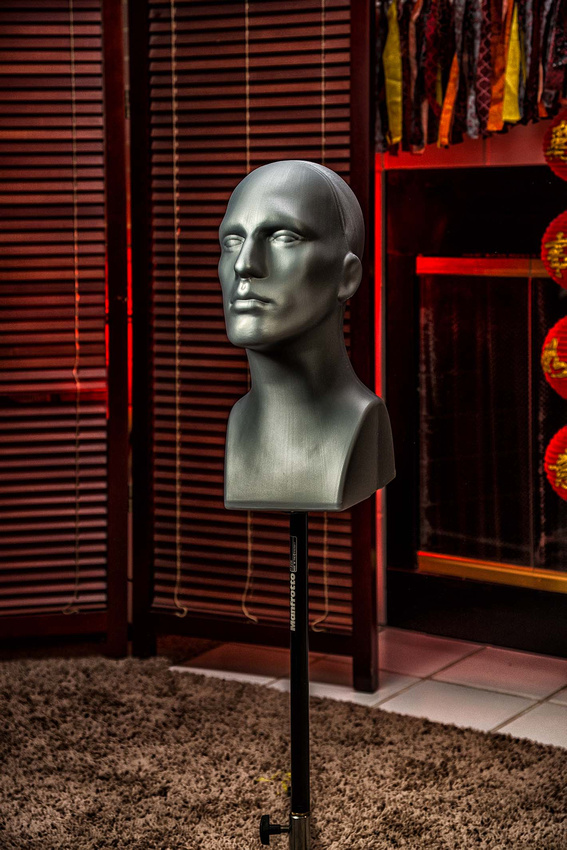
A few years ago, I wrote Praise for Photo Assistants, lauding the accomplishments of Niccole, Dawn, Aaron and others who make a shoot go better -- smoother, faster and generally more efficient. Working solo's often the only option, but I avoid it when possible. So, you'll appreciate that I've brought another assistant onto my team. This is he, and his name is Headly. It only took him one shoot to earn his place as my head assistant.
Headly came on board at the suggestion of noted portrait and lighting master Tony Corbell in one of his YouTube presentations, even though in practice, Headly doesn't actually do much. He never whispers cool ideas to me, and so far, he refuses to set up gear. His people skills are a mixed bag: he's a great listener, but he doesn't say much. And, if a client wants coffee or a soft drink, forget asking Headly -- he won't budge.
But, that's also what makes Headly my head assistant. He's the perfect stand-in for lighting. He stays exactly where I put him, and nothing distracts him from the position I need to get the hairlight just right or whatever. He may not set stuff up, fetch or talk, but he frees the rest of the team from stand-in duty, never complaining, even when he has to stand like a statue for hours. Apart from actual shoots, I can always count on Headly to be available when I want to try out new kit or lighting ideas. And, it's no accident that I chose him over other prospective assistants of his type for his gray skin –- again recommended by Corbell. Gray, as opposed to a normal skin color, lets me objectively assess the tonal values I'm getting as I light.
Best of all, if Headly wants a raise, I just adjust his lightstand higher.
Okay, by now you get the point, so enough tongue-in-cheek and I'll quit while I'm ahead. Well, while he's a head.
]]>
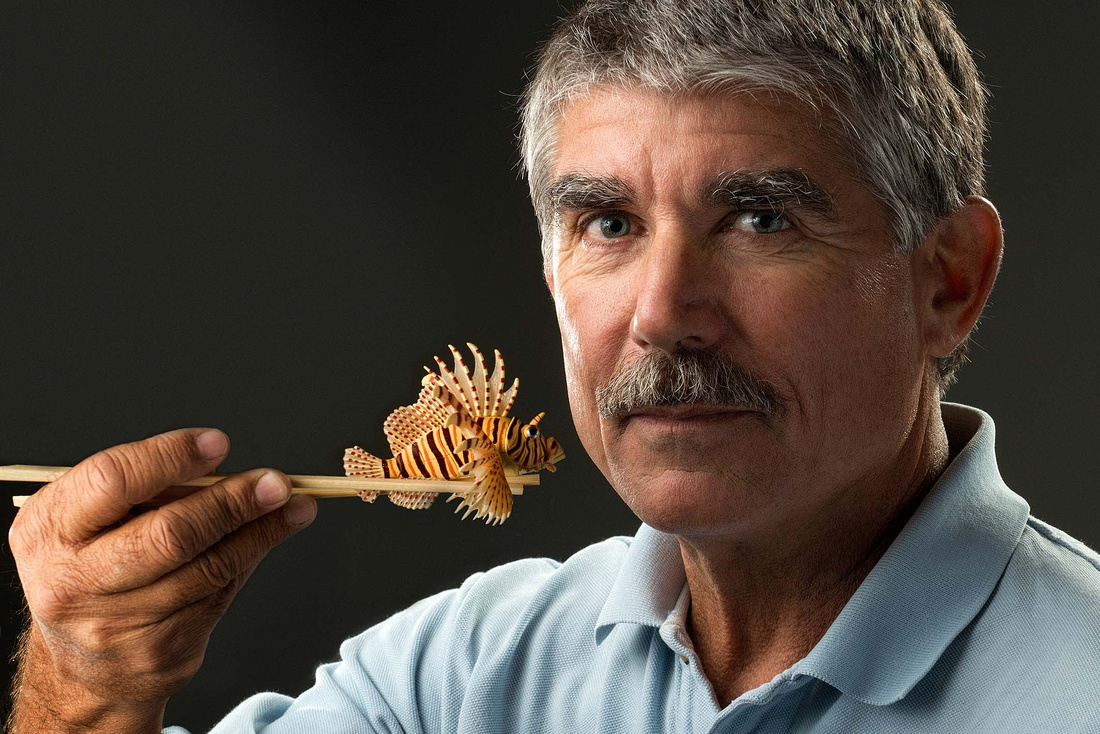 "How the heck am I going to portrait Lad?" I kept asking myself. The question had been nagging me and the day before our session, I was no closer to an answer than when I got the assignment several weeks earlier. The director of special projects for REEF (Reef Environmental Education Foundation), Lad had earned the Reaching Out Award, one of scuba diving's highest awards, for his work in teaching people how to combat the lionfish in the Caribbean (the lionfish is an invasive species predator wreaking environmental havoc on Caribbean coral reefs). It turns out the lionfish, while difficult to handle due to its very painful stinging spines, can be food if you know how to take it safely (I've had it -- it's actually quite good). REEF's instruction teaches divers to do this, allowing them to take lionfish to help the environment and have a fresh fish meal at the same time. The portrait would be part of recognizing Lad for this important initiative.
"How the heck am I going to portrait Lad?" I kept asking myself. The question had been nagging me and the day before our session, I was no closer to an answer than when I got the assignment several weeks earlier. The director of special projects for REEF (Reef Environmental Education Foundation), Lad had earned the Reaching Out Award, one of scuba diving's highest awards, for his work in teaching people how to combat the lionfish in the Caribbean (the lionfish is an invasive species predator wreaking environmental havoc on Caribbean coral reefs). It turns out the lionfish, while difficult to handle due to its very painful stinging spines, can be food if you know how to take it safely (I've had it -- it's actually quite good). REEF's instruction teaches divers to do this, allowing them to take lionfish to help the environment and have a fresh fish meal at the same time. The portrait would be part of recognizing Lad for this important initiative.
Hopefully you agree the finished image tells the story, but as I said, I was beating my head against a wall trying to come up with an idea. As it happened, though, the day before I was photographing Leslie Leaney's portrait for his Reaching Out Award (there are two annually). Founder of the Historical Diving Society (hence the award), Leslie is a warm, charming man with a quick sense of humor. We were on the way to make his portrait and I mentioned we were doing Lad's the next day.
"Ha, you should shoot him holding a lionfish with chopsticks," Leslie teased. He meant it as a joke, but it stopped me in my tracks.
"Hey, that could work!" I said. I shared the suggestion with Dawn Azua, the award ceremony director. She thought it workable and in the middle of everything else, came up with chopsticks and a model lionfish overnight.
As you can see, it did. At the award ceremony, Lad thanked Leslie for the idea (I'd shared the story with him when we shot) and complimented the work, so apparently he liked it.
The lesson is that sometimes someone gets an idea that on the surface, you wouldn't take seriously -- unless you stop to look at it. So, don't dismiss silly, wacky or crazy proposals until you've weighed their merit with a serious eye.
BTW, thanks Leslie, for the idea, and thanks, Lad, for not being afraid to run with it.
]]>
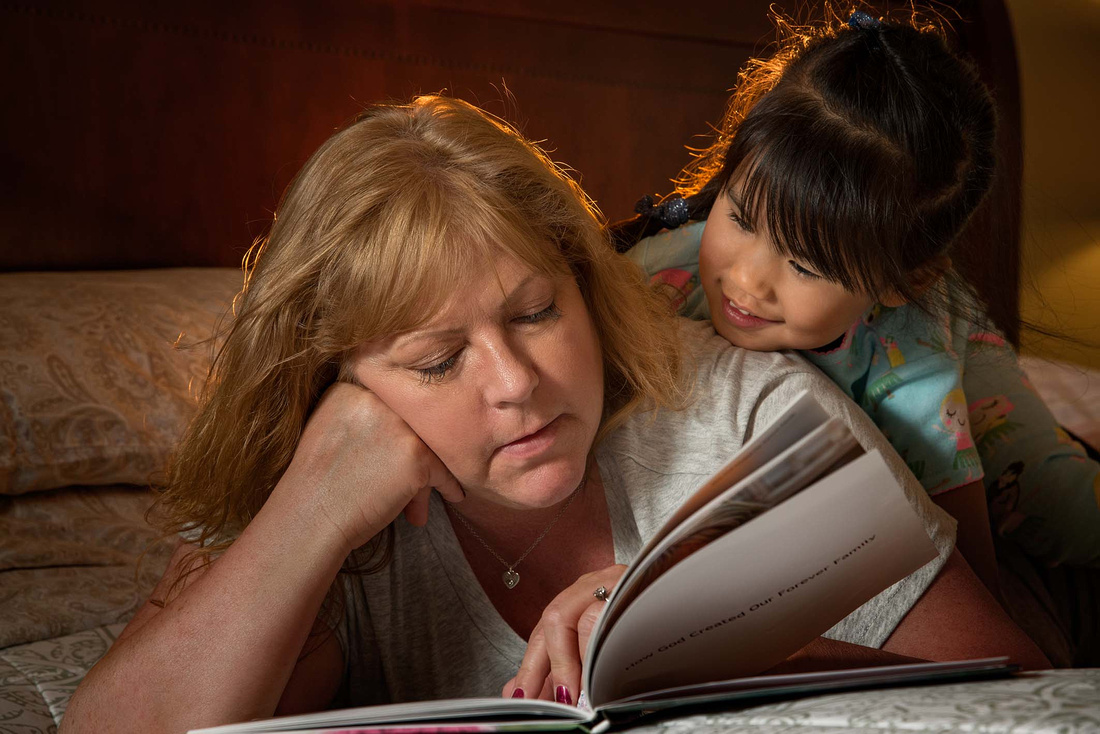
Huge, world-wide problems loom over us. They're intimidating and daunting, sometimes seeming insurmountable. Sometimes people wonder whether it's worth even trying to take them on. The answer is "yes," every time, even though some issues remain with us year after year, generation after generation: war, poverty, slavery, human trafficking. But given enough time and effort backed by conviction and faith, God empowers us to topple these global giants.
A few years ago I wrote this blog post about the world's orphan problem, and in it, I shared statistics that if about one in nine families adopted one child globally, we could close every orphanage, showing that this should be a solvable problem. We shouldn't need any orphanages. It's not that orphanages are bad -- they are way better than parentless children on the street or worse, in the hands of human trafficking -- but they aren't good. Children raised in orphanages typically have developmental delays and emotional problems that follow them through life, and it's worse in economically depressed countries. In fact, it is thought by many that poverty is the primary force driving the need for orphanages rather than the existence of suitable family homes. Regardless of why we still have orphanages, though, there's no debate that where children should be is with a family.
Rwanda is the first country putting this to the test, which is remarkable considering that the nation has widespread (but improving) poverty and is still recovering from its 1994 genocide uprising. Yet, backed by the UN, donors like UNICEF, and international Christian leadership, in 2012 the Rwandan government set out to place every institutionalized orphan in a foster or adoptive home. And, it's working. In 2012, the nation had more than 30 orphanages; today it has three. This has happened through subsidizing, awareness, an effort to locate families and international adoption. When (not if) Rwanda closes these three, it will be the first country to do so -- proving that we can put the age of orphanages behind us. If Rwanda can do it, I see no excuse for more economically advantaged nations not to.
To be fair, the movement in Rwanda hasn't been without problems or critics. Nothing humans do is perfect; there are mistakes to learn from and challenges to surmount. Nor can anyone break away from the status quo without someone lobbing tomatoes. But, Rwanda has stepped out in strength and in faith to do something that ought to be done, and it is doing it.
Adoption changes lives, and hopefully, you can see this in this shot of my wife and daughter. You get more than you give by adopting. If you're thinking of growing your family, please seriously consider adoption. And, if you wonder whether adopting a child really makes a difference against this global giant of a problem, please consider this:
David took down Goliath with one stone.
]]>
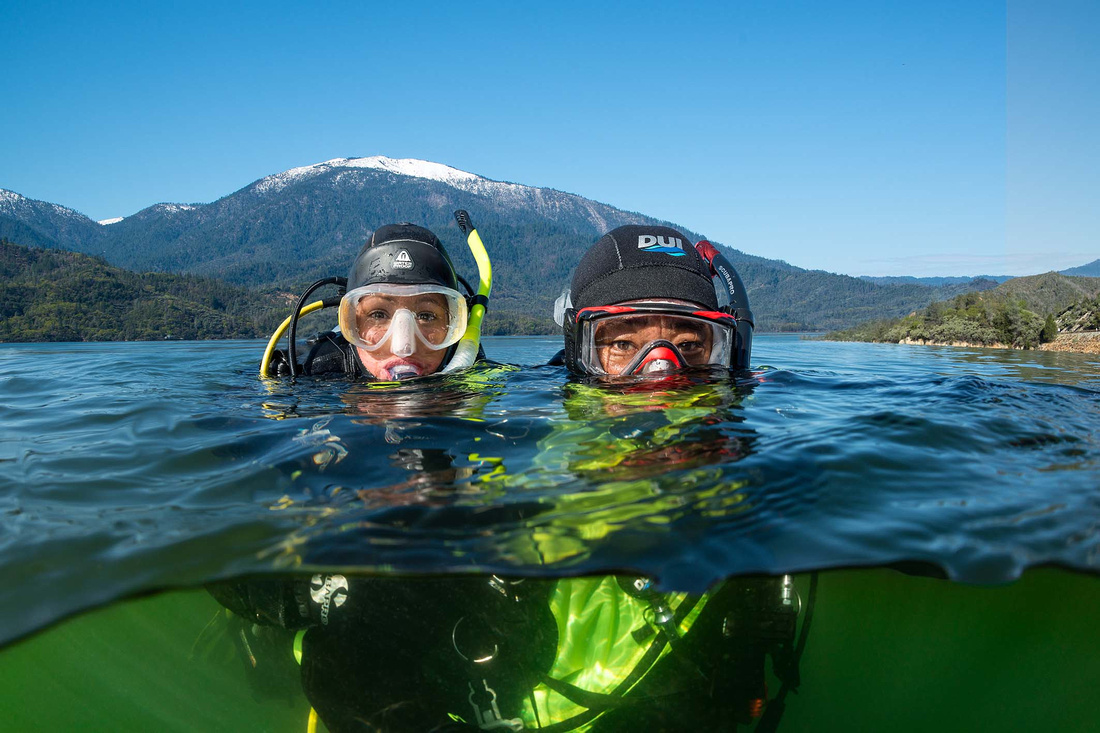
One challenge in professional imaging is making your shots look like they're supposed to look. You can say "well, duh," (and indeed you should), but sometimes there's more to this than meets the eye -- and camera. What sometimes gets lost is that it's not where you shoot, but how it looks that counts.
A studio makes this simple, but you can only do so much there, so for much of my work involving diving, we go on location to popular scuba destinations. But, what if the shot needs a setting that we can't get to due to time, budget and/or logistics? Hollywood solves this dilemma routinely (they didn't shoot The Martian on Mars), but Hollywood budgets are a smidgen larger than those I get to work with.
Last spring, we had to shoot altitude diving, which by definition takes place 300 metres/1000 feet or higher above sea level, typically in mountain settings. We faced two dilemmas: One, the last time we did this, we went to altitude dive sites, but most of the images looked no different from sea level. Two, California was coming out a cold winter with lots of snow (finally!), meaning all the altitude sites reachable within our schedule and budget were frozen over. It appeared we were up the proverbial creek, until we borrowed a page from The Martian. Could we find a place that looked like altitude diving that would work?
Disregarding elevation, we searched for a lake surrounded by the snow-capped mountains and pristine shorelines one associates with altitude diving -- and ding! Whiskeytown Lake. I doubt I'd have stumbled onto it 15 years ago, before iOS Maps, Google and You Tube, but that was then and this is now. We had what we needed. Our producer contacted the National Park Service for shooting permits (they were awesome, BTW), and we hit the road for Redding, California (close to the lake). We scouted sites for half a day, shot for two, and got some wonderful images, including this one (also made the cover of The Undersea Journal).
So, by adjusting our attitude about altitude, we came home happy campers with not just what we needed, but what we wanted, on schedule and on budget.
PS: For any purists who want to argue that altitude diving imagery should only be created at altitude, at about 365 metres/1200 feet above sea level, Whiskeytown Lake is technically an altitude dive. Oh, and BTW, Wadi Rum, Jordon, where they shot The Martian, is not technically part of Mars.
]]>
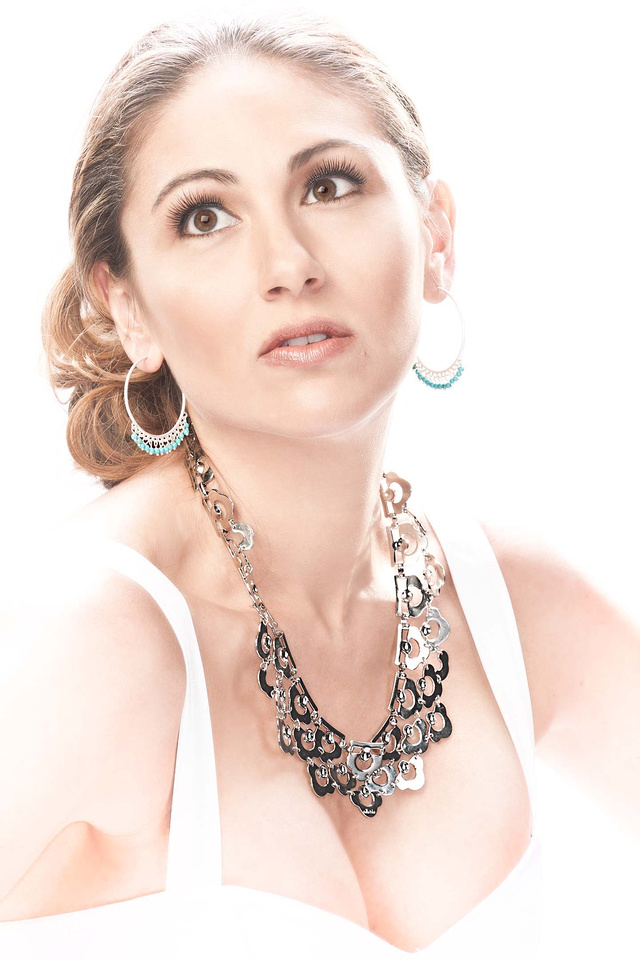 O
O
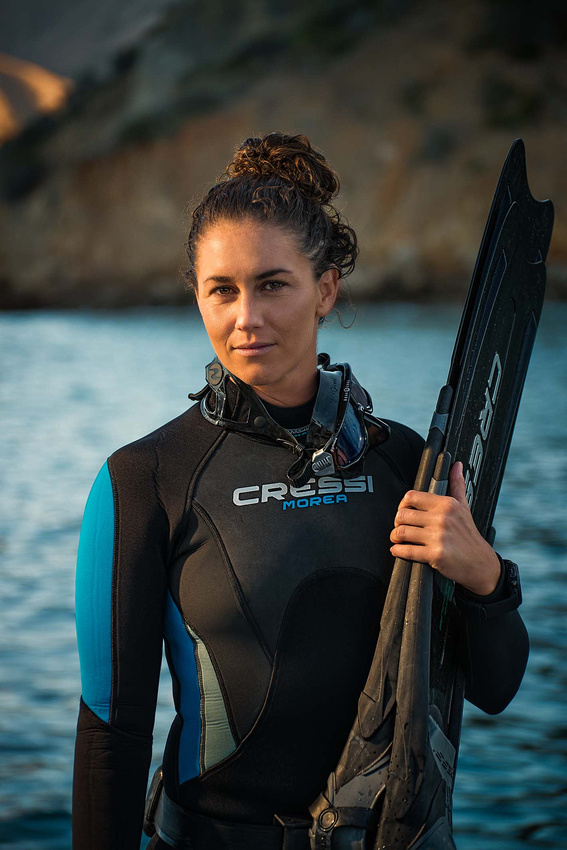
 If you watch me work, one thing you'll notice is that I use a hand-held light meter. This has been part of how I shoot going back decades, and for a good reason -- excellent images require proper lighting, and proper exposure that balances that lighting. (Yes, you can do a lot in Photoshop. Adjustments are normal, but fixing poor lighting and ratios after the fact as SOP marks an amateur; pros only do it when circumstances force our hand.)
If you watch me work, one thing you'll notice is that I use a hand-held light meter. This has been part of how I shoot going back decades, and for a good reason -- excellent images require proper lighting, and proper exposure that balances that lighting. (Yes, you can do a lot in Photoshop. Adjustments are normal, but fixing poor lighting and ratios after the fact as SOP marks an amateur; pros only do it when circumstances force our hand.)
After years of using light meters, here's what I've learned:
1. Light meters are stupid. They have absolutely no idea what the correct exposure is.
2. Light meters in the camera are even stupider and have even less idea what the correct exposure is.
3. But, I hate working without them.
When I was shooting all three of these images, the correct exposure was very different from what my light meter said. Based on it, the first image is over exposed (high key), the second is under exposed (light supplemented) and the third is over in some places and under in others (back lit with fully blocked foreground shadows).
Actually, all three are correctly exposed. Correct exposure is not an objective value. It is an artistic value based on what you're trying to accomplish in the image. So why use a light meter? Because used correctly, a light meter gives you something useful: the exposure that yields neutral gray in a given light. Unless I can't for some reason, I measure the light falling on the subject (incident metering) rather than bouncing off (reflected metering) because colors and tones alter reflected light (meters in cameras always read reflected light, btw), making it harder to determine the objective, neutral gray value. It's my job to decide what tonal value I want the final image to show, not the meter's. The meter gets me there faster by giving me a known start point. Once I know the tonal values in a setting, I set my camera (on manual) to the exposure I decide is correct, and I'm usually there with only a couple test shots and adjustments.
Yes, I know your iPhone gives you good exposures. Camera designers have gotten really good at creating light meter systems that give snapshooters good automated results in average situations most of the time. But, even with advances in the technology, these systems still struggle in many lighting conditions that, ironically, are some of the best conditions for dramatic shots. Many strong shooters use auto exposure, but no serious photographer blindly trusts automation without paying attention to what it's doing and overriding it when appropriate.
So, of course light meters are stupid. They have no brain and they have no heart. But, they're fabulous tools that your brain and heart can use when you shoot.
]]>
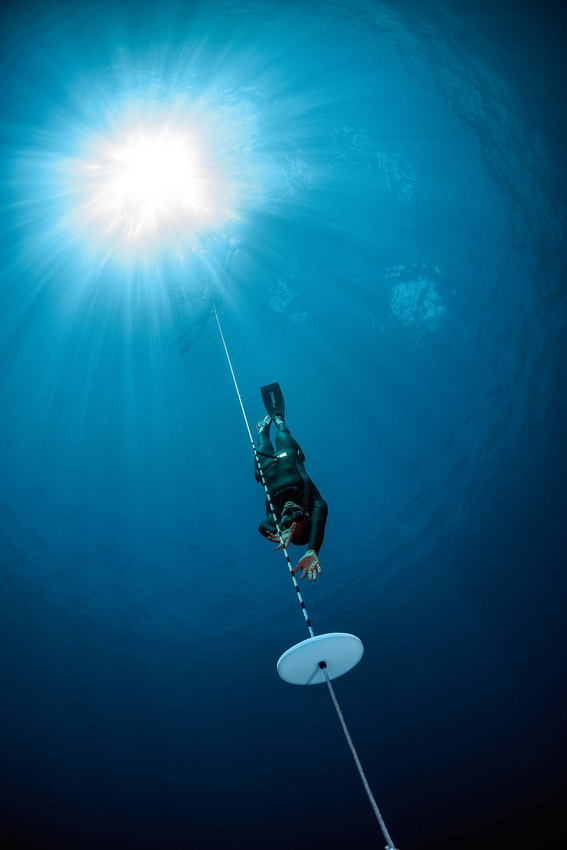
Want to model underwater? Cool, let's do a shoot where you have to hold your breath (no scuba), then swim to 50 feet (with perfect freediving form), without rushing (because I need time to compose and shoot), then leisurely return to the surface like you do it every day.
Doesn't sound easy, does it? That's why it was a joy shooting champion freediver Liz Parkinson, who does do this every day — well, practically every day. If you know anything about modern freediving, no, 50 feet isn't that deep for a moderately experienced freediver. Admittedly, for Liz, it's a milk run . . . uh, well, it would have been, except I had her to do it again and again. And again. And one more time. Make it two, but we need to go 20 feet deeper. . .
To her credit, Liz freedived dozens of times over a week for stills and video last August, with near perfect technique for every skill we needed to image, staying exactly in the light we needed her in. She made it look easy, without one complaint. When she wasn't diving for camera, she was coordinating the other models, paying attention to safety issues, wrangling sharks . . . well, it's a long list.
This frame is a popular favorite — and hey, we made the cover. So, thanks, Liz — and everyone else who modeled on that shoot.
]]>
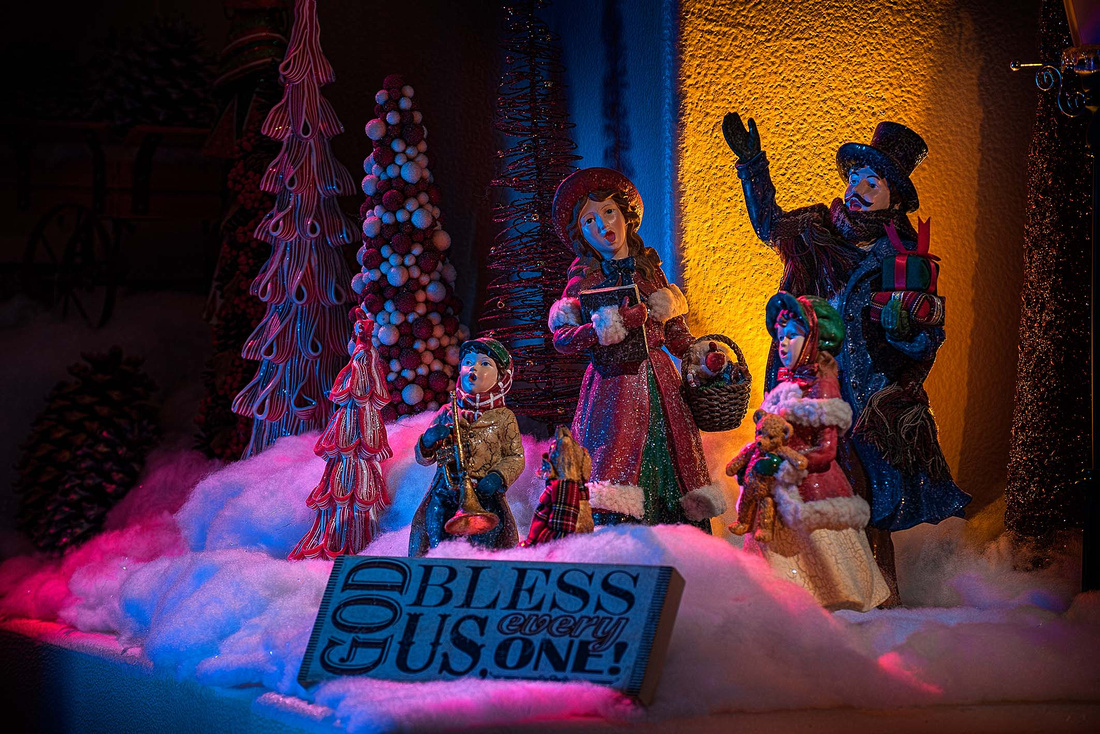 Yes, this is a cliché image of Christmas caroler figurines. I like it, but I didn't set out to make a quasi-trite Christmas picture. That was just a by-product.
Yes, this is a cliché image of Christmas caroler figurines. I like it, but I didn't set out to make a quasi-trite Christmas picture. That was just a by-product.
It started when I decided to check out some of my lighting kit, with the goal of using multiple strobes for a single shot with complex lighting. I had no idea what I would shoot, but I wanted to use only speedlights (at least a half dozen), and leave my studio monolights boxed for the duration. This is backwards from a "real" shoot, where the image dictates the hardware. In this case, I wanted to see how my hardware integrates, and to give myself a puzzle that sharpens my lighting skills.
So, what to shoot? Stumped. But, my wife had set up this figurine scene for the holidays and suggested I shoot it. Problem solved.
On to the task: Researching with Google yielded about a billion images of Christmas caroler figurines grouped in flat light on mantles, but not the idealized image of carolers at night on Christmas Eve I envisioned. My wife had built the scene with snow, Christmas trees, howling dog and the obligatory Tiny Tim quote, but I'd have do the rest with lighting. In the middle of the day. In a well lit room. The easier way would have been to wait until nightfall, but with the whole point being to challenge myself and use lots of lighting gear, I decided to do it the harder way: use light to create dark, or more specifically, to create a night Christmas look.
Without going into all the technical (leave me a message with your email address if you want the nitty-gritty), to light for night during the day, you need to use so much strobe power that you drown out the existing light. I started with multiple strobes to create the overall lighting on the figurines, but concentrated and feathered so the area around them fell into darkness. Then, I placed, aimed and gelled (colored) more until, eight speedlights later (Joe McNally would be proud), the scene looked somewhat like you might see on a fantasy nocturnal Yuletide stroll, or a least in a Nightmare Before Christmas.
Voilá, night created by light.
]]>
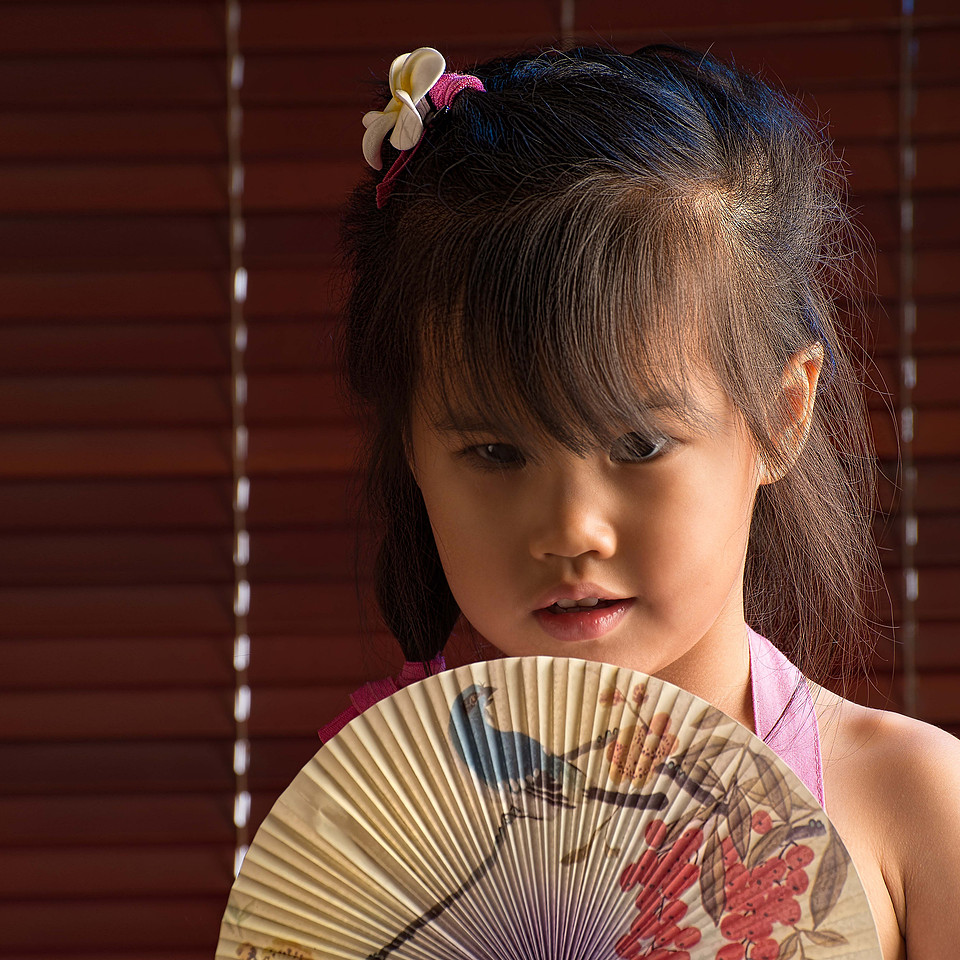 "When all you have is a hammer, you treat everything like a nail." You don't have to be an auto technician to know that it's easier to fix an engine if you've got more tools than just a steel mallet. This is why good mechanics always want a large tool assortment. They don't expect to use them all on one repair, but until they get under the hood, they don't know which they'll use. After figuring out the problem, they fix it with the right tools.
"When all you have is a hammer, you treat everything like a nail." You don't have to be an auto technician to know that it's easier to fix an engine if you've got more tools than just a steel mallet. This is why good mechanics always want a large tool assortment. They don't expect to use them all on one repair, but until they get under the hood, they don't know which they'll use. After figuring out the problem, they fix it with the right tools.
This is as true in photography as in the garage, though for some reason, it's not as obvious to laypeople. Or even a lot of photographers.
Sometimes people remark about all the gear I bring on many of my shoots. Like the auto mechanic, I don't expect to use everything, but I want to have the right tools. Most relate to lighting because lighting makes-or-breaks the shot, yet varies more than anything else. I always plan about what I think I'll need, but sometimes clients ask for images that weren't planned ahead. Sometimes there's a cool moment I don't want to pass up. Sometimes – often – the light isn't what I expected, or it changes. Or, more commonly, all of these happen. But, no problem, because I have what I need to get the desired shots.
Often, like when I travel, I can't take my whole "toolbox." But, with good planning, what I can take covers me 99% of the time. When the remaining 1% hits, I don't waste time fussing that my Lastolite 8-in-1, or whatever, that I left in California would be perfect. I focus on what I have, apply some creativity and solve the problem without resorting to the nail treatment. As noted photographer Joe McNally said, "The most important piece of equipment in your bag is your attitude." (But, even Joe packs the lighting tools – he even helps invent them.)
This is why it amazes me when some photographers practically boast about how little equipment they have, the most common claim being that "I'm a 'natural light' photographer." Really? Would you get your car fixed by someone who says, "I'm a 10mm wrench mechanic."? Or, "I'm a hammer mechanic."? Let's be fair – some types of photography like nature, landscape and sports – appropriately don't use much lighting equipment. But, in my experience, many of the shooters who claim to be "natural light photographers" actually don't know how to light and use lighting tools. As a result, sometimes they use "natural light" when it's not what the shot calls for. All they have is a hammer, so ironically, they don't nail it but do screw it up (aren't metaphors fun?).
To be clear, I'm not dissing natural light. It's not always appropriate to have a ton of gear on a shoot, and even when I do, sometimes the only tools I need are the camera and the lens, and the lighting stuff stays boxed. And also to be clear, it's not about using gear. It's about getting the shot you want.
Look at the shot above. Depending upon the situation, I could have set it up using natural light, strobes, reflectors or a mix for the main light. Ditto for the fill and hair. Falloff to the left could come from open space or negative fill. Considering I have all of these tools at my disposal, which, you may ask, did I use?
It doesn't matter. I got the shot I wanted.
]]>
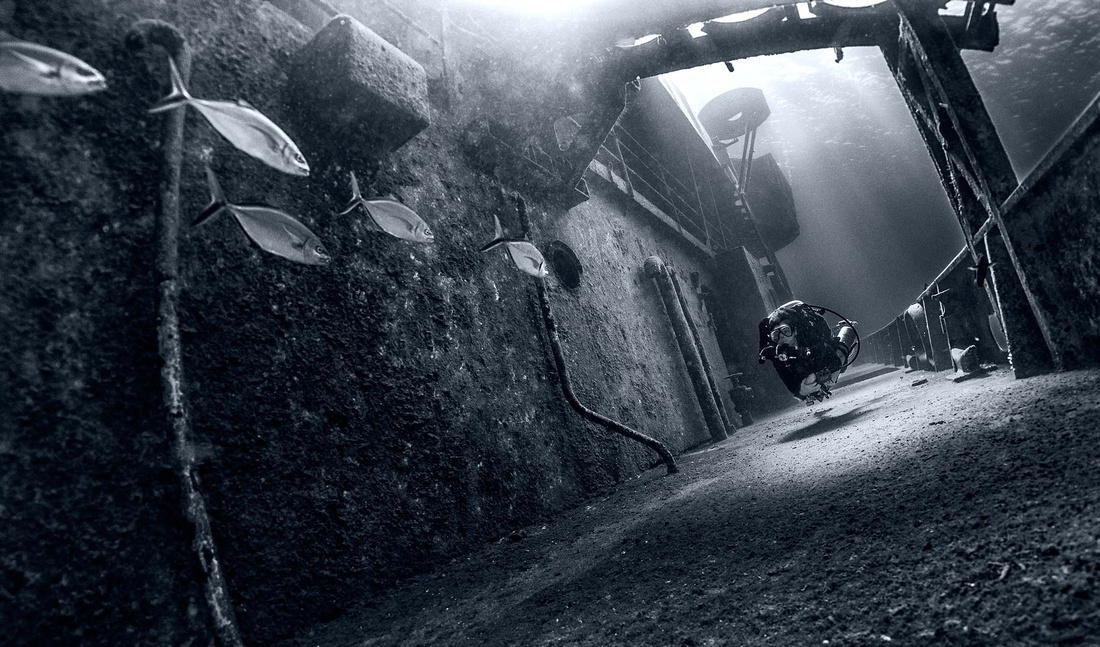
No, I did not Photoshop the fish into this image. There are some shots that rely on a bit of luck, and this is one of them. But, I've noticed that skilled shooters are "lucky" a lot more often than less skilled shooters. So, maybe there's more to it than luck.
The model, Linda, and I were shooting on the Kittiwake wreck in Grand Cayman. To get the shot I wanted, Linda swam a path we established along the deck, with me shooting. For this kind of shot, it's most effective to have the model in motion, timing each capture based on body position, location and the light (not "machinegunning" – that's what amateurs do). We were just starting a second pass when I saw the fish swimming into the shot out of the corner of my eye (no small feat wearing a dive mask, BTW). I knew I would have exactly one shot to take advantage of this magic moment, and that's where discipline comes in. Don't rush, wait for it . . . . . click.
We finished the sequence, but I knew I already had the shot. A moment earlier or a moment later would have missed. If I'd just mindlessly banged off frames as fast as I could hoping I'd get it, I'd have almost certainly have had two dozen images with the magic moment falling between two of them (something I've learned the hard way). Even when shooting multiple images to get "the one," you don't mindlessly click them off by the dozens; you time each based on what's happening in the viewfinder. Today we capture more frames than we did with film, but shooting so many that you can sequence them into a movie, in most circumstances, points to a lack of skill.
The harder part in capturing magic moments, I think, is trusting that they will come. But, they will, especially if you grow them. When I was less experienced, I was a hunter trying to track down each shot and make a kill. I tried to force these moments because I had to deliver and was afraid to come home empty-handed. Today, I'm a farmer: I set the stage, set the light, and plant "seeds" with my subjects, then wait for them to grow, harvesting the magic moments that I "luck" into. I shoot fewer images than I used to, yet end up with more, better keepers.
So, while the fish swimming into the shot was pure luck, the image wasn't pure luck because we'd set the stage, set the light and planned the shot even without them. When the opportunity came, I was prepared.
Magic.
]]>In photography, "style" tends to be a mushy, confusing term that can take people down the wrong path: Shooters try to be something they're not when asked to shoot "this style." Likewise, clients looking at images may pass over a photographer who might have been exactly what they're looking for because the portfolio shots or previous works "aren't the style we want."
"Style" actually means two things in photography (maybe more, but we'll say two for this point): the image's style and the photographer's style.
Image style refers to common technique: environment, lighting, angle, perspective, etc. It's not precise, but most people would agree that the first two of these three shots have the same (or at least similar) image style, and third does not:
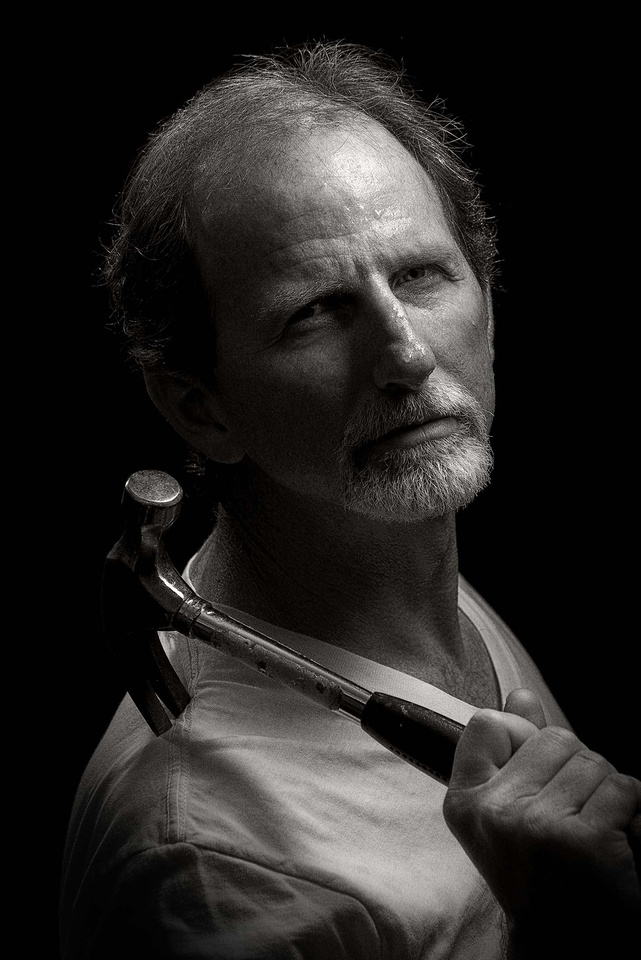
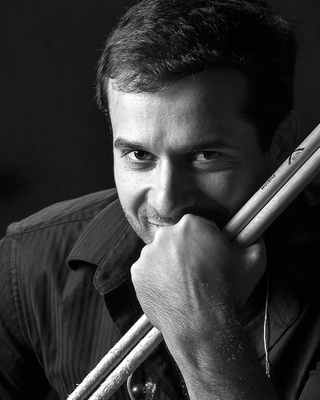
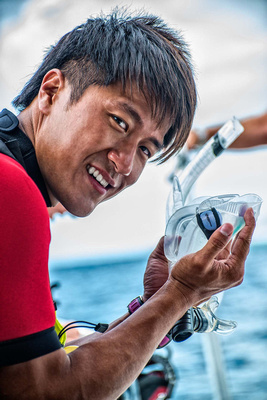
Image style is a general look that applies regardless of who took the shot, where, etc. For example, the first two images reflect Rembrandt lighting, and this technique imparts an image look (style) that many photographers have used for decades. The third shot has an entirely different look; it has a different image style.
Photographer style is entirely different. It is that something that unifies all the works of an artist, regardless of image style. Take, for example, the works of the highly-acclaimed Annie Leibovitz. She shoots art, fashion, portrait and advertising in a myriad of image styles, yet her work is almost unmistakeable. There's something about her style that cuts across image style; it's what makes her images unique – something you will only get from her. Consider Gregory Heisler, and George Hurrell, both masters of the portrait. You'll find many different image styles in both of their works, yet there's something unmistakeable: a Heisler is a Heisler, and a Hurrell is a Hurrell. The same is true in classic art – a Monet is a Monet and a Picasso a Picasso.
Image style must change to fit the subject, or you're not doing your job as an image maker. Look at the shots below: I shoot a lot of training/scuba lifestyle images; the style I use for those is nothing like what I use for studio fashion or a portrait. And, those differ from the image style for, say, composited artistic work. Even within a genre, image style must change to fit the subject and to meet what the client needs. Shooting high fashion in a studio demands a very different approach from shooting casual fashion in the field. So, you use different tools for each of these needs. You shoot at a different pace with different lighting. You interact differently with subjects and models. You think differently because you must approach each differently.
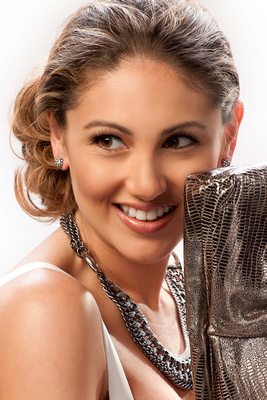

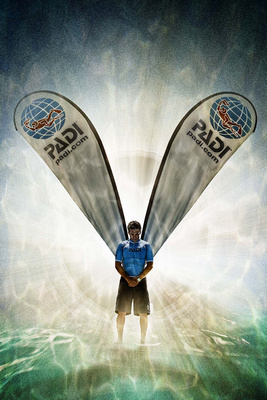
But, across all these differences, the photographer's style doesn't change; it's the fingerprint that makes a Hurrell a Hurrell or a Leibovitz a Leibovitz. Photographer style may evolve, but one can't eliminate it or hide it. If you know my work, all six of these images are clearly my work, despite very different locations (studio, field), equipment (full studio light, run-and-gun reflectors & speedlights) and interactions (serious and methodical, quick & fun).
If you're a photographer or photographic artist, it helps to master many image styles, but your style is what makes your work singular and unique. You can't force your style into a mold, but you can help it evolve and grow by studying your craft and by shooting a lot, of course. But, don't try to shoot like Heisler or Hurrell. You can't; you just come across as a counterfeit. Learn from the masters, but shoot like you.
If you're a client who wants a particular look or feel for an image or series, don't let image style blind you to the photographer's style. That is, don't assume that because a shooter is great at a particular image style that that is the only image style the person is good at. Or, that that person can't shoot other image styles (that may be the case, but don't assume it without checking). Look at the photographer's style – the ineffable something that unites very different works from the same artist. If it works, chances are it works across many image styles. If it doesn't work for you, then you probably won't like it any better with different lighting.
]]>
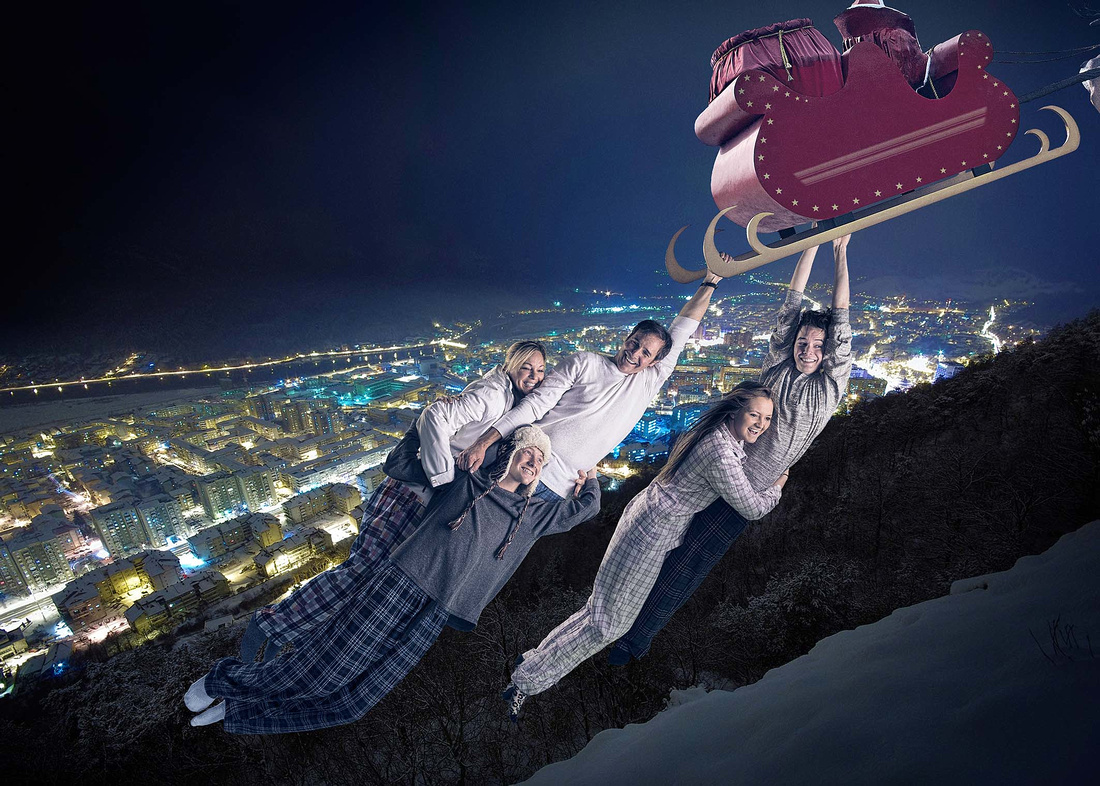
Sometimes fun shots come together magically. Fittingly, this family Christmas card is one of those.
It started a couple weeks before the shoot with the idea that we'd do something with everyone base-jumping in parachute gear. This sounded awesome, with everyone falling at the camera (i.e., me while I shoot) and landing in foam. But, a few flaws. For one, it wasn't all that Christmassy. Second, we were having trouble getting base-jumping gear. Wayne and Karen Brown of the Ocean Adventure had generously offered to let us borrow their sky diving kit, but they were out of town and wouldn't be home in time. Then there was the small detail whether I would actually be able to get out of the way fast enough –– not just once, but the dozens of times it would take to get good images of everyone falling at me.
So, plan B was to go to an indoor skydiving facility. Flaws here were cost, plus we weren't sure we'd get permission to do the shots (we never got as far as asking though). Again, not very Christmassy. And, while I was blown away with the idea, there was a good chance I'd be blown away by the idea. So that got nixed.
Plan C was to go back to Plan A, but more Christmassy with everyone falling toward camera from out of Santa's sleigh, so no parachute kit needed, though I have it on good authority that Santa is a skydiver (which may have something to do with the reliability of reindeer-based aircraft propulsion.) So, this was the plan going into the shoot, even though we still had the can-I-get-out-of-the-way thing nagging us (well, it was nagging me).
That morning, I got up early knowing I'd need to be setting up the studio two hours ahead of the scheduled shoot time. Over coffee, I mentioned the concept to my wife, which led to some jokes about the Pixar animations, Prep and Landing (my daughter loves them). Prep and Landing shows us that Santa's sleigh launches and lands much like FA-18 Hornets coming and going from the Nimitz, and this led to jokes about what would happen if you tried to sneak aboard Santa's sleigh at launch and timed it just a hair late . . . .
Hey, that's it!
I called Ted (the dad). He liked it, too: funnier, more Christmassy, better chance of working, and added bonus, his family didn't have to change out of their pajamas. I zipped to the studio, did this set up, they arrived, we shot and a few hours in Photoshop later, everything came together like magic –- a way better creation than anything we'd imagined any time in the previous two weeks.
I guess there is a Santa Claus.
]]>
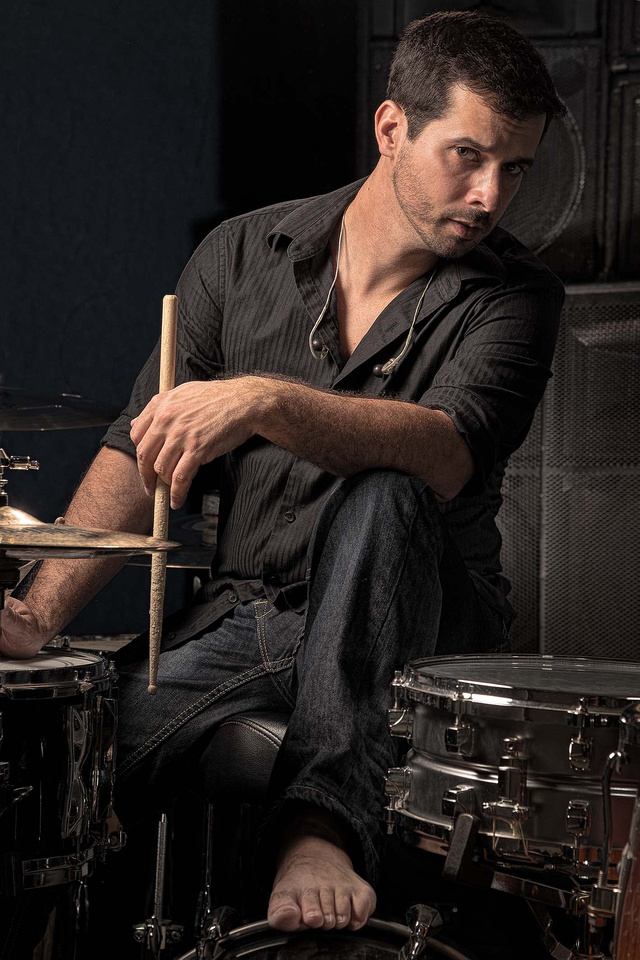
Professional photography, at its core, is a continuous problem-solving exercise. Every shoot differs, providing something you didn't expect. That cool-and-collect attitude you see from a seasoned pro doesn't come from having seen it all. It comes from knowing that whatever comes up, you'll be able to solve it because you always have.
Commissioned to shoot portraits of Soultone-sponsored drummer Abe Rodrigues of The Droppers, the challenge was that he performs barefoot. Ever heard of the baseball player Shoeless Joe Jackson? He got his nickname following a single game in which his feet were so blistered that he went to bat and ran the bases in his socks. But, shoeless isn't a one-off for Abe's sessions; it's how he usually plays. Problem is, drums hide the drummer's feet, so how do I shoot that?
When he's not playing, of course. Like most good images, it started with getting the lighting dialed in so that we could let the moments happen without worrying about that. After several different shots drumming and not, Abe took a breather and leaned back, much as you see him here. Yes! But not quite there yet. We went through a few variations, and he nailed it. (Plus some others -- check them out here.)
And that's the other cool thing about shooting performance artists -- they're not afraid to commit to the shot, and they know how to play to camera. It's been my privilege to shoot some talented artists over the years (magician Scott Tokar, actor/singer Thomas R. Cummings, various bands, etc.) and it's always a joy. Given the chance, I rarely turn down a chance to shoot performance artists, but I'd especially love to shoot Gwen Stefani, Ailee, or G-Dragon, if you happen to have any connections. <g>
Note: Given we're in the Christmas season, I initially thought I'd call this The Little Drummer Boy. But, Abe's not that little, nor a boy . . . .
]]>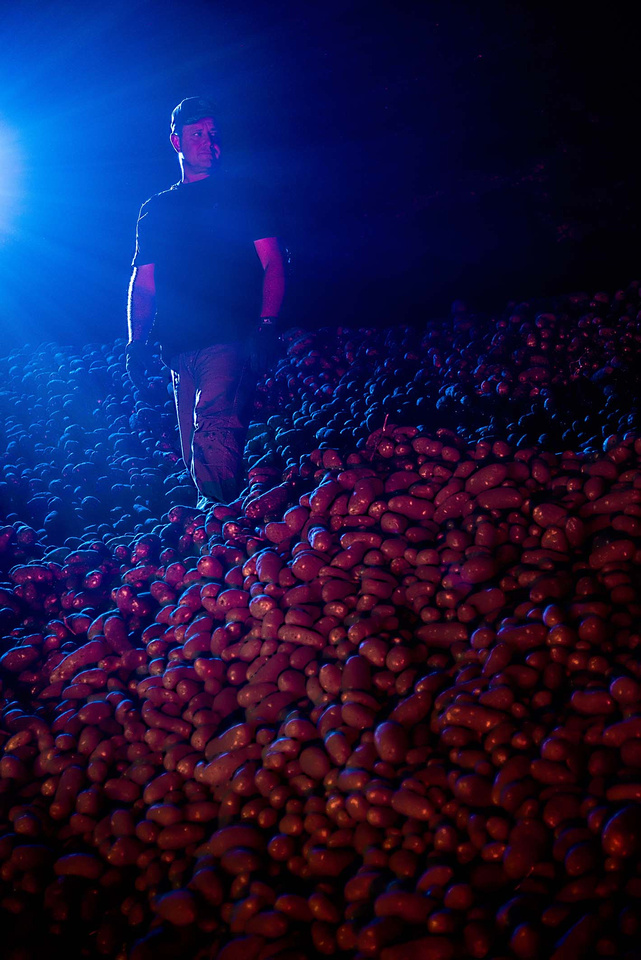
Meet Kevin. He has a lot to do with the Thanksgiving meal most of us Americans will enjoy in two days. He's a Tulelake, California, farmer standing on the mashed potatoes we'll heap onto our plates next to the turkey. That's a two-story stack of potatoes – just one farm's output of one of its crops. You're seeing the tip of the tip of the tip of the iceberg.
According to the American Farm Bureau Federation, only about two percent of us in the US are farmers, but it takes 15 percent of us -- 21 million people -- to process, pack and ship what they turn out. Thanks to what they do, we only have to spend about 10 percent of our disposable income on food, yet incredibly, a third of America's agricultural output gets exported. Last year, the US exported more than 30 billion metric tons in wheat alone. We raise nearly half of the world's soybeans and corn. All-in-all, every America farmer feeds 140 to 155 people (sources vary on this estimate) around the world. Fifty years ago, it was about 26. Yes, we import a lot of food, too, but we export more than we bring in.
American farmers work long days (actually, they work long hours – their "days" often start and end in the dark), with an average estimated return of only about 12 to 16 cents on the dollar. That's about half the return they had 30 years ago, by the way, without adjusting for inflation. And, it takes a lot of dollars to farm today. Take for examples, which start, with the required attachments, at $100,000 but can cost twice that. American farmers produce more than ever before, and will likely have to do even more over the next 15 years as global populations rise. Even with growing demand and lower returns, though, our farmers are increasing their sustainability and green practices. Most farms conserve large wildlife areas, plant trees and other plants and increasingly implement sophisticated agricultural practices so that they need less water, fertilizer etc. per acre than a few decades ago. Farms are the main developers of alternative energies, and the primary users of some forms.
It's not an easy life, but thank God they do it.
Next time we sit down to dinner – especially at Thanksgiving – and say grace, perhaps we could add a word of blessing and thanks for Kevin, his family and all the other farm families who literally feed the rest of the world.
]]>
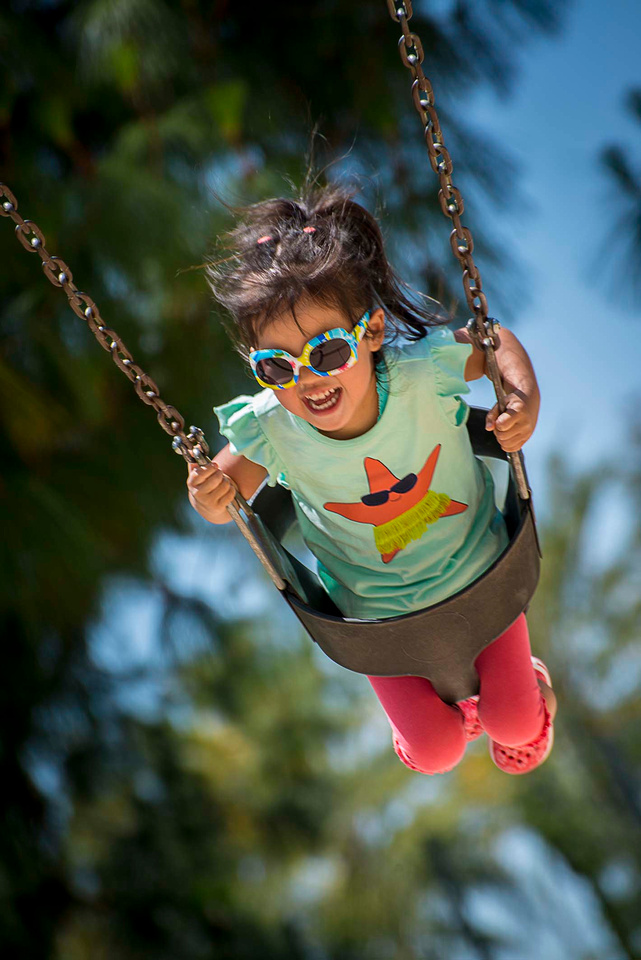
This shot of my daughter's worth a million to me, but not because it's a nice photo. Certainly people relate to it, and they've given me kind words about her gleeful expression, or how it takes them back to when Daddy pushing you on a swing was one of life's greatest joys. Her delight's genuine, and you can see it. But, while it's great to create a good image, there are many things that are more important.
What makes this image special is that in it, we see changed lives – my daughter's, my wife's and mine. Since there are other pictures of her and of me on this site, you may realize that we adopted her. I can't imagine what it's like for anyone to grow up without loving parents, but it makes me wonder whether she would have had moments like these. On the other hand, I now know what my wife and I would have missed; thinking what might not have been makes me weep.
Too many children grow up without families; there are about 153 million orphans in the world who have lost one or both parents (and one is too many). But, considering there are about 1.4 billion families (households) if only about 1 in 9 adopted one child, we could close every orphanage. Not every household can do so, but others would (and do) adopt two or more. And, of the 153 million, many still have a parent and a viable family. My point is that this should be a solvable problem.
To be direct, what about you? If you're thinking about enlarging your family, give it some serious thought. For those who may feel the same way, I wasn't sure I wanted to adopt. If I'm honest, I was basically dragged into it. But my fears, concerns, worries and hesitation vanished the instant I held my little girl for the first time, and now I thank God that He didn't let me off the hook on this one. When you become an adoptive parent, you give a lot, but you get a lot more than you give. For every smile we've put on our little girl's face, she's put a hundred on ours. I think it's one of God's ways of teaching us what's really important.
]]>
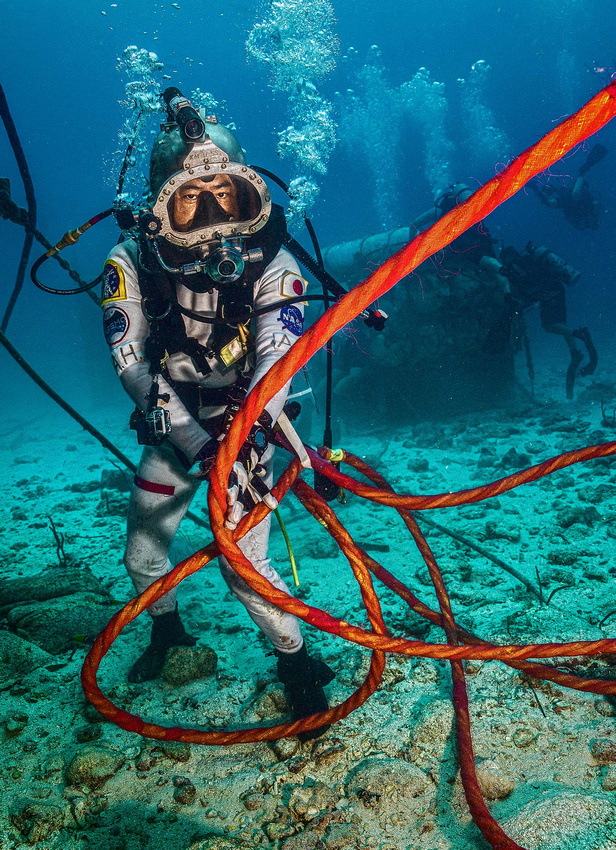
Background: In my November 2012 blog post, I wrote that the Aquarius undersea habitat -- the ocean equivalent of the International Space Station -- was about to close due to lack of funding. With it, the NASA Extreme Environments Mission Operations (NEEMO) programs were in peril, potentially ending more than a decade of researching human spaceflight under the sea. Fortunately, as shown in an update, at the last minute Florida International University took up the reins of funding and managing this imporant national resource.
After nearly coming to an end in 2012, two years later the NEEMO project has come back strong, with two missions, NEEMOs 18 and 19, in 2014. At this writing, NEEMO 18 just concluded (very successfully), with NEEMO 19 about three weeks away. Having been a contractor with the NEEMO project since its inception in 2001, over the years I've "worn many hats," including, at times, photographer. On NEEMO 18 shooting wasn't my primary role (I was primarily a support diver); that duty fell to accomplished imager Mark Widick (check out his amazing space shuttle launch shots!), who was sporting a Hasselblad H3D in an underwater housing.
If you're not a photographer, you may not know that Hasselblad is considered the highest quality professional camera available. Hasselblad makes each with a unique combination of mass production and hand crafting, with a large sensor and the world's finest lenses. Its current top end model (the H5D-60) is a 60 megapixel camera (about twice the resolution of the current highest DSLR sensor at 36 megapixels), which continues a 50+ year trend. During that span, Hasselblad has been the tool of choice in the fashion industry and other high-end imaging, including being the camera that went to the moon. No one argues that Hasselblad is the best of the best for high end, commercial imaging.
But, it's a high-ticket item -- an order of magnitude more costly than the finest Nikon and Canon DSLRs (you want the best, you have to invest), so while I shot Hasselblad a lot during the film era, until NEEMO 18 I'd never had a chance to shoot the new digitals. They were out of reach for me financially. Mark could see the longing (i.e., envy, lust, jealousy) on my face and, being a kind and merciful person, graciously handed his Hassy to me during two dives in which I was, at least officially, just his dive buddy. While I can hardly say I shot it enough to get to know it well, I immediately fell in love -- you have to shoot to understand it, but just feels right. With it, I captured several images I like, including this one of NEEMO 18 mission commander astronaut Akihiko Hoshide of the Japan Aerospace Exploration Agency. For this shot, I was under the Aquarius habitat (it's on a frame about 20 feet off the bottom) at the end of a simulated EVA (Extra Vehicular Activity, a.k.a. "space walk") as he was securing his life support umbilical. He turned from his task for just a beat and looked my way, giving a shot that connects you with him.
After one of our many dives during the mission, someone helped Mark by taking his camera system from him as he came out of the water. "Careful with that," I cautioned, "That's $20,000 under the sea." I wish I created this little play on words, but actually pioneer underwater photographer Jerry Greenberg did. He published an image with that title in the early 1960s, showing all the equipment he used as an early pro underwater photographer -- multiple underwater camera systems, scuba gear, several scuba cylinders -- even a boat -- all of which the caption said came to a bit more than $20K.
That says something about inflation over the last 60+ years, to be sure, but even so, I don't think he had a Hassy. He'd have loved it if he did.
]]>
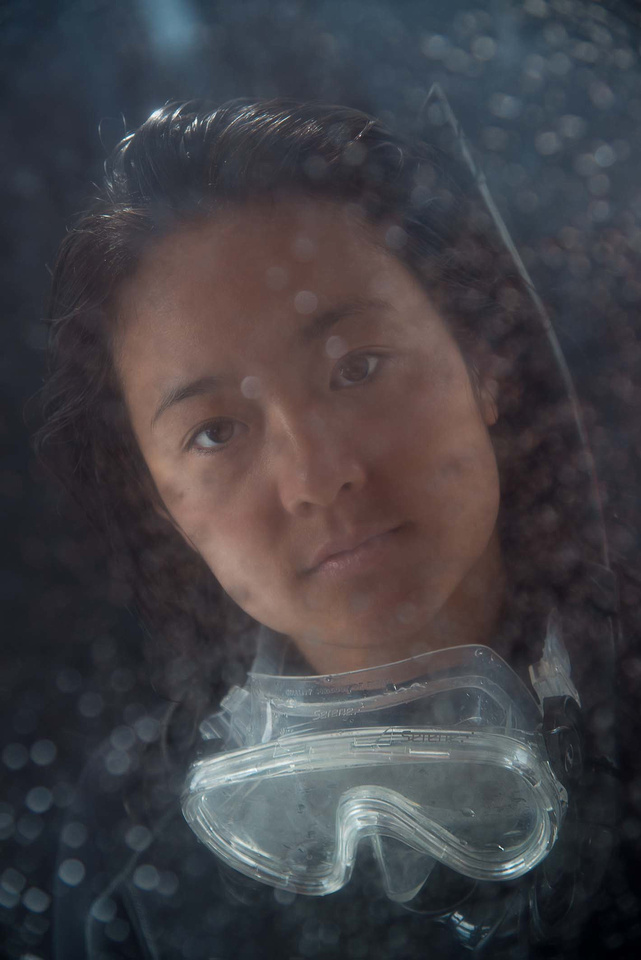
Every artist needs inspiration. What we create comes from a vision within us (albeit, often augmented and improved by the team who we work with as it comes forth), but something needs to inspire that vision. It may another artist's work, a phrase, a random thought, a dream -- but it has to be something. Or, someone, a muse –- an inspiring model, actor or collaborator or who pulls new, fresh creative visions out of us. It's magical and wonderful when you find yourself in a muse-artist relationship.
The muse-artist relationship is not monogamous, and it can be momentary or enduring. Fashion/portrait photographer Richard Avedon was a muse-magnet extraordinaire and illustrates this. Some of his most famous images feature Brook Shields, Judy Garland, Marilyn Monroe, Dovima, Stephanie Seymour, Brigitte Bardot, and Audrey Hepburn, to name only a few. Avedon photographed most of these a few times at most, yet his work exhibits the inspiration he drew from them. Hepburn, however, modeled for him many times over both their careers; together they created many of the images we think of when we think of Audrey Hepburn. The Avedon-Hepburn tie has become almost the stereotype for muse-artist relationships.
You can't decide to be someone's muse, and you can't decide someone will be your's. It's also not romantic. While it can be, that's not it. In my experience, there's a sense akin to falling in love, but it's at most an illusory crush that fades when we stop shooting. Then we're back to being friends/acquaintances. I can't explain what makes someone your muse, but you know it when it happens.
During a shoot last week, I found a muse, actor Charlie Seibold, and this is one shot that, at least in my eyes, shows it. We were shooting on a dive boat, and this shot through a splashed window was a magic setup in which everything came together way easier than it should. She gave me several looks that work, but I love her expression in this frame. It says she's strong, confident and at peace (which is probably why she's also a skilled free diver).
Will she be a my muse again? It doesn't always work that way. But, sometimes it does. We'll see.
]]>
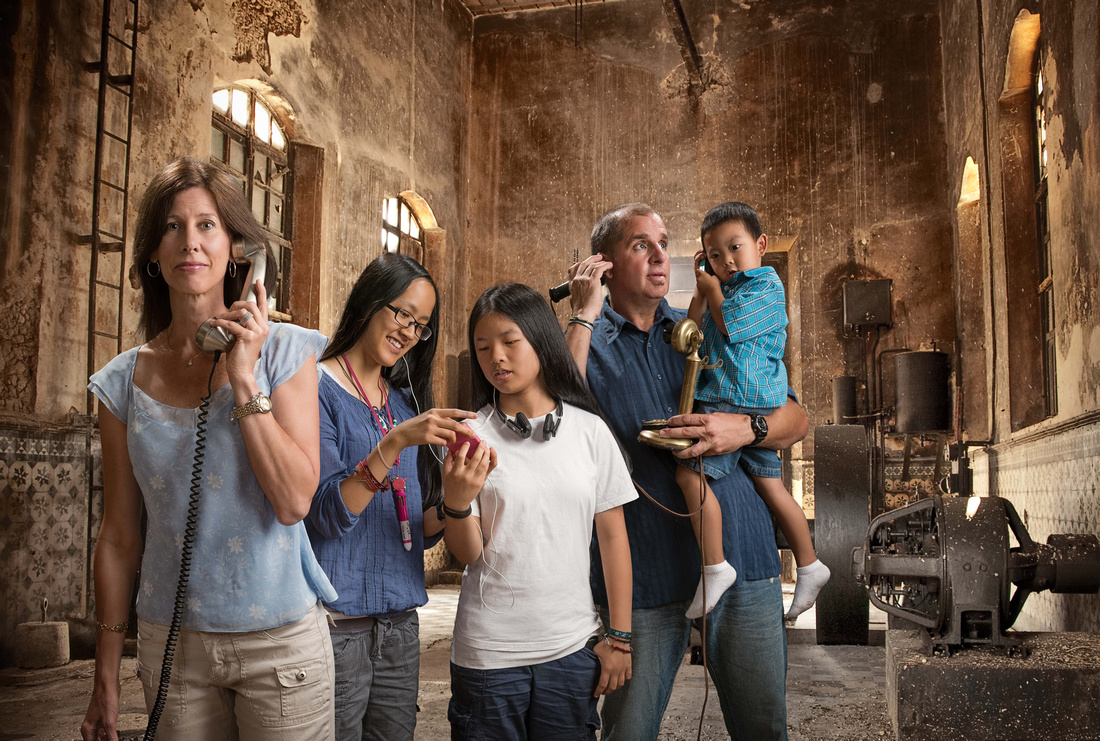
Whether you're a photographer, photographic artist or just have some photos that fit into a story you want to share, Adobe has a new free app to check out: Adobe Voice. It's an app that lets you easily create a short video about a problem, principle, proposition or just a story. It uses your photos as well as free logos and photos within the Adobe Creative Cloud, and walks you through the process, all within your iPad. It is easy, and effective -- just don't get long winded. It's for quick messages with a real point. Think of it as doing for story telling what PowerPoint did for formal presentations.
Here is my first published Adobe Voice video. It's a short piece -- less than three minutes -- about a remarkable family in China who helps orphans. None of the images in it are mine, but watch closely and you'll see the connection with the image above. It took me maybe 30 minutes to put together -- the program does all the work. Pick a theme, layout and music, and do it all in your iPad.
My guess is that you'll see lots more from lots of people using Adobe Voice very soon. There are lots of fun things you'll do with photos (maybe some that I create for you) and/or that Adobe has in its cloud.
Hopefully, though, Adobe Voice will be something we can use for more than fun, business or cool ideas. I hope it gives a new voice to people who've not been heard enough. Like a voice for families who leave the comforts of home so they can help children.
UPDATE: Thanks to everyone who helped out. The family's back in the United States and, after staying in southern California for a few months, is settling in in the north-eastern U.S.
]]>
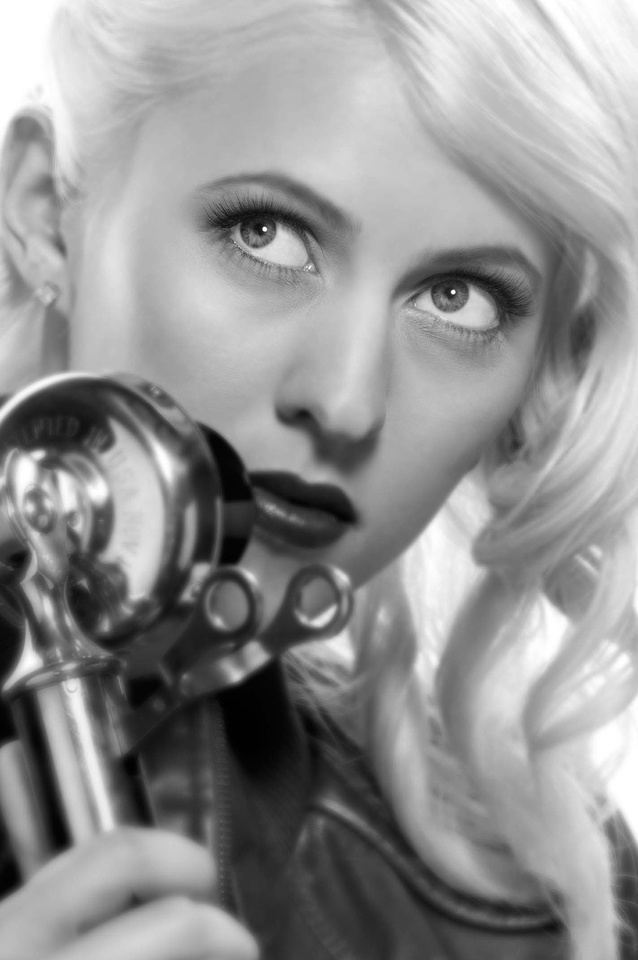
Sorry for such a long interval between posts. We just moved and as you may expect, that has kept me really tied up.
Some of my favorite looks are from the late 1930s to late 1950s era in Hollywood. This was the period when photographers including George Hurrell, William Walling Jr., E.R. Richee and C.S. Bull created many of the iconic movie star images that today we recognize at a glance. Photography evolved over this 20 year period, so that there are some notable differences between images created early and those created late in this span, but most images from this era share several characteristics. First, they are almost all in black and white. Second, they have very shallow focus range. Third, they used hard light -- that is, lights that create shadows with a relatively hard, distinct edge as opposed to a wide, gradual edge. Although these resulted from technical limitations, the style became so distinct that it continued longer after technology had moved on and the limitations no longer applied. George Hurrell continued to shoot using largely the same equipment and techniques until right before he passed in 1992.
For this image, we created a then-is-now look using modern equipment. I modified the lights to replicate the hard look, and in Photoshop, converted to black and white. The image had a wide focus depth, but I recreated the narrow look of the period in Photoshop as well (which takes more work than it may appear). The makeup artist imitated the period while keeping a modern feel, and a candlestick phone added a touch that takes us back (even though it is more of a 1930s thing than '40s).
I've used this look for portraits as well as fashion. Recently, I used it for a subject being recognized for bringing the movie industry to his area many times (away from Hollywood, on location), making this classic look fitting. It's a fun, rewarding imaging style for both me and the subject.
]]>
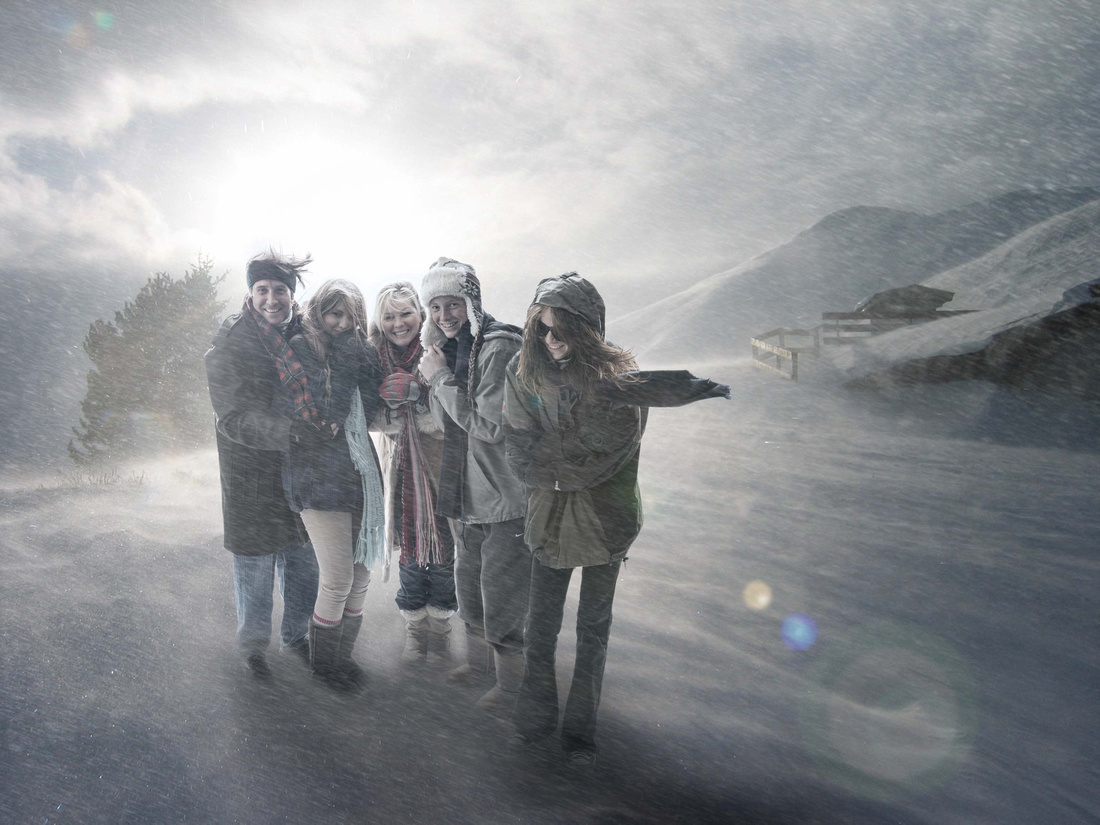 Ah, what could be more cheery than standing in a blizzard on the side of mountain? What Yuletide joy.
Ah, what could be more cheery than standing in a blizzard on the side of mountain? What Yuletide joy.
For this image for the client's Christmas card, one option was to fly to the Yukon and hang out in a cabin on the side of mountain until the weather turned nasty. For various reasons – not the least of which included my distinct dislike for temperatures below 65ºF – that was out of the question. The only real choice was to create it in the studio and computer. We shot the family in two sessions, lit so it would composite over an image selected by the client, and purchased from iStock. I've been asked how we made the wind look so real.
Okay, here's the trade secret: To make wind look real, use (ready for this?) . . . WIND. We had a powerful shop fan and blasted the talent with it.
The result, instant familysicle. The look we wanted wasn't "wish you were here." It was "be glad you're not here," and I think we accomplished it.
]]>
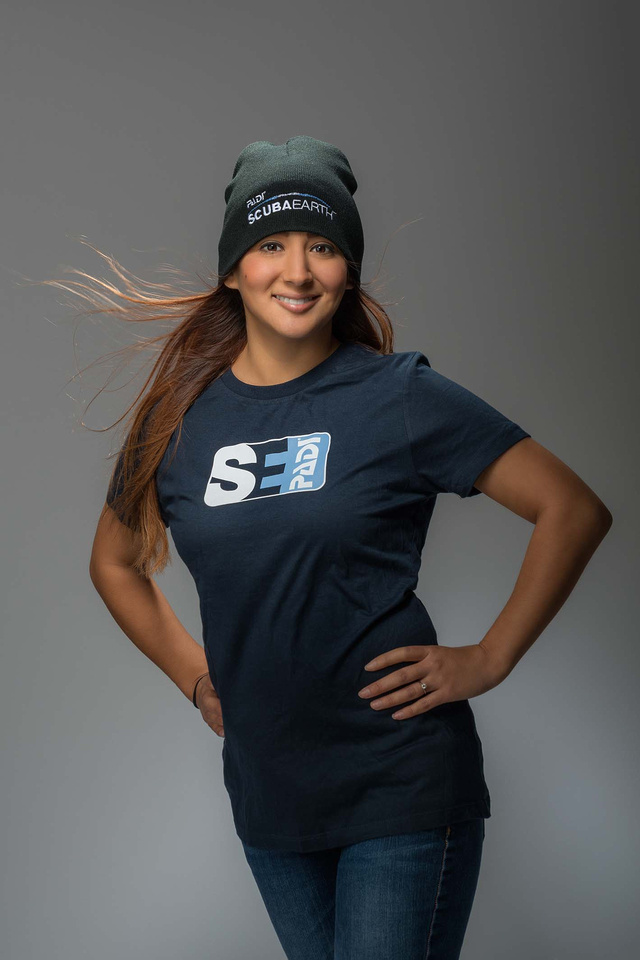
Pop quiz: How many lights did we use to create this image of ScubaEarth.com fashion wear?
Two?
Try again.
Three?
More.
Four?
Getting warm
Five?
Not quite.
The answer is six lights.
If you're not familiar with studio fashion imaging, you may be surprised that such a simple shot (it should look simple) takes so many lights. It's not a matter of brightness, but a matter of shape. When we're imaging, we use lights as chisels that carve the illusion of three dimensions from a two dimensional photo. Each light does a different job in what you hear called "lighting," but which is actually just as much shadowing. Here's a behind the scenes shot:
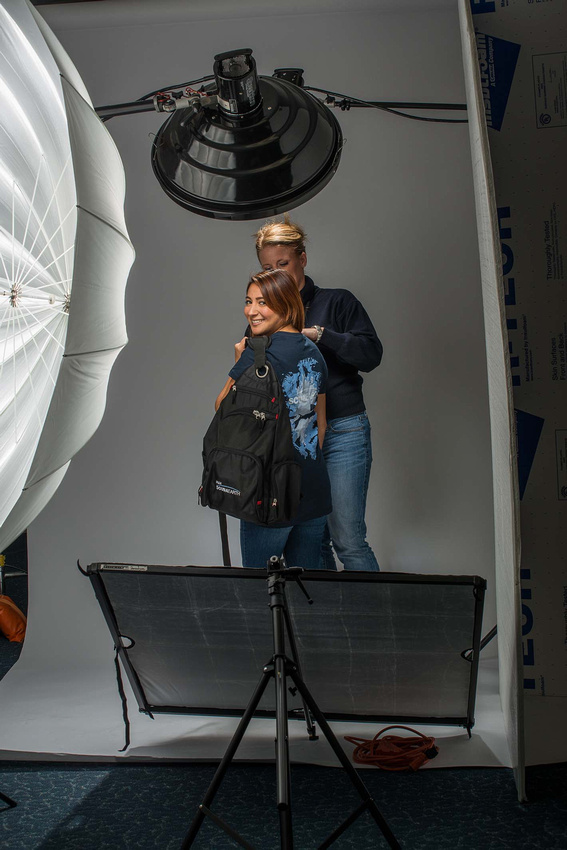
Looking at this, there are six, but only five are visible. First, hidden by the model (and my PA Niccole in this shot) is a strobe head you can't see, but if you shoot, you should be able to tell it's there because it illuminates the backdrop. Then, there is a strobe shooting through the umbrella on frame left, another strobe head with the beauty dish (light with big round reflector at top of frame), and a strobe hair light that you can see just behind the beauty dish. That's four. The last two lights are the big silver reflector below the model angled up at her, and the V-flat on frame right.
At this point, some may be screaming that reflectors are reflectors, not lights. Without getting into an argument with Webster, no, from a photographic point of view, reflectors are lights just as much as strobes are. Whether it is a strobe, reflector, a wall, ceiling, someone in a white dress or whatever, photographically, anything that sends enough light towards the subject to be visible in the captured image must be treated as a light that is subject to all the principles of lighting (inverse square law, family of angles, hardness proportional to two-dimensional relative size, etc.)
Failure to think in these terms commonly cause problems lighting and learning to light. Photographers sometimes decide that something is or is not a light based on whether it emits photons instead of whether it changes the light falling on, and reflecting from, the subject. Or, they only consider something a light if they placed it to light the subject. Either is a mistake because it neglects the fact that light is light, even if it's a stray reflection off a broken Coke bottle 20 feet out of frame, and therefore affects the shot. A professional photographer or photographic artist doesn't neglect this because you can't get reliable results any other way.
If you hear someone say "I didn't use any lights for this shot," it's only true if the person then shows you a black rectangle. Otherwise, the person either doesn't understand, photographically speaking, what a light is, or the person doesn't know how to count.
]]>
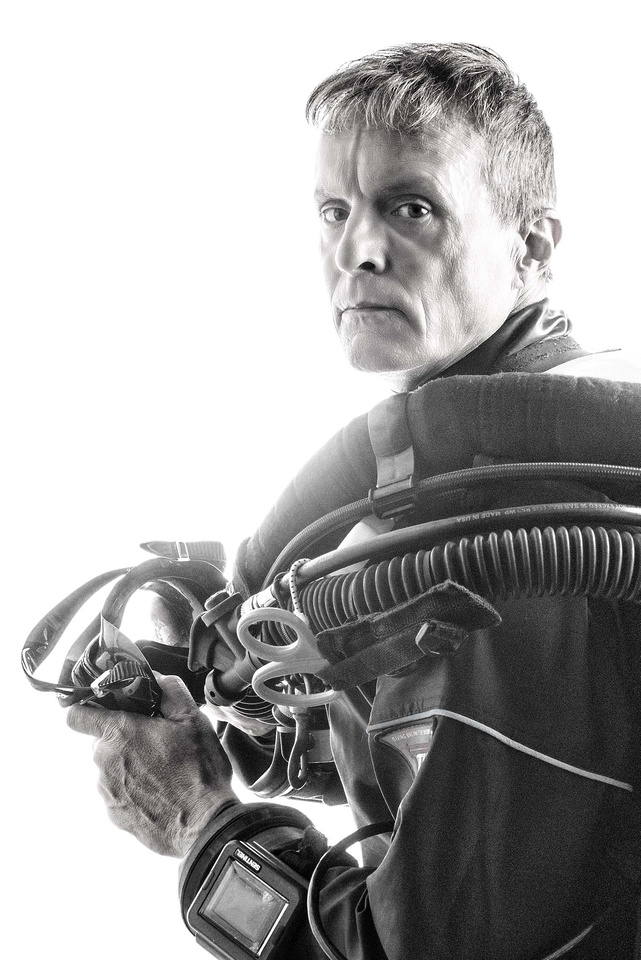
Since I have a keen interest in dramatic portraits, I'm always exploring new techniques for creating them. In particular, I'm always looking for new ways to show character, which is often a euphemism for not flattering (in dramatic portraiture, you commonly hear that everyone except the subject loves the result). So, to try some new approaches to this, I needed a model who already knows he's not exactly eye-candy. That way, my dramatic, facial-lines-enhancing, age-exaggerating image hopefully wouldn't insult him .
Another part of my purpose was to gain experience with some new lighting equipment. To this end, I decided to play with high key lighting (that means bright background, diffuse with almost-but-not-quite blown out highlights, and often, reduced overall contrast). For more character depth (no pun intended) I wanted to shoot a technical diver because you don't see many high key shots of tec divers. So to pull this off, my model would also have to be someone willing to tolerate sweltering out a quart of sweat while standing around in 80 pounds of scuba kit and a hot dry suit for the 45 minutes I needed for the shot.
Dilemma: Where could I find a tec diver model who is this ugly and who lacks the mental capacity to refuse?
Eureka!
It's a self portrait.
My wife says it makes me look 10 years older and not one bit handsomer or smarter.
Success!
]]>
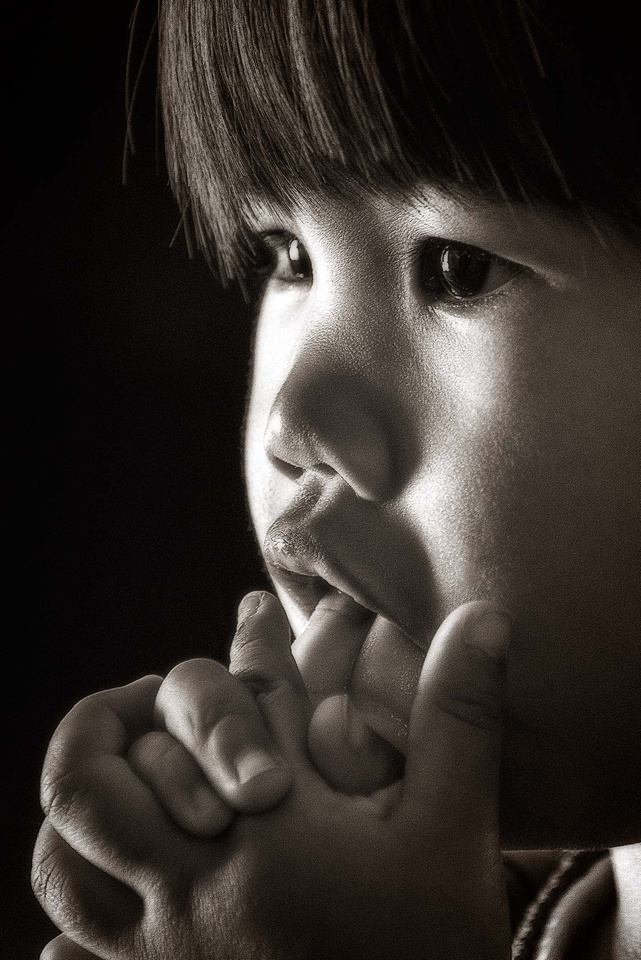
The first photographic image was black and white. Everyone -- pros and snapshooters -- shot primarily black and white for photography's first 100 years, even after the invention of "mass" color imaging (Kodachrome) in the 1930s. Black and white died almost over night in snapshooting when color film and processing cost the same as black and white (eventually, color was actually cheaper). But, among serious imagers, black and white stayed popular. This was partly driven by the ability to further refine exposure, control contrast and selectively "burn" and "dodge" prints in the darkroom (you could do it in a color darkroom, albeit not as easily).
Today in the digital age, black and white has zero advantage over color with respect to cost or to post processing. Yet, black and white remains. It's common in portraiture, and very common in fine art imaging. Editorial fashion uses it, too.
I suppose every artist has a different opinion as to why black and white survives, and perhaps they're all correct. I think it's because when you look at a black and white image, color doesn't distract from the shapes, textures and gray shades. This heightens drama, and we infer feelings that differ from what we would infer from the same image in color. Add a hue to black and white, and it stamps its full emotional weight without competition.
In this shot of my daughter, black and white separates her. It shows her alone in her thoughts. We feel her isolation, but that's not the whole story. The warmth of a very gentle sepia restores an intimacy lost in cold whites and grays. We feel her alone only in her thoughts -- not alone in the world.
The same image in color doesn't feel the same way at all. It doesn't feel right. It's little more than a mildly interesting snapshot. It doesn't work.
Black and white is pure. That's why sometimes, it is more vibrant than color.
]]>
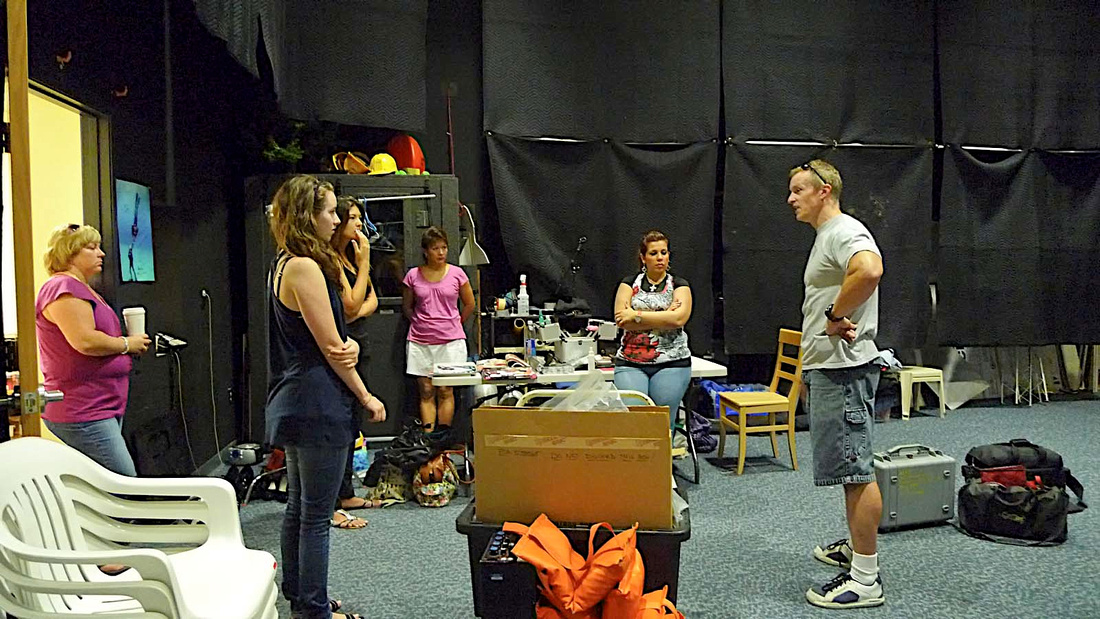
As a photographic artist, I’m guilty of what many professionals do when you interact with them: I use “photo slang” and technical terms that aren’t always clear to those outside our vocation. That’s not friendly or service-oriented, and if I’ve done that with you, please accept my apologies. It’s not conscious – everyone in imaging-making tends to do it because “insiders” share a common language. I’m betting you do the same when conversing with others involved in your vocations and avocations.
But, apologies don’t solve anything. So, for those who contract or work with image makers, or if you’re new to the field, here’s a short conversational guide to common expressions, and what they mean, divided into two categories.
Image Quality and Retouching
“These images have a light, dreamy quality.”
means
“These images are slightly out of focus.”
“I used dark, low-key exposure [or “bright, high-key exposure] to enhance the mood.”
means
“I don’t know how to use a light meter.”
“Loss of skin detail is normal when finishing this type of image.”
means
“The retoucher doesn’t know how to retouch skin.”
“We retouch just enough to reveal a subject’s true beauty.”
means
“We make everyone look at least ten years younger.”
“You’ll love these – and I barely had to retouch anything.”
means
“One hour each in Photoshop.”
“You’ll love these – and I only had to do basic retouching.”
means
“Three hours each in Photoshop.”
“You’ll love these, but I had to do a bit more than usual in Photoshop.”
means
(to female subject)) “I composited Jennifer Aniston’s face onto yours.”
“Among the hundreds of images we shot, I narrowed it down to these top 20.”
means
“My hard drive crashed without a backup, but I recovered 20.”
Production
“Ideally, let's start with a call time of 7 a.m.”
means
“We start charging you at 7 a.m., whether you’re there or not.”
“Secure that stinger near craft services with some C-47s while I calculate the depth of field.”
means
“Keep people from tripping on that extension cord next to the refreshments with some clothes pins while I make sure the image is sharp, but don’t say it that way or the client may think he can do this stuff himself.”
“The model has perfect skin, so we don’t need a makeup artist.”
means
“The budget was so low something had to go, so no makeup artist. And, there’s no craft services either.”
(To another photographer): “I’d love to have your help on set.”
means
“You can be my VAL (Voice Activated Light stand),” i.e., “I figure you have a general idea of which way to point a light you’re holding.”
(To a photo intern): “I’d love to have your help on set.”
means
“You can be my HLS (Human Light Stand),” i.e., “I will point the light and you will hold it.”
(To a model’s unemployed boyfriend who came along to “help.”): “I’d love to have your help on set.”
means
“You can be my HSB (Human Sand Bag),” i.e. “Sit in that chair and make sure it doesn’t blow away.”
]]>
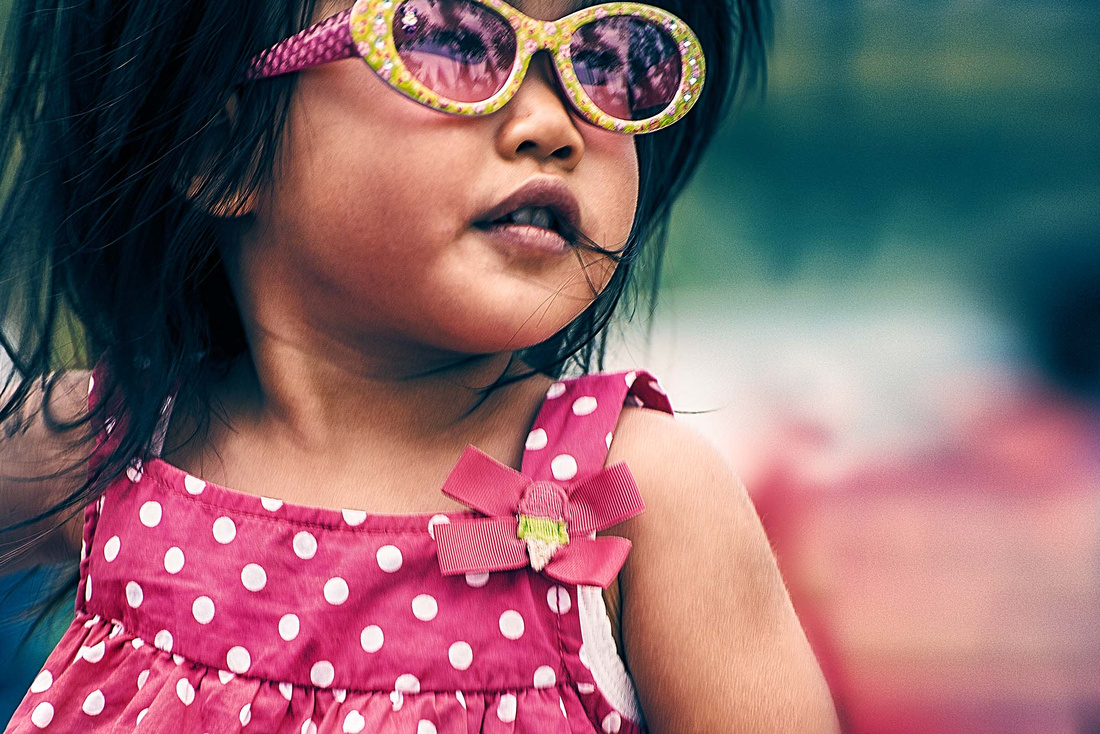
If you look at most of my imagery, you'll notice this shot (of my favorite model – my daughter) differs from my usual style. It doesn't have the crisp, concise imagery that I normally go for; it's soft. When I use pastels, normally I have something that stands out as brighter, or in a primary color; this one is entirely in muted hues. It took me two hours after-camera by the time all was said and done, and I expect that a lot of people won't even like it (art is subjective). I like it, but I trashed many shots working along this path. Normally, in a couple hours I can retouch and finish a lot more than one image (unless they're special composites, but that's another issue).
So, why bother? Because you can't grow as an artist unless you do something different from what you always do – unless you challenge yourself. You may fail to create anything newly wonderful (trust me), but you will always succeed in that you will learn something. Taking this on, I decided to think differently about my shots. The self-assignment was to work images I would normally trash, provided they had something I liked going for them. This shot is way too blurred for my normal tastes (two-year-olds don't hold still, unless they're asleep) , but I liked my daughter's expression. Also, it didn't have a background that fit the shot well. By working with textures, sharpening, midrange contrast, visual noise and complementary colors (introduced into the low and mid, and mid and high tones, respectively), I think I overcame this, but in any case, I came up with something that for me, is new and different.
In a few weeks, I'll look back with fresh eyes and decide whether I created something worthwhile. If so, I'll probably continue to see what I can learn by working in this direction. If not, it was still worthwhile, because now I know.
Some of the best advice I ever heard applies to many things, but especially to being creative: "Think left and think right and think low and think high. Oh, the thinks you can think up if only you try!"
That's Dr. Seuss. Maybe we should hang out with two-year-olds more often.
]]>
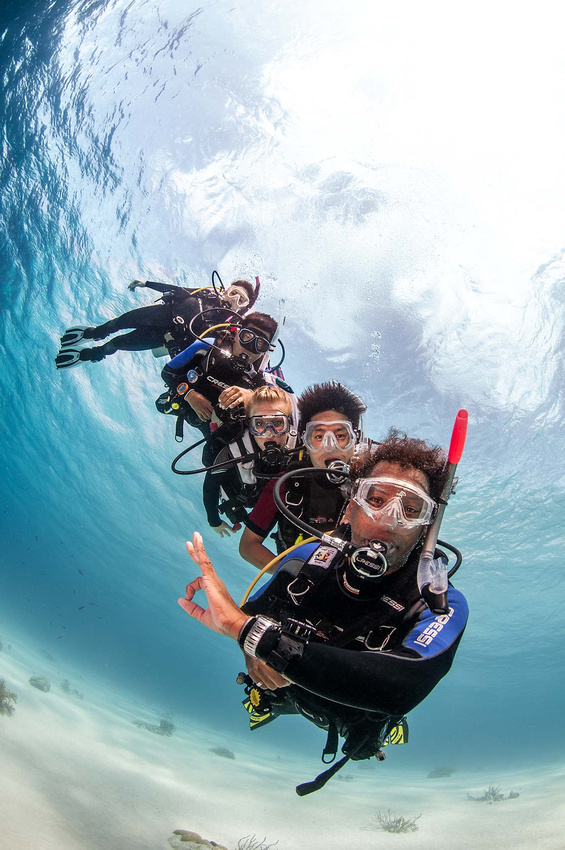
Sometimes people ask me where I get the ideas for some of the images I get to create (with the help of many, many talented people who work with me). My answer is sometimes we have to sweat out a concept, and sometimes a wonderful idea springs from the warped recesses of my mind, or the less warped recesses of someone else's mind.
The image above is an example of the first. Some of the professionals I work with on The Undersea Journal -- Theresa, Aja, and Todd -- and I were kicking around ways to show how PADI professionals lead people into scuba diving. We thrashed around one bad idea after another for at least an hour, until someone suggested that we be literal -- show someone leading divers, single file. I sketched out the concept (below -- and now you know why I shoot instead of draw) and suggested we shoot it almost vertical (which we did). The result was the image above, and the cover below.
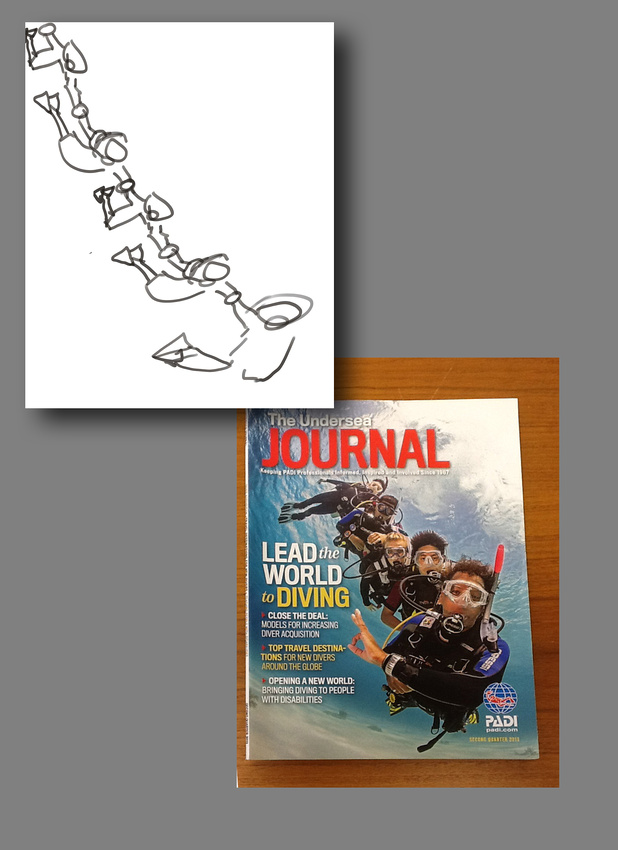
The PADI "Angel" shot was the result of an idea popping to mind. We working on another project and it occurred to me that some of the banners we were using look like angel wings. During a break from the "real" work, my friends Mike, Abe and Hernan willingly delayed hard-earned breathers to execute the idea. This BTS (Behind The Scenes) shot shows the basic setup:
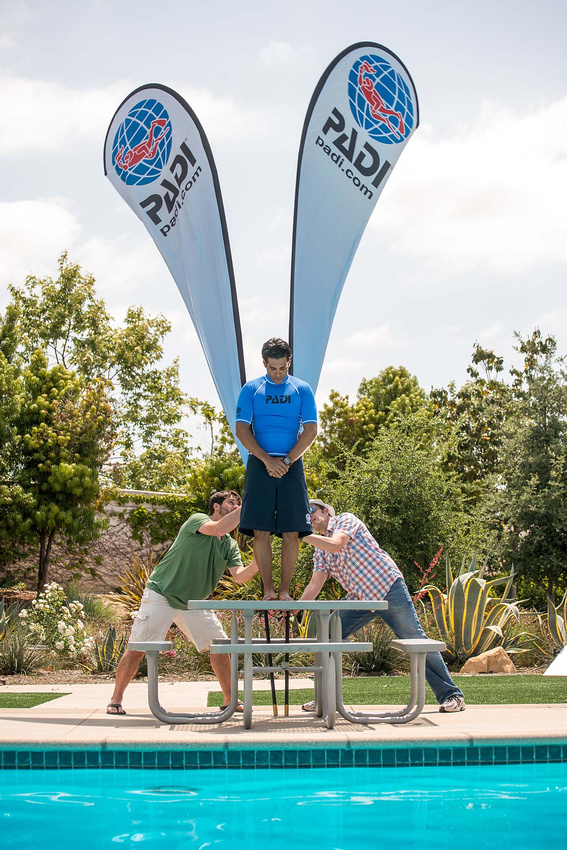 It took about 30 minutes of getting things adjusted, but we finally got a master image I could carry through to the final concept. Later, after four hours in post work, I had something that was more than my initial vision, thanks to further inspiration as I Photoshopped:
It took about 30 minutes of getting things adjusted, but we finally got a master image I could carry through to the final concept. Later, after four hours in post work, I had something that was more than my initial vision, thanks to further inspiration as I Photoshopped:
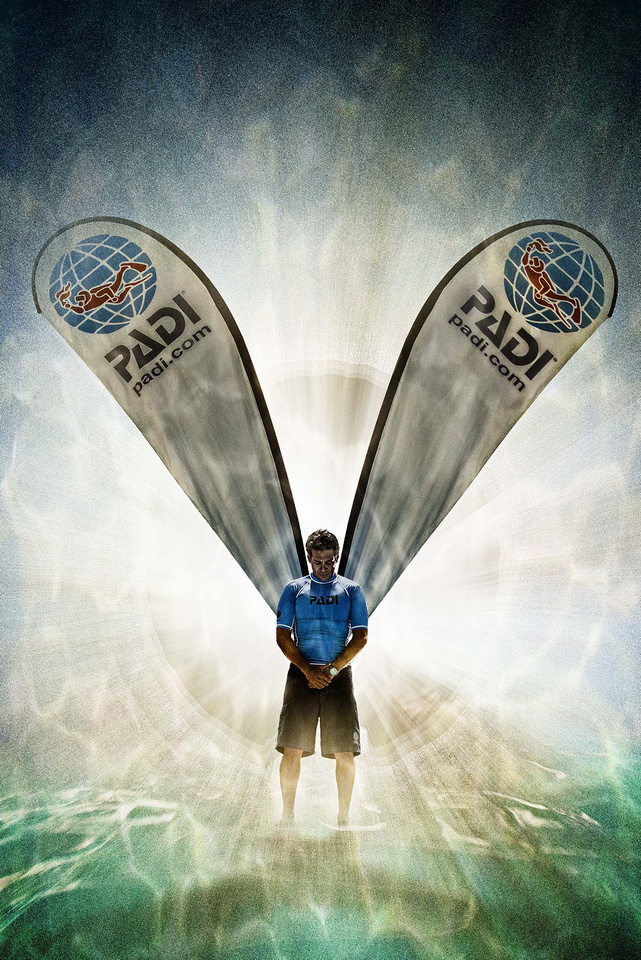
Here's the point: Whether "the" idea results from hours of beating our heads against the wall, or simply a flash of insight, bringing the concept to the computer screen (or to print or wherever it's going) takes work. These images weren't snapshots that got banged off in a moment. They took patience, teamwork, lighting and multiple exposures to get the needed capture, followed by hours (cover shot) retouching, and then even more hours (angel shot) crafting the final conception.
If you create a remarkable image, you may or may not have inspiration. But excepting a few lucky shots now and again, you will always have perspiration.
]]>
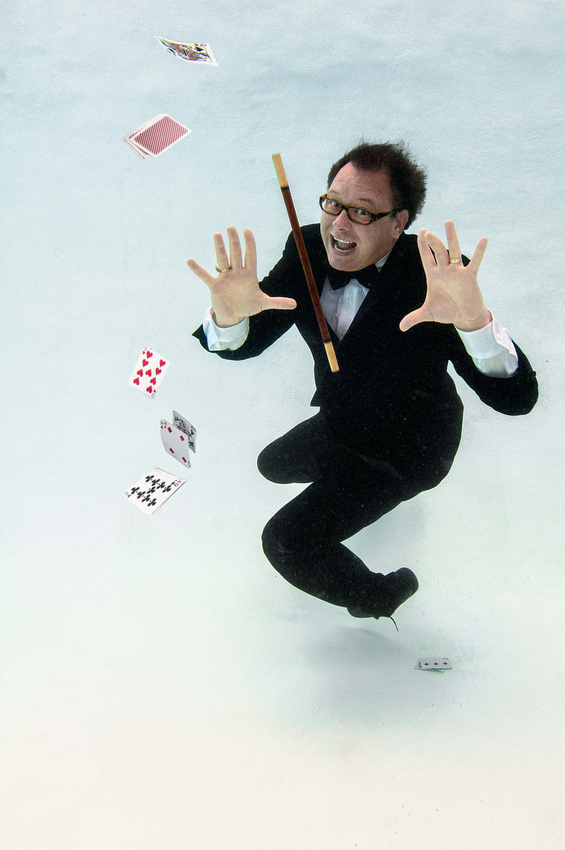
One of the most frequent requests I get is to shoot underwater models and portraits who are not scuba divers -- like this one of professional magician Scott Tokar. To get this shot, we were 12 feet deep and he's fully dressed, holding his breath. Besides me, there are two underwater photo assistants supporting (check out this behind scenes image).
These types of underwater portraits and fashion are harder than they look for the subject/model. There's a lot more to it than sinking to the bottom of a pool for a moment while I snap-snap-snap. Forty years ago, underwater photos impressed people just because they were underwater. Today, even snapshooters take cameras underwater, so it's not enough if you want a striking image. Someone who can't pose effectively doesn't give me anything to work with, and that's the start point in imaging. Scott, who is both a professional photographer and experienced PADI Rescue Diver, shows what it takes:
1. Comfort in water. You have be to be completely and relaxed with your ability to hold your breath, swim and work in water. Being a scuba diver is helpful, but not necessary (I have photographed many talented models who were not divers). Scott can easily hold his breath and pose for 30 seconds, which doesn't include the time to get to the pose and to return to the surface or a scuba air supply to breathe. Notice that his mouth is open? He's not freaked out by letting water in it.
2. Eyes open. Scott's eyes are not only open, but they are wide open and they look just like they do if he weren't underwater. Many people squint or don't open them at all -- just doesn't work for imaging.
3. Playing to camera. Scott's cheeks aren't puffed out and he's playing to camera. He's expressive, giving us something interesting to see. He's using appropriate props and wardrobe. These are especially critical for this type imaging because the bottom of a pool is sterile and boring -- it's all him or we don't have anything worth looking at.
4. Using the environment. Scott's feet are off the bottom, with his wand and cards suspended in the water. There's no point in going underwater and then creating an image that doesn't differ from what you could take on dry land. Scott uses the water to give me a portrait that would take a lot of planning and Photoshop work out of the water.
Think you have what it takes? If so, let's give it a go.
]]>
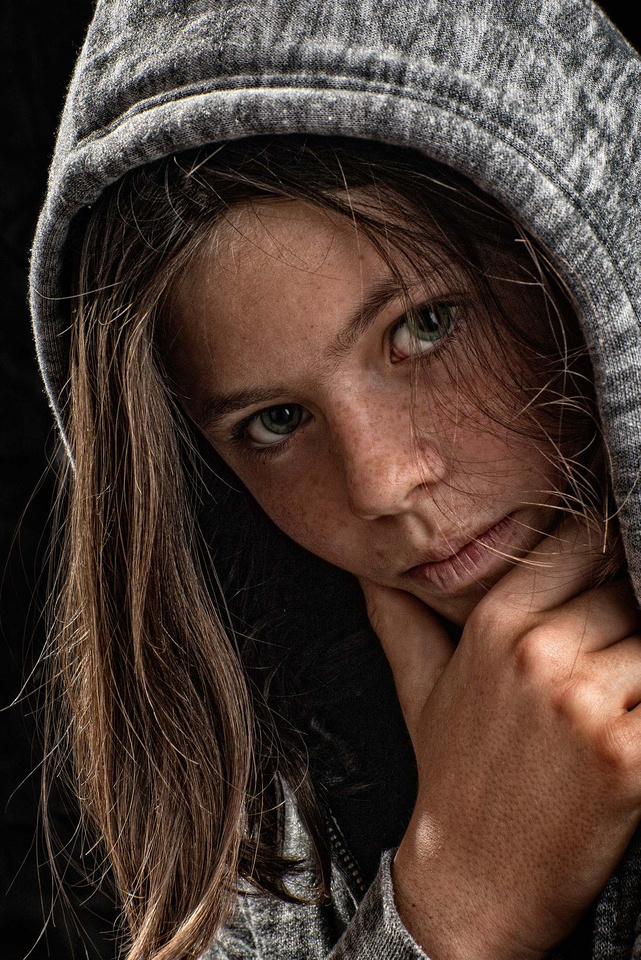 Sometimes an image's success lies in how much you (and I'm talking to both shooters and subjects here) commit to it. If you're not a professional model/actor, it may feel weird to have a camera jammed in your face (this alone makes many people uncomfortable) and then be asked to "show me relief," or " look optimistic." If you're behind the camera, you may feel uncomfortable asking for anything other than "smile" (which invariably nets a cheesy, fake grin). But, the magic happens when both sides stop being shy and go all in. This is why I need models/actors for a lot of my work. They don't feel awkward when I say, "Look pensive!" or "Show me dismay." They commit to the looks and emotions I ask for, and they don't feel weird doing it (or if they do, they hide it, I suppose). A particular emotion may or may not work, but it's part of the process as we build to the desired results.
Sometimes an image's success lies in how much you (and I'm talking to both shooters and subjects here) commit to it. If you're not a professional model/actor, it may feel weird to have a camera jammed in your face (this alone makes many people uncomfortable) and then be asked to "show me relief," or " look optimistic." If you're behind the camera, you may feel uncomfortable asking for anything other than "smile" (which invariably nets a cheesy, fake grin). But, the magic happens when both sides stop being shy and go all in. This is why I need models/actors for a lot of my work. They don't feel awkward when I say, "Look pensive!" or "Show me dismay." They commit to the looks and emotions I ask for, and they don't feel weird doing it (or if they do, they hide it, I suppose). A particular emotion may or may not work, but it's part of the process as we build to the desired results.
Portraits of people who are not professional models or actors work the same way. When you commit to the emotions and expressions I ask for, we're far more likely to end up with something special. This image of my goddaughter Corey is a case in point. The first couple of shots had no direction and as a result, were simply well-lit but ordinary images of a young lady. My bad for not giving direction, but fixable. Knowing that she's been doing some acting (see this image), I asked her to play a character who is being thoughtful. Without hesitation, she pulled up her hood and became contemplative. It was working, but not quite there, until I turned her to deepen the shadows. Ding!
Maybe you want (or need for specific purposes) something light, with a smile. No worries -- it's the same process. Commit to exhilaration, joy, contentment, rapture, hope . . . . whatever, just let the appropriate emotion take you over -- and that's what the camera will capture.
]]>
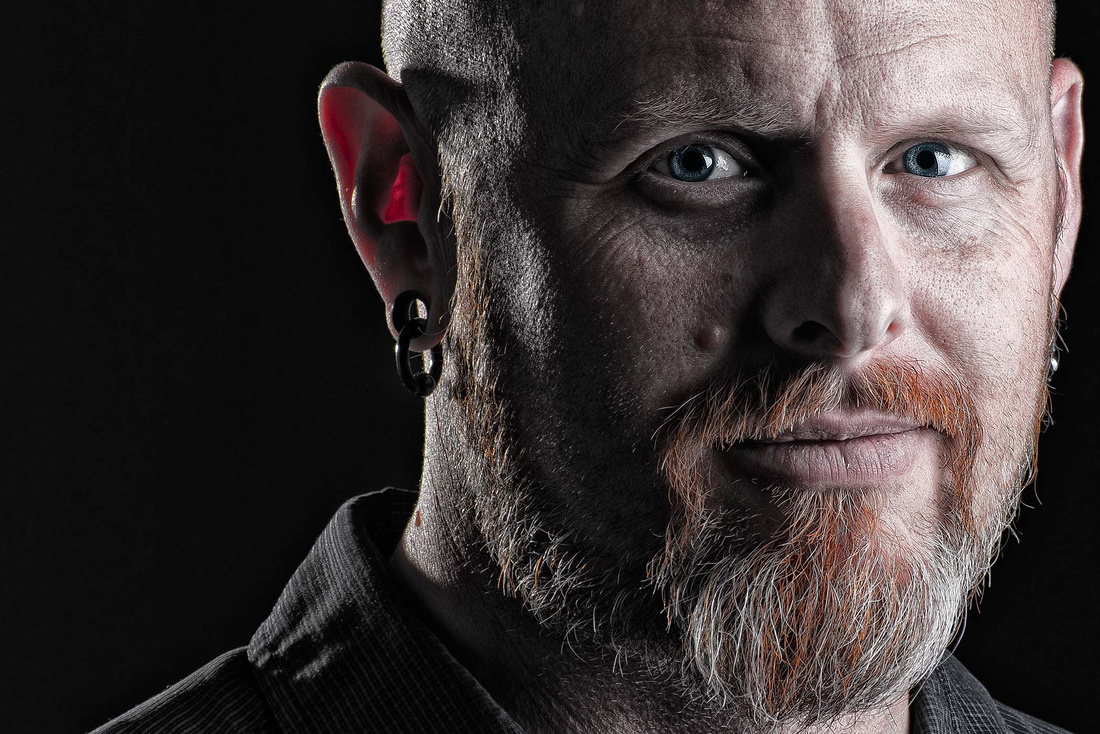 Portrait photographers draw upon several classic lighting styles, some of which date back centuries to the master painters. This image uses a style called "Rembrandt" lighting, made famous by 17th century painter Rembrandt Harmenszoon van Rijn. The hallmark of the style is that the shadow side of the face has a triangular light splash on the cheek, framed in shadow. You can see this in many of Rembrandt portraits, including many of his self portraits. Although Rembrandt's works portray many lighting styles, and other artists used this one, supposedly director Cecil B. DeMille was the first to call this "Rembrandt lighting," and the name stuck.
Portrait photographers draw upon several classic lighting styles, some of which date back centuries to the master painters. This image uses a style called "Rembrandt" lighting, made famous by 17th century painter Rembrandt Harmenszoon van Rijn. The hallmark of the style is that the shadow side of the face has a triangular light splash on the cheek, framed in shadow. You can see this in many of Rembrandt portraits, including many of his self portraits. Although Rembrandt's works portray many lighting styles, and other artists used this one, supposedly director Cecil B. DeMille was the first to call this "Rembrandt lighting," and the name stuck.
In looking at this portrait, surely some purists will scream that this isn't Rembrandt lighting. That's because "true" Rembrandt lighting uses only a single light, whereas in this image, a second light source illuminates from image left. So? A good artist applies the Pirate's Code principle when following the classic lighting styles. As said by Disney's Barbosa: "And thirdly, the code is more what you would call guidelines than actual rules."
In creating this image, we started with classic Rembrandt, then adjusted until we had shots that work. Post processing adjusted color and midrange contrast to emphasize detail, so that we created a dramatic portrait rather than a vanilla headshot. Whether or not you agree we succeeded, we probably ended up with something different from what Rembrandt would have painted. Though I would never compare my work to Rembrandt's, I think Rembrandt would appreciate that today's artists build upon the principles that he and his contemporaries pioneered. He'd roll over in his grave if we used them as chains.
]]>
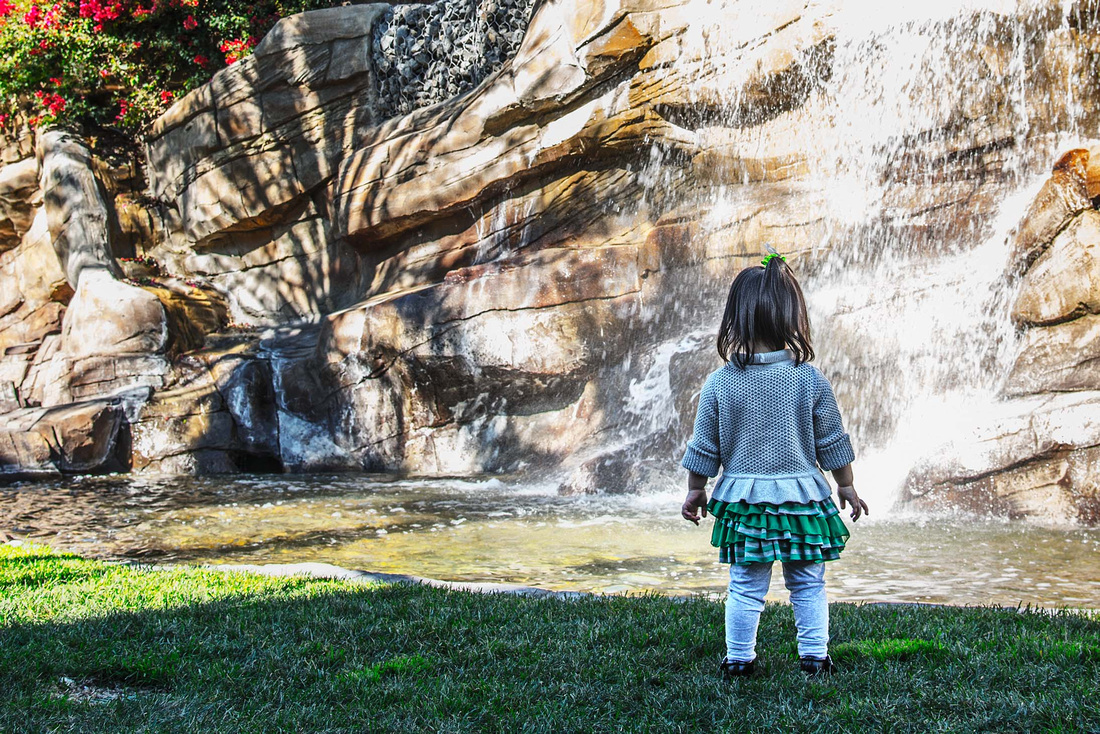
For whatever reason, I often find I capture images of children that, based on the comments I get, speak to many people (a good skill to have as a dad, BTW). I'll share a secret -- imaging children well doesn't take patience. Well, it shouldn't, at least. When I put kids in situations where I need patience, I rarely get shots I like. This has taught me to avoid photoing children in the studio, and to avoid staging or posing them as much as possible. For me, the better approach is to put children where I have good light, let them be themselves and be ready to capture the special moments.
That's what I did with this shot of my daughter. Shooting someone facing away doesn't usually work, but in this case, her body language shows us her wonder at water cascading down a rock face into the pool. She is fascinated by water, so this waterfall fountain gave me more than a few moments to get a frame that reveals her fascination.
What child images speak to us? I think they're the ones that let us see the world through a child's eyes. They take us back, and remind us that there was to a time when waterfalls were new and wonderful, pinwheels were special and magical, and Saturdays seemed to last forever. They make us young again by reviving the children within us.
Legend has it that explorer Ponce de Leon spent more than a decade looking for the Fountain of Youth. He could have found what he was looking for in ten minutes with a youth by a fountain.
]]>

This is Niccole. Who is she? Let me tell you: Take away my light meter, my go-to softbox, the best lens in my kit or my number one tripod, but don't take away Niccole. Or Dawn, Shawn, Scott, Ted, Toby or many other talented people who assist or have assisted me when I shoot. All the attention is on the model/subject(s) and the photographer at a shoot because they're the place where all the work comes together, but they certainly don't do all the work. Assistants make a HUGE difference by making everything go more smoothly for everyone, because they do the little things that make a big difference. It's not always obvious just how big a difference they make.
For example, when I ask Niccole to turn a light slightly, it takes her less than a second to make the adjustment. I could do it, but I would have to walk all the way over and back, and that takes a minute. Twenty times on a setup means 20 more minutes to get the shot, so she saves your value time if you're the client. And, through experience, she knows precisely how much a smidge is when I say, "cheat the light a smidge toward talent. . . woof!" (For reference, a "smidge" is less than a "bit" but more than a "hair.")
When Dawn sets up a shoot, she does it faster and better than I ever could, and doesn't forget the details I invariably would. She also knows how to politely tell me to where to go when I tell her I want to reschedule so that I more than happly shoot at the time she sets to begin with. My friend Scott recently "assisted" me on a wedding for two close friends (I don't normally shoot weddings, but this was an exception). In his case, "assisting" meant "shoot the stuff I'm not good at shooting" because he's a way better wedding photographer than I am.
Good assistants like Niccole, Dawn, Shawn (that's my wife), Scott and so on make me look good. When you see Niccole whisper in my ear, she's not telling me my fly's open (not usually, anyway). She's reminding me (as I asked her to) to get the profile view you asked for. Or, more importantly, she's suggesting the shot that will be the one you absolutely love and give me the credit for. But, you won't hear her or Dawn or any of the others shout out their ideas. Why? Because that causes chaos. Good assistants flow everything through the shooter (or director in motion imaging) so good ideas don't die in the confusion of who listens to whom, when and why. (By the way, if you shoot but don't listen to your assistants' ideas, get over yourself and start listening. Otherwise, you'll not only stop getting their ideas, but you'll be adjusting all your lights yourself). Good assistants have great people skills, too. When I see Dawn whispering in a client's or model's ear, I know she's saying something reassuring, like "Please sign this model release, and don't worry, he's not as stupid as it looks."
Assisting is sometimes a sit-here-while-I-test-the-lighting job (so you don't have to if it's a shot of you). Usually, I delete test shots, but sometimes I get one I love. So, you now you get see the real talent.
]]>
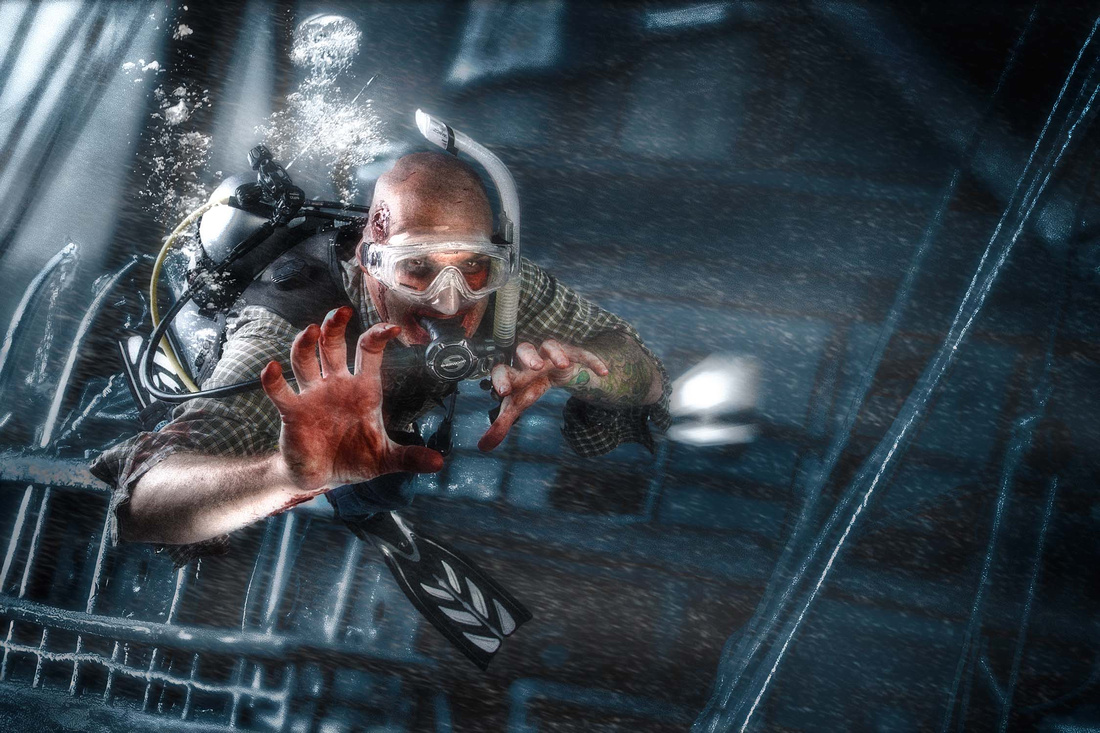 This is a favorite image. The CEO and president of PADI (the company for which I work) requested a picture of a zombie diver for a presentation at the dive industry's annual trade show. Fortunately, he made the request the week before our annual Halloween party -- and as good fortune would have it, my department had already planned to come as zombies.So, I knew I'd only have to pick an appropriate zombie, deck him out in scuba gear and put him underwater (or her, to be fair).
This is a favorite image. The CEO and president of PADI (the company for which I work) requested a picture of a zombie diver for a presentation at the dive industry's annual trade show. Fortunately, he made the request the week before our annual Halloween party -- and as good fortune would have it, my department had already planned to come as zombies.So, I knew I'd only have to pick an appropriate zombie, deck him out in scuba gear and put him underwater (or her, to be fair).
The "put-him-underwater" part would be the challenge. We didn't have time or funding to go on location, nor does most makeup hold up to being submerged, unless it's specifically for underwater (and even then it doesn't last long).
We solved the problem by shooting this image in the studio. The model, Tod, is not underwater at all. Here's how I crafted the shot:
First, I went through my library of stock images (it's always great to have a library of stock images) and found shots of a ship model I'd taken about four years ago. The model was about 3.5 feet long, so I had taken multiple shots to give it a relatively even focus. I composited the shots together, then, created the color, lighting effects, silt, haze and so on to create the background.
In the studio, I shot straight down on Tod, who is looking straight up. The lighting was set up vertical-for-horizontal to match the background shot. I took the master of Tod and then retouched it to make him more zombie-ish (Tod doesn't really have the big dent in his head), then composited it on to my background. To blend it smoothly, in compositing I created transitions of color-haze-silt and so on so that our zombie looks realistically like part of the shot, yet separates to create the sense of depth (that is, 3D depth, not diving depth). The finishing touch was borrowing some bubbles from one of my underwater images.
The image was a big success. Perhaps the biggest compliment I get is from photographers -- including underwater shooters -- who don't realize this isn't a real underwater shot. There's another composited zombie shot you can check out (not underwater) of Tod and zombie Dawn (Dawn of the dead) in front of a spooky barn (again, created for the shot).
A caution: If you think this kind of image manipulation replaces the need to actually take underwater images on location, guess again. The time it takes to do it in Photoshop is so long that if you have more than two or three images you need, it's more time and cost effective to shoot underwater for real.
]]>
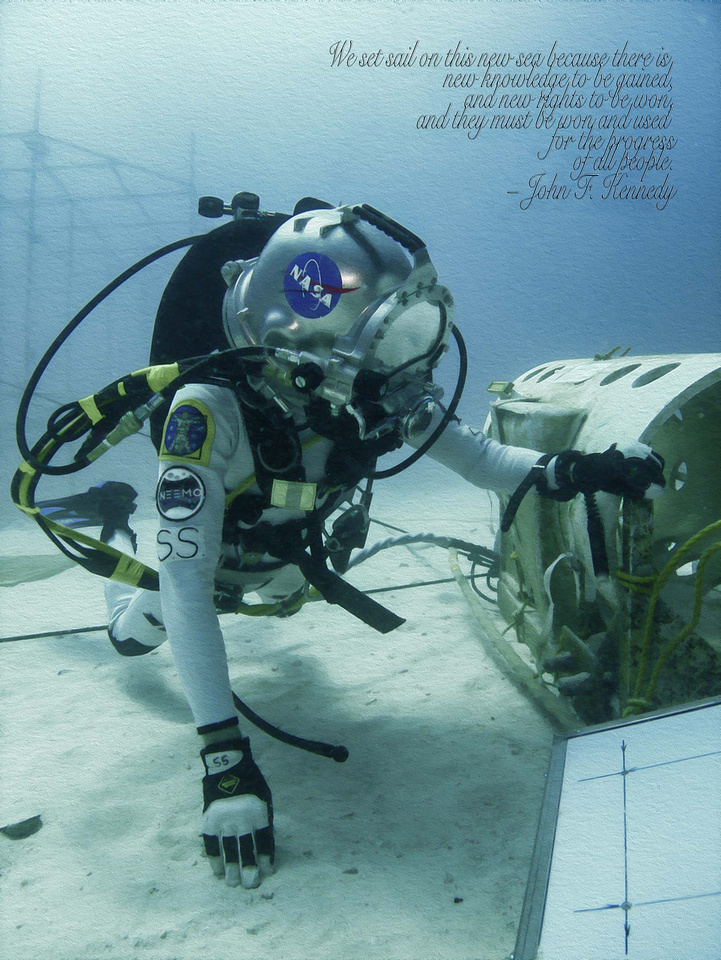
Since 2001, I've been blessed and privileged to work on the NASA NEEMO (NASA Extreme Environment MIssion Operations) as a trainer, diver, investigator, support person and yes, photographer. These missions operate from the Aquarius habitat off of Key Largo, Florida. If you're not familiar with it, Aquarius has been the underwater equivalent of the International Space Station for more than 20 years. It sits in 60 feet of water in the John Pennekamp underwater preserve, and allows scientists to live underwater for periods ranging from a few days to a couple of weeks. It's not a submarine -- divers live in it at the same pressure as the surrounding ocean.
Operated by NURC (National Underwater Research Center) and owned by NOAA, Aquarius is a national treasure. In its career, it has hosted hundreds of unique undersea research projects -- unique in that there is no other underwater habitat like it in operation anywhere, by anyone. Beginning in 2001, NASA started running NEEMO missions to study spaceflight dynamics. A crew of four NASA divers --usually three astronauts and a scientist -- along with two NURC diver/operators -- explored different aspects of humans in space. What made Aquarius a one-of-a-kind test bed is that it is an analog environment, not a simulation. The missions were real missions, and NEEMO teams actually depended upon their life support systems to stay alive. The 16 NEEMO missions researched many questions that need answers as we move deeper into space, ranging from handling a medical emergency on Mars to the best way to explore an asteroid. The missions conducted interactive, web-based outreaches into schoolrooms and attracted high profile divers and explorers from around the world. Peripheral tasks broke new ground -- I was personally involved in creating a mosaic map of the Carpenter Basin in which Aquarius sits. The map took literally thousands of overlapping images and then joined them together to create a map with so much detail, you can zoom in on individual fish
Despite incredible knowledge gained (at a fraction of the cost to do so in space) through the NEEMO projects, as well as hundreds of marine research studies, Aquarius and its NEEMO missions are coming to an end. Unless some miracle occurs, Aquarius -- which can be operated for years for the cost of a single space shuttle flight -- will shut down at the end of 2012 due to government budget cuts. For all the things we see our tax dollars wasted on, it seems tragic that this useful, proven facility will be gone. As I write this, a team is slowly -- reluctantly -- dismantling the support operation facilities.
The image you see here is one I captured during what is likely the final Aquarius based NEEMO mission. It shows a NASA scientist working with mockups for asteroid-based exploration, and he's wearing a Kirby Morgan diving helmet, which is a good analog to a space suit; the white coveralls echo the white worn by astronauts. The Kennedy quote was from the speech that launched us to the moon; I used a very classic type font and gave the image painted look to honor the classic quote and suggest a moment worth special remembrance. When I created this last summer, none of us really thought we were conducting the last mission. Ironically, it was the most advanced, progressive and ambitious mission yet -- a lot done and a a lot learned. (Check out the clips on YouTube, including this one.
Actually, NEEMO will likely survive -- the project explores other extreme environments on Earth as a way of learning more about what we need to know to explore space. But, its inception and heart lie with the Aquarius underwater habitat.
If we as a country can't afford Aquarius, maybe a soft drink company like Red Bull can.
UPDATE: Aquarius and NEEMO survived! At the last minute Florida International University (FIU) took over Aquarius. Replacing NURC, FIU upgraded the operation and moved the shore base, so today it's doing well -- but continues to need public support. NEEMO continues to go there, with 20 missions as of August 2015. NEEMO XXI is scheduled for July 2016. Be sure to friend NEEMO in Facebook and follow @NASA_NEEMO.
]]>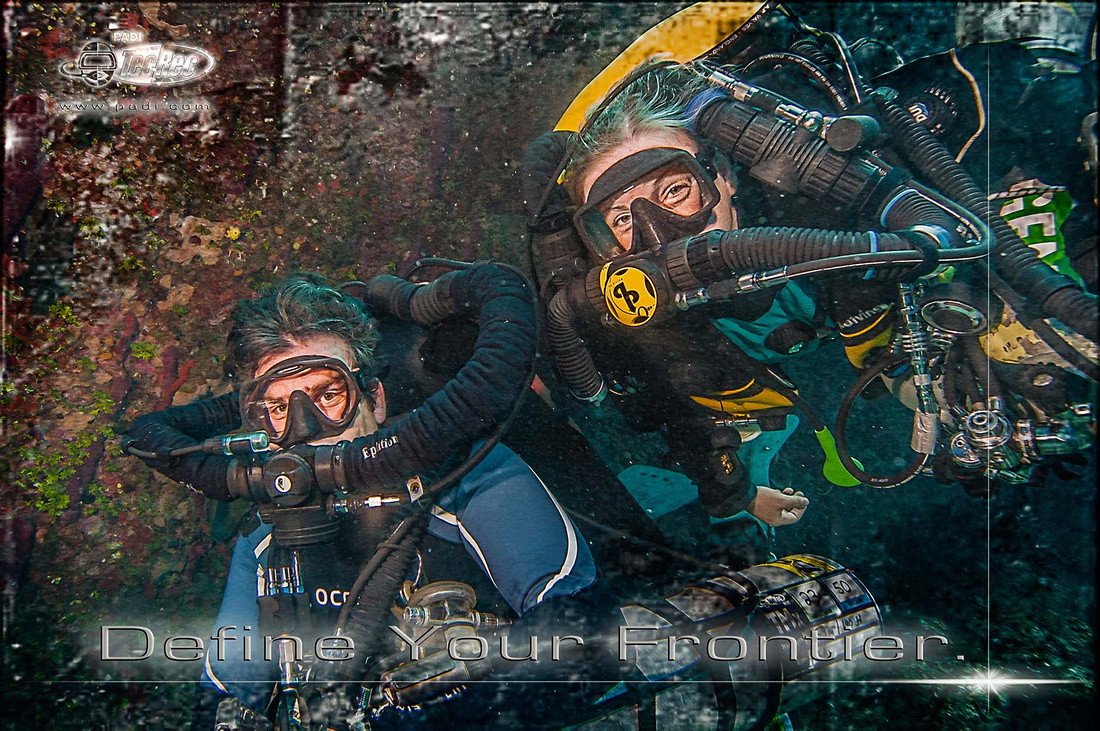 Copyright PADI 2012
Copyright PADI 2012
Every so often, it pays to go through your image files to look at your rejects with fresh eyes. It's a bit like panning for gold where it seems the vein has tapped out -- there's still treasure, but you have to sift through more junk to find it. These hiding gems don't jump off the screen like your big winners do, but they're worth your effort if you take the time to look.
We captured this image last March while shooting stills for the PADI Tec 60 and Tec 100 CCR Diver courses. On first pass, it looked a bit under exposed (actually, contrasty for those of you who know photography), and there was a lot of silt (suspended particulate matter). But, those problems are easy to fix in processing. Having done so, my goal was show the viewer the delight and joy you see on the model's faces, so in addition to localized color correction and other steps I use with underwater imagery, I added the texture and selective sharpening that makes the final version "pop." (Yes, that's the technical term.)
Lesson? If you're a photographer or photographic artist, go back through your didn't-make-its once in awhile to see what keepers got shuffled in. If you're a casual snapshooter, take some of those I'd-like-them-if-only images you never show (or shouldn't show) to someone who really knows Photoshop or Lightroom to see if they can be made into something.
]]>
If you know cameras and you've watched me work, you probably noticed that I generally shoot with my camera set on manual. Does this make my photos better? Am I better photographer than someone who uses the many automatic functions that modern cameras have?
Yes, it makes my photos better, and no, it does not make me a better photographer than someone who uses automatic exposure. To be honest, I shoot on manual because I think in terms of manual shooting -- it's what I've been doing for 30+ years now. As a professional, I'm mainly interested in getting the shot I want into the camera the most efficient way possible. It would be stupid to not use a particular tool just for the sake of doing something "the hard way." Why would someone do that? It's not like people look at your work and say, "Well, if you didn't use manual, it's not as good." No one cares how you get an image -- they care how good the image is. Shooting manually is what I do by habit and how I think, so most of the time it is the easiest and fastest way to get what I want. I'm not a purist and I don't have any qualms with using auto functions when they suit my needs -- you'll almost never catch me manually focusing. Why? Because autofocus focuses faster and better than I do.
Purists say "don't chimp" (that means, "don't look at the image on the back of the camera"). Are they crazy? The ability to check what I'm shooting and confirm my exposure with the histogram is one of the biggest leaps in shooting there has ever been. I would never go back to film. Heck, I SUPER CHIMP -- I send preview images to my iPad so I can look at them 8 inches by 6.
So if you notice me shooting on manual, don't read anything into it and don't compare with other photographers. Shooting on manual doesn't make someone better or worse as a photographer. The person whose images you like best is the better photographer.
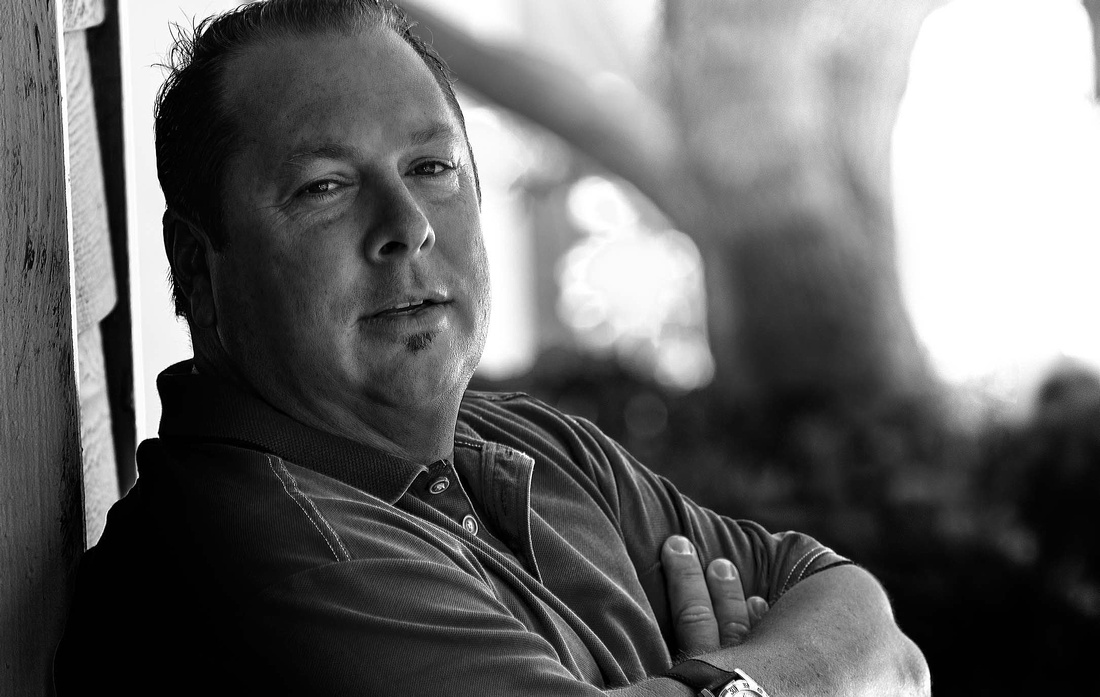
When shooting actors and models, the wonderful talent you tap into is their ability to create the persona you're trying to capture. These professionals have an innate understanding of what angles and light capture them best, and combine that with emotion, mood and expression to transform into the character you want in front of your lens.
As much as I enjoy shooting with models and actors, there's something special about the genuine article. That's what makes shooting dramatic portraits of real people with distinct traits so magical. I met the subject, Joe, a couple of years ago and in about two seconds, realized that the camera would love his distinctive look, which tells you that he's a rancher and cowboy. You can tell he's the real deal, not an "urban cowboy," model or actor, just from this shot. See how his hand caresses Babe's (Babe is his horse) chin? Babe clearly knows and trusts him -- and vice versa. He's no stranger to horses. His clothes just look right . . . not a costume, they fit but they're not overly tailored. They look like what he'd wear working his ranch because they are what he wears working his ranch. This was my favorite from several I love in a series with Babe. Although it's easy to overuse sepia toning, I think it works here as the final touch on a classic cowboy-and-his-horse portrait.
I won't deny that a skilled model or actor, backed by production team, could pull off this look with equal credibility. But, while I'd love to shoot Kurt Russell decked out as Wyatt Earp like he was in Tombstone, given the choice, I'd rather shoot the real Wyatt Earp -- and that's no slam on Kurt Russell.

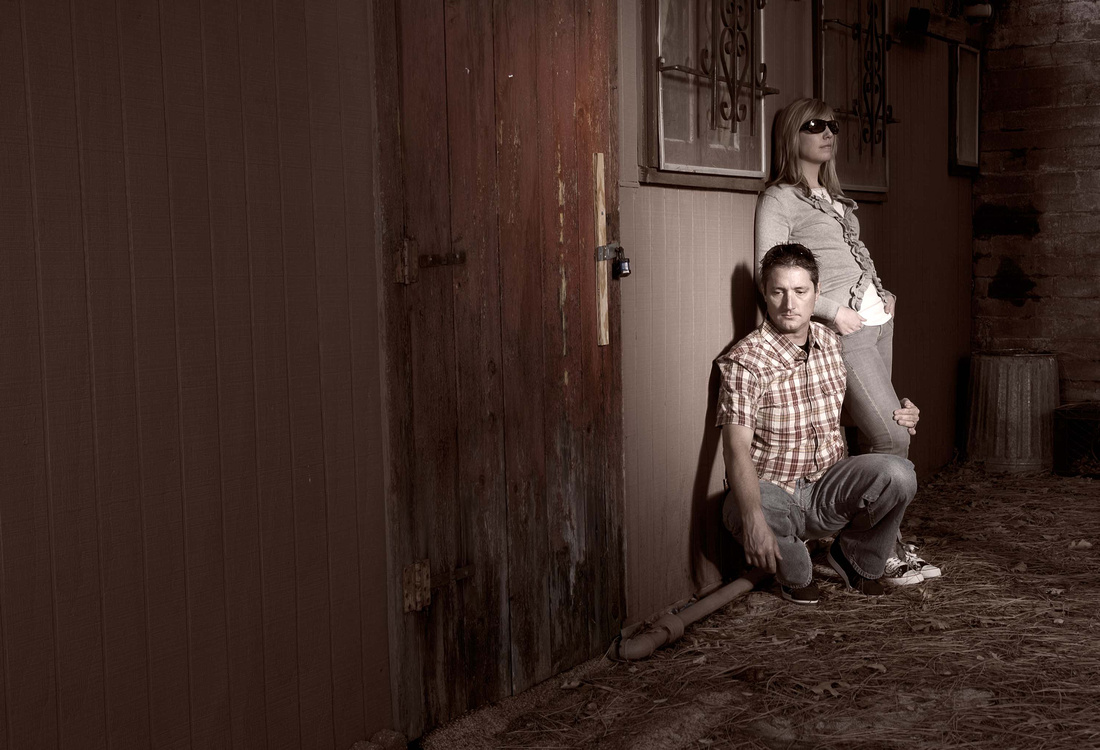 Copyright Karl Shreeves
Copyright Karl Shreeves
It was a privilege and also humbling, to present a two hour Dramatic Portraits Workshop this past Saturday; more than 100 people signed up, which was about 10 times what I expected! Although it was a large group, the presentation used audience interaction and discussion because without question, what makes a portrait "dramatic" is subjective. When I asked for the group's take on each image I presented as part of the workshop, I was fascinated at the opinions and feelings different people in the group had. They often saw my work quite differently from the way I do, or even from the way anyone had expressed to me before. I learned a lot just by hearing these views.
The image above was one that surprised me. It's a couples portrait (that much is obvious) of my brother-in-law and his wife, both of whom worked for the fashion industry at the time. As I interacted with them, I wanted to use a fashion-esque style and create a visual tension. I accomplished the tension by having them look in different directions (a visual technique I use often with multiple people in a shot). In my view, this doesn't detract from the relationship portrayal, thanks tothe intimate placement of his hand around her leg, and her forearm on his shoulder. To my surprise, not everyone saw it that way! A significant proportion of the group said that in the photo, because she's wearing shades and looking away, it looks like my sister-in-law doesn't really like my brother-in-law. Quite a few people saw this as a couple in conflict.
Wow, what an eye-opener! That's not what I was going for at all, and while a lot of people liked the shot (including me and, most importantly, my brother- and sister-in-law), I came away from this with several lessons. First, you'll never please everyone with a shot, even ones you love, but second, you can't forget the people you don't please aren't necessarily wrong (especially if they're your clients!). Third, I now understand better why, sometimes, clients love the shots you could take or leave, but diss the ones you're over-the-top about. What we read into the details -- and whether we see them at all -- can differ dramatically.
And, it reminded me that in photography, like all things, sometimes the teacher learns as much as those being taught -- or more.
]]>
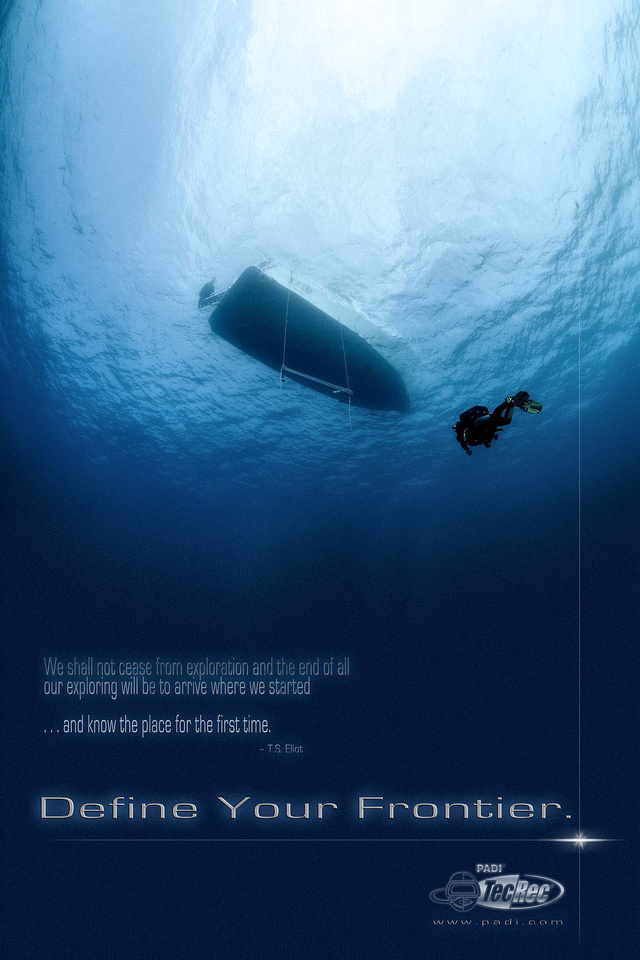 Copyright PADI 2012
Copyright PADI 2012
One of a professional photographer's jobs is to help you see things, but often it's also to help you feel things. When I shoot something that has the potential to do this, I enjoy working with it to maximize its effect -- in this case, by creating a poster for the PADI TecRec course series. These are courses that teach tec diving -- if you're not a diver, think "extreme" sport diving that goes deeper and uses more hardware than mainstream recreational diving. Recreational diving has well-established limits, whereas due to its nature, tec divers must (to some extent) explore and create personal limits -- hence "define your frontier."
Any tec diver will tell you that when you ascend from a long and/or deep dive, there's a moment when you look up and the surface seems to reach down, welcoming you home. If you're dealing with a problem, nearing the surface obviously reassures you, but the sense of "coming home" is there even on the most rewarding, perfectly executed, trouble-free adventures. It's the sense that you more fully appreciate the warm sun and fresh air that God gave us after you've been where both are very far away.
To me, this image of my friend Roz ascending to the dive boat captures this moment, and T.S. Eliot's eloquence expresses what I hope you feel.
]]>
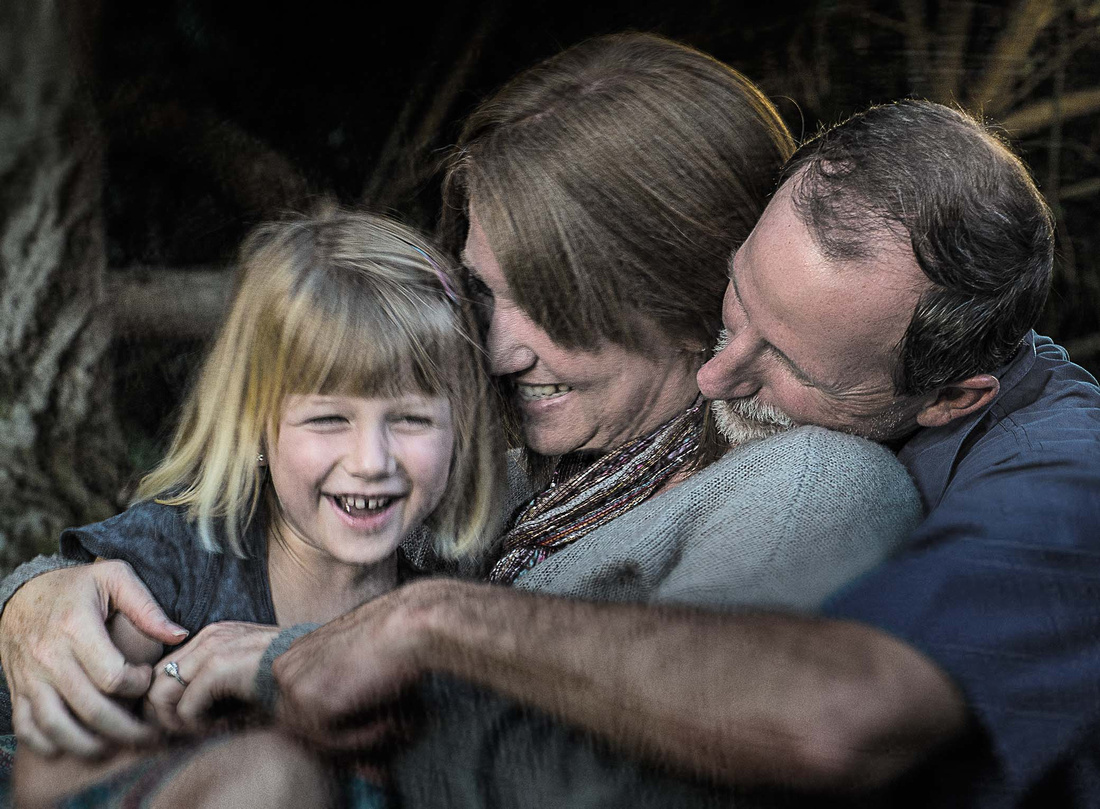 Copyright Karl Shreeves 2012
Copyright Karl Shreeves 2012
Okay, you've decided to hire a photographer for . . . well, for whatever. How do you make sure you'll get photos you love? It's actually easy if you do one thing: Be absolutely, positively sure that it is fun and rewarding for the photographer.
Sure, I'm a photographer so you'd expect me to say that, but it really is in your best interest as the client. Creativity thrives on enthusiasm and a positive energy or flow. A fun, rewarding experience nutures photographic creativity (and vice-versa), which means you get more photos you like. Fair enough, but if you don't know anything about professional shooting, how do you make sure it's fun and rewarding? Here are some DOs and DON'Ts to that end:
DO give the photographer control. Let the photographer decide what lighting to bring, or not. After all, if you know how to do it, why did you hire a photographer? The more control you give the photographer, the better you will like the shots.
DON'T restrict the photographer, but DO express real limitations. That is, don't say "You can't bring a tripod," but assuming it's true, do say, "We'll be in a very small room full of furniture and people, so there won't be a lot of space." The photographer will ask you more questions about it as appropriate.
DO let the photographer choose where to shoot, and to the degree possible, who to shoot. DON'T tell the photographer how to do the job because the photographer may do what you say, resulting in you getting what you asked for, which you will hate. DO express real concerns, like "Please don't let that sign in background show -- it's an ad for our company's strongest competitor!"
DO offer suggestions that the photographer can build upon, and DO let the photographer know what you want, such as "I'm looking for a romantic shot of my son-in-law and daughter having a quiet moment," or "We really want shots of the bride and groom's first dance." DON'T criticize individual shots. It's the digital age, and many shots are steps toward THE shot. With a professional, these images won't survive the first pass through the edit software. DO, however, speak up when you see something you love, so they don't get deleted.
DO give the photographer as much time and flexibility as you can in posing, locations and light choices. DO invite your photographer to bring one or more assistants. DO tell the photographer your time limitations, but DON'T tell the photographer how to use the time available.
DON'T tell the photographer not to pose people or bring in lighting, unless its an event that makes it completely inappropriate to do so (like an inauguration or something).
DO hire the right photographer. If you want wedding shots, look for a photographer's whose portfolio has lots of wedding shots you like. If it is a journalistic event, hire a photojournalist. If it's lifestyle/fashion, hire someone who shoots lifestyle/fashion. DON'T hire a photographer to shoot something that photographer clearly doesn't enjoy shooting or shoot well. How can you tell? If a type of photography is conspicuously absent from a portfolio, or it's there but you don't like the shots, don't hire that photographer for that type of photography.
If you read my cover bio, you know that I don't shoot weddings. Generally, I don't like shooting them (there are exceptions, during which I require multiple days, a lot of control and I'm expensive), but I will for close friends and family. And yes, I do a good job, even though it's not my favorite type of shooting.
]]>
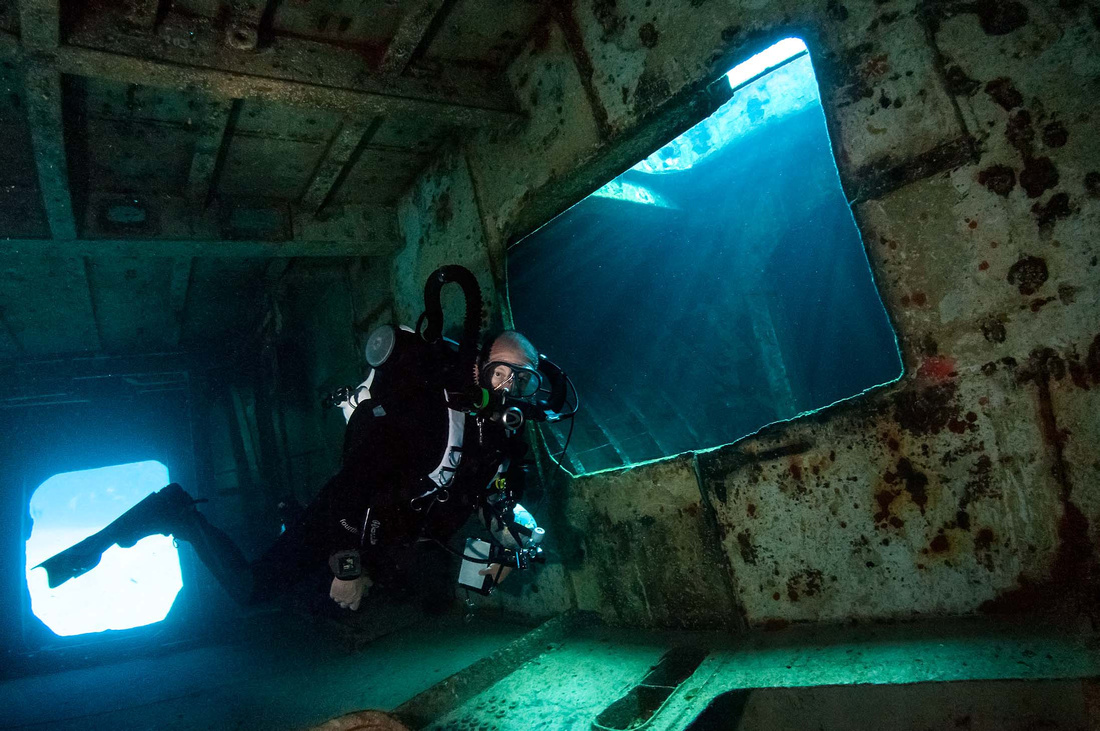 Copyright PADI 2012
Copyright PADI 2012
In this shot, my friend Kevin Gurr is using a Beta version of the soon-to-be-released Explorer rebreather (which he designed and developed). He and I are both wearing rebreathers, which is significant because this shot would have been impossible with conventional, open-circuit scuba that releases bubbles.
This shot required rebreathers because it took several minutes and more than 20 frames to get the balance between the exterior light streaming in and my strobes where I wanted it. During that time, Kevin and I had to remain completely still, or we would have stirred up sediment that would have obscured the shot and made it look like a snow storm. With open-circuit scuba, our bubbles would have scoured silt off the ceiling, causing the same problem as it rained down on us, no matter how still we remained. But, rebreathers put out few bubbles.
BTW, hardcore wreck divers will notice that Kevin doesn't have the guideline that you usually have inside a wreck, nor three dive lights. While that would normally violate safe diving practices for overhead environments, this particular wreck in Grand Cayman has been intentionally placed and "safed" for recreational divers. For general purposes (but not training purposes) most of its interiors are considered swim-throughs, not overhead environments, because they are wide open, have lots of light, and you are never more than a few feet from an exit, like you see here. Otherwise, we'd definitely be following light and line protocols!
]]>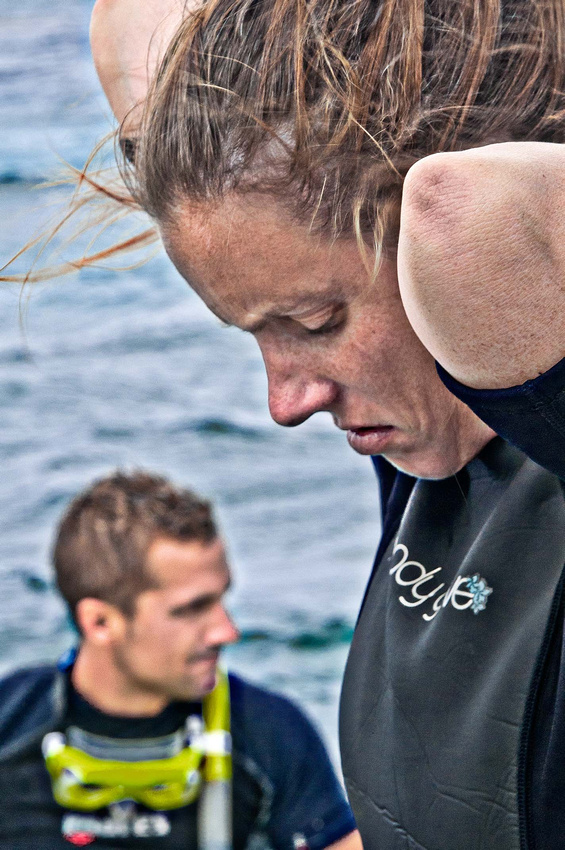
Copyright PADI 2012
Most of the images in my portrait gallery came about because we set out to shoot a portrait. With some that's obvious, but with others, it's not. The "it's not" type may be still be planned much as you see it, but others are happy "accidents." This one falls in the latter category -- a portrait that came about because we were shooting something else, but I saw a portait opportunity and shot. As in this example, it's not even one of the intended models or subjects (the secondary subject is though), which happens often. Most attempts fail, but some pan out, so I find it's always worth shooting first and deciding to keep or delete later.
This particular shot isn't unflattering, though it's not flattering either. But, it's genuine and it tells you something about the main subject, what she does and where she is. In post, I normally avoid the halo that can come up with some sharpening techniques. Although it's a bit artificial and obvious, in this case I like it because it pulls the main and secondary subject out of the background.
]]>
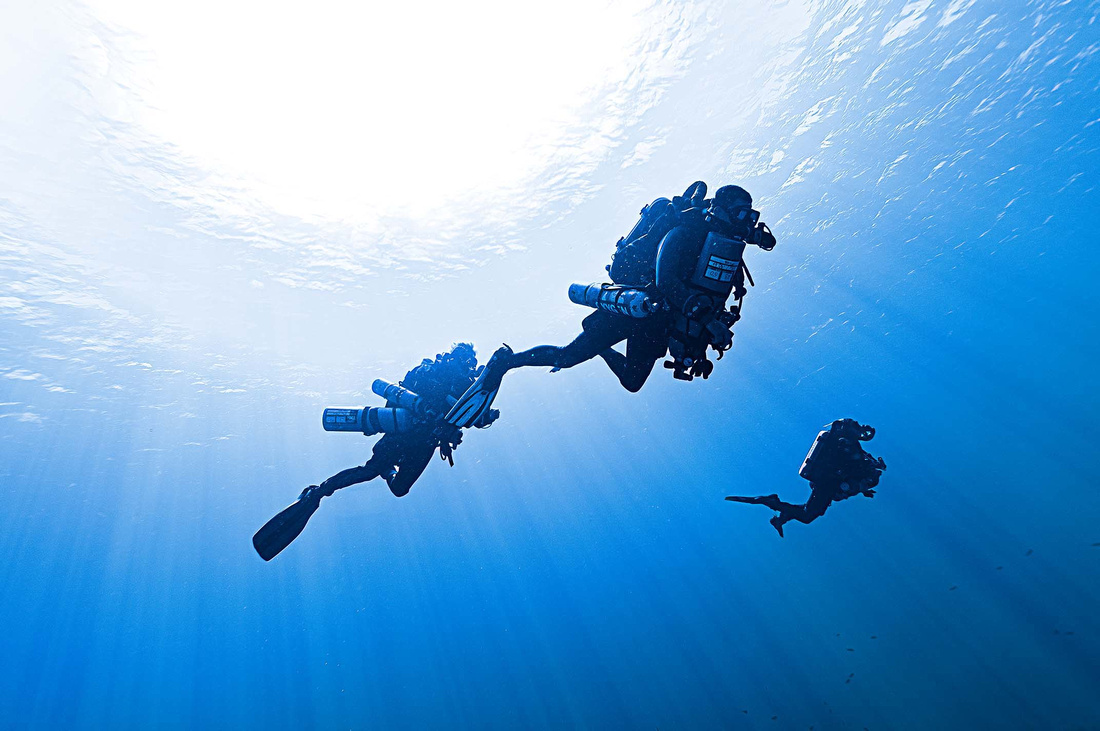 Copyright PADI 2012
Copyright PADI 2012
This past weekend I was on a dive boat and overheard someone commenting that in the film era, you had to be a skilled photographer, but today with digital, "anyone can take great photos."
Really? Then why don't they?
There's no denying that digital imaging puts new, better tools in the hands of photographers. The potential for the average person to take superior images is greater than ever, to be sure. It's reasonable to speculate that today shooters produce far more high quality finished images than in the film era.
But, it appears that the proportion of professional-quality finished images is declining. Digital imaging has indeed made it easier to take photos, and to take them in mass, but more doesn't mean better. You only need to click through Facebook and Flickr to see that the overall quality of the average snap (in terms of lighting, composition, retouching and creativity) is no better than in the film era. In fact, you could argue that the ability to bang off 200 images without having to reload the camera or pay for the processing has lowered, not raised, the average image quality.
Even in the digital age, good photos require dedicated effort: planning, lighting, vision, skilled execution and post-processing. As well, the expectation of a professional image is higher than in the film era, thanks to the affordability and accessibility of retouching technologies.
Digital imaging has made imaging more abundant, but it has not turned everyone into good photographers.
]]>
 Copyright PADI 2012
Copyright PADI 2012
Sometimes you get a shot that would have been very difficult to execute intentionally. In this image, I was following the model through the water-air interface to capture a post-dive expression of satisfaction, and grabbed this frame just before she surfaced.
Of course, being "lucky" has a whole string of caveats -- being in the right place at the right time with the right equipment aimed for the right composition and set for the right exposure and the right focus. This is why experienced photographers are "lucky" more often than the laws of large numbers and chance would dictate.
]]>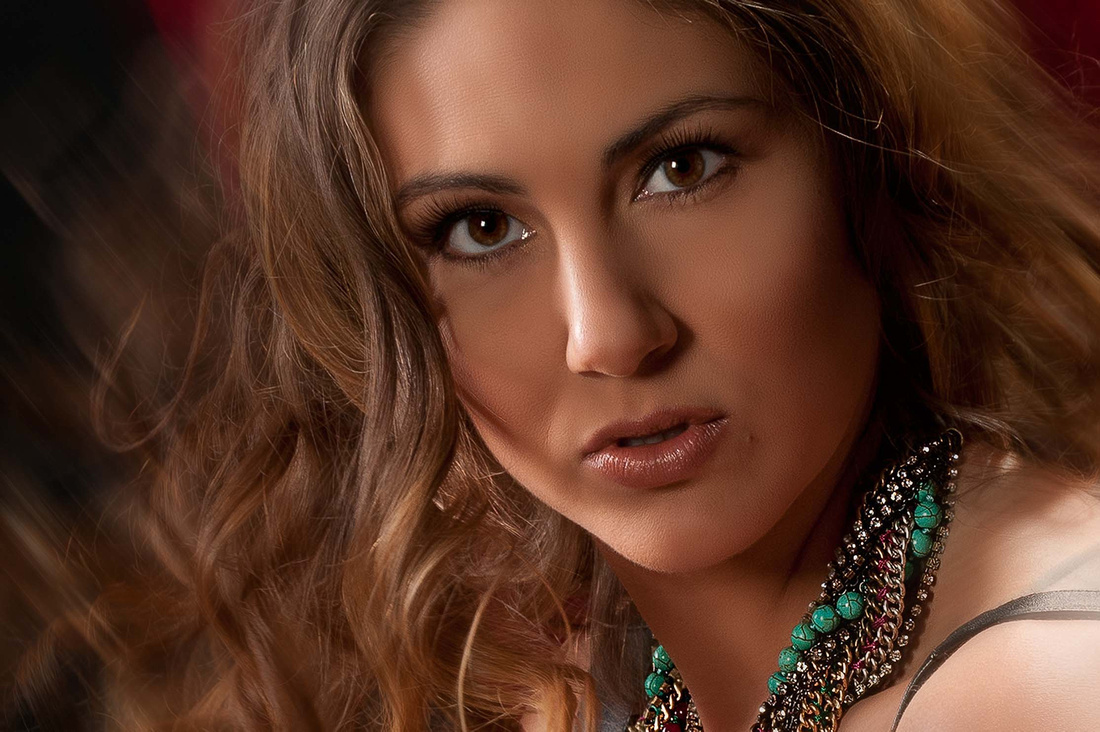
 Copyright Karl Shreeves 2012
Copyright Karl Shreeves 2012
Unless you're someone who shoots and retouches, you probably don't recognize the work that goes into images you see in Vogue, W, Elle and so on. I don't get to shoot as much fashion as I would like, but I apply fashion style shooting and retouching to portrait and lifestyle imaging, as appropriate. Fashion imaging is the cutting-edge of still photography and sets the bar for the photo profession. Twenty years ago, retouching wasn't expected except at the high end because it was expensive and difficult. Today it is the standard of practice for most forms of professional photography.
This is from a studio shoot a couple months ago in which we featured Stella & Dot jewelry (this was not commissioned by Stella & Dot, but the model is a Stella & Dot stylist).
If you're into fashion, by the way, check out www.socialbliss.com. It's a Pinterest style site devoted to fashion collection by member contributors. Dr. Kristen San Jose Shiele is a consultant on the social bliss project -- and also happens to be the model in this image. Jump to stelladot.com for some high end costume jewelry that's making its rounds in high fashion and the Hollywood set.
]]>
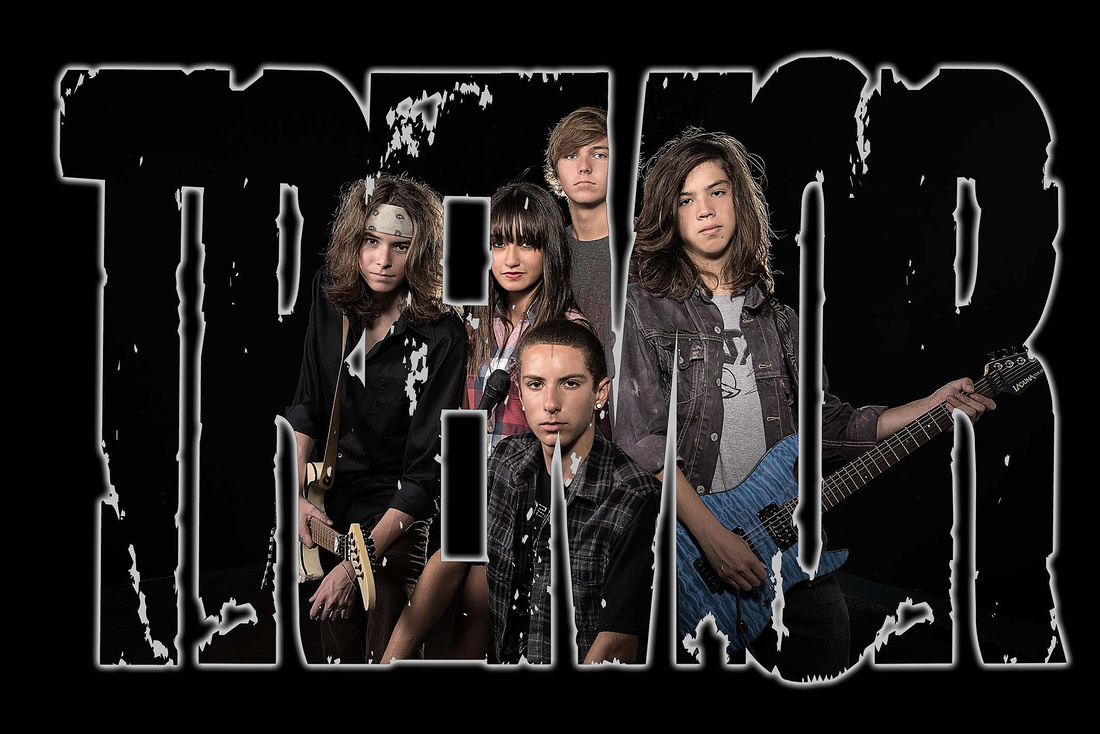 Photo Copyright Karl Shreeves 2012
Photo Copyright Karl Shreeves 2012
I don't have a musical bone in my body, but I admire those who do, and I enjoy their work. Recently, I shot an up-and-coming teen band, Tremor -- check out my Portraits gallery for more. It was a lot of fun and they're great, enthusiastic young people. (Update: The group is no longer together, but I was great shooting them.)
Update March 2015
Although Tremor is no longer together, lead guitarist Casey Moreta (extreme left) has gone on to two acclaimed rock bands. Shortly after leaving Tremor, he began playing with alternative rock group Cherri Bomb, a popular band that already had releases available, when one band member left and he was invited to join them. After working together for a bit over a year, the foursome decided that they needed a new direction, so they disbanded Cherri Bomb. A few months later, they re emerged as a new pop/rock band, Hey Violet. Since announcing the new band, direction and name to their fans vis á vis Cherri Bomb, Hey Violet has released covers that have been popularly received, with their release of original music awaited with anticipation.
]]>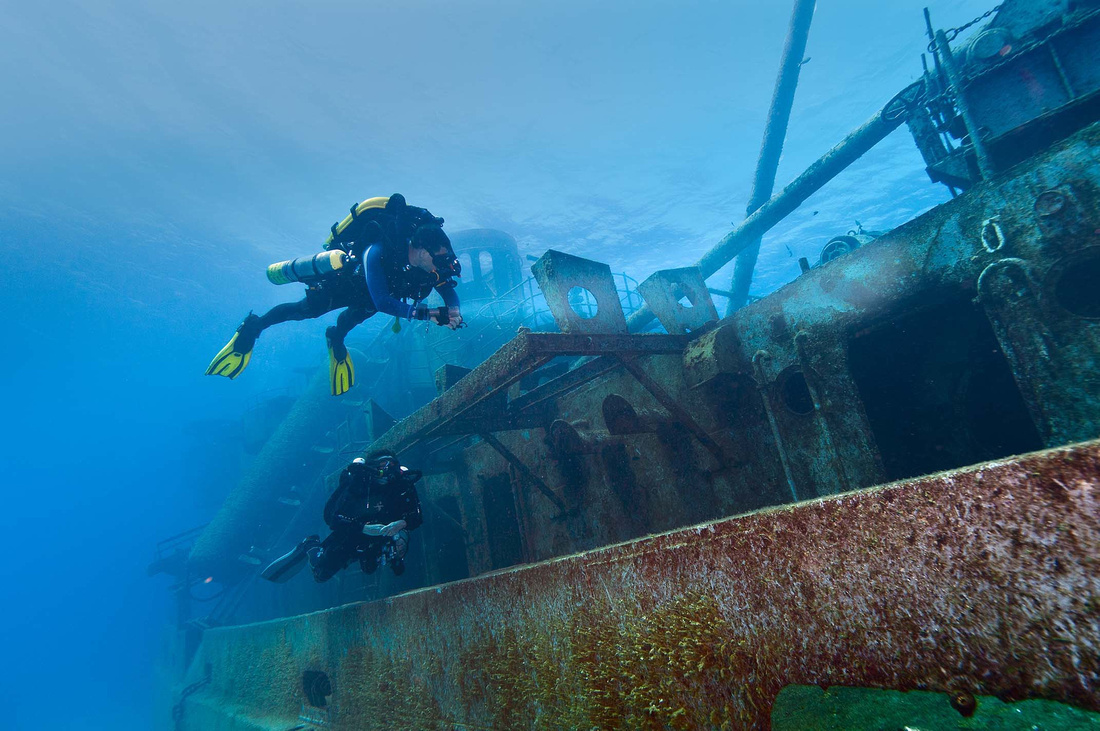

Copyright PADI 2012
I got into photography through underwater photography in the late 1970s. Since then, there have been two major innovations for shooting underwater: digital, and closed-circuit rebreathers (CCRs).
Digital imaging eliminated the limit of 36 photos before you have to surface, open the housing and reload the camera. In that era, I sometimes worked with an assistant on the boat to whom I would hand the housing. The assistant would rinse it, open it, pull out the camera and exchange it for another one (identical model) with a fresh roll in it, then reseal it. While I shot the next roll, he unloaded and reloaded the camera.
On my first production shoot with a digital camera, I did on a dive what used to take a day.
With digital imaging, UW shooters are limited to their life support -- how long their air lasts and other limits. With conventional scuba using as single cylinder, this means you have no more than an hour -- typically less. More recently, serious divers are using CCRs, which recycle your breathing gases and optimize the oxygen-nitrogen ratio. Without getting into technical details, with CCRs, dives of two or three hours aren't unusual. The image above was taken on a 2+ hour dive while on location in Grand Cayman.
My first production shoot with a CCR repeated the experience I had when I switched to digital: I did in a dive what used to take a day. I estimate that with respect to underwater shooting, using the combination of digital/CCR (assuming your models are using CCRs) we have an efficiency factor of around 9. That is, we do in one dive what used to take us 9 dives in the film era.
]]>